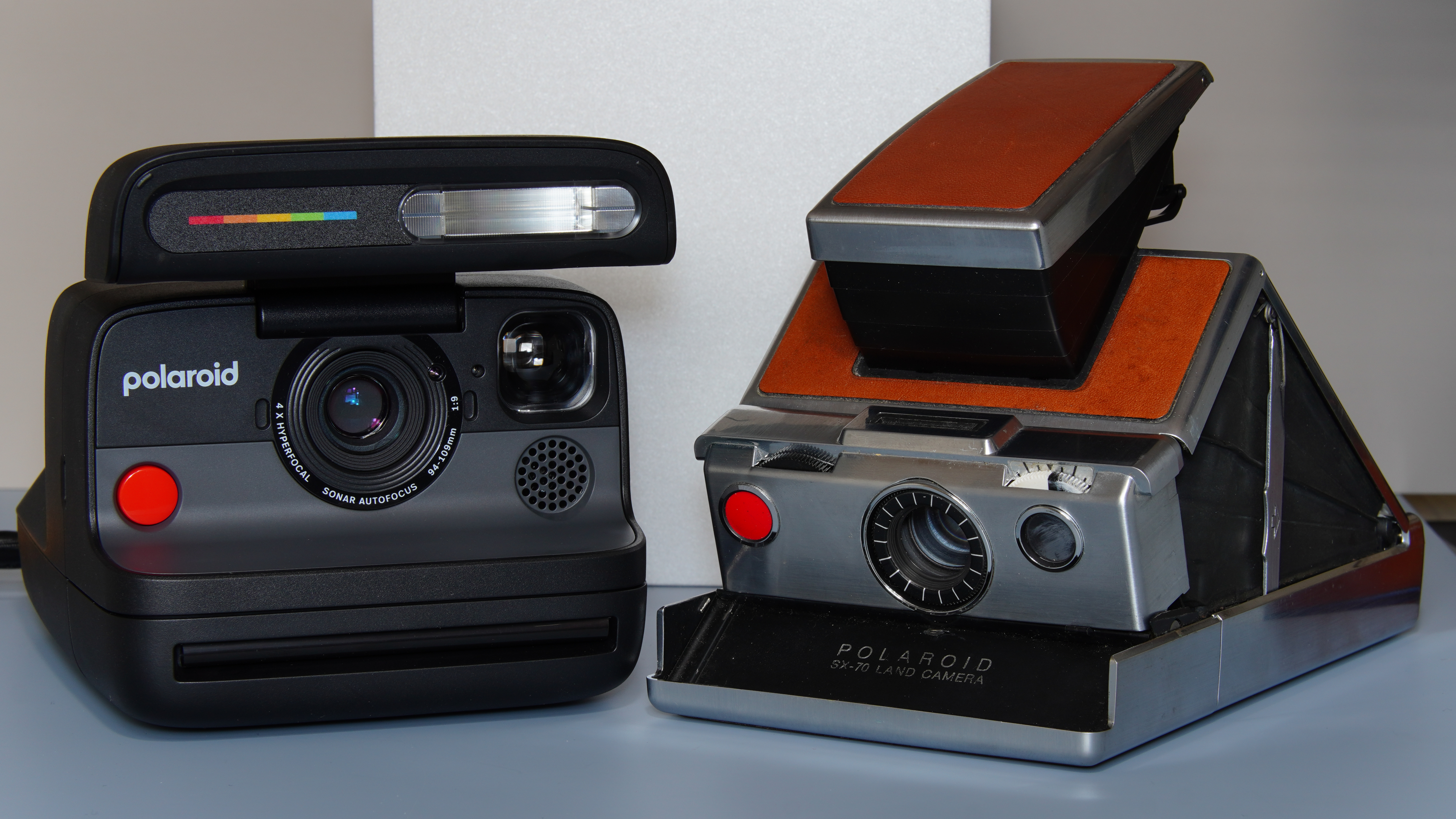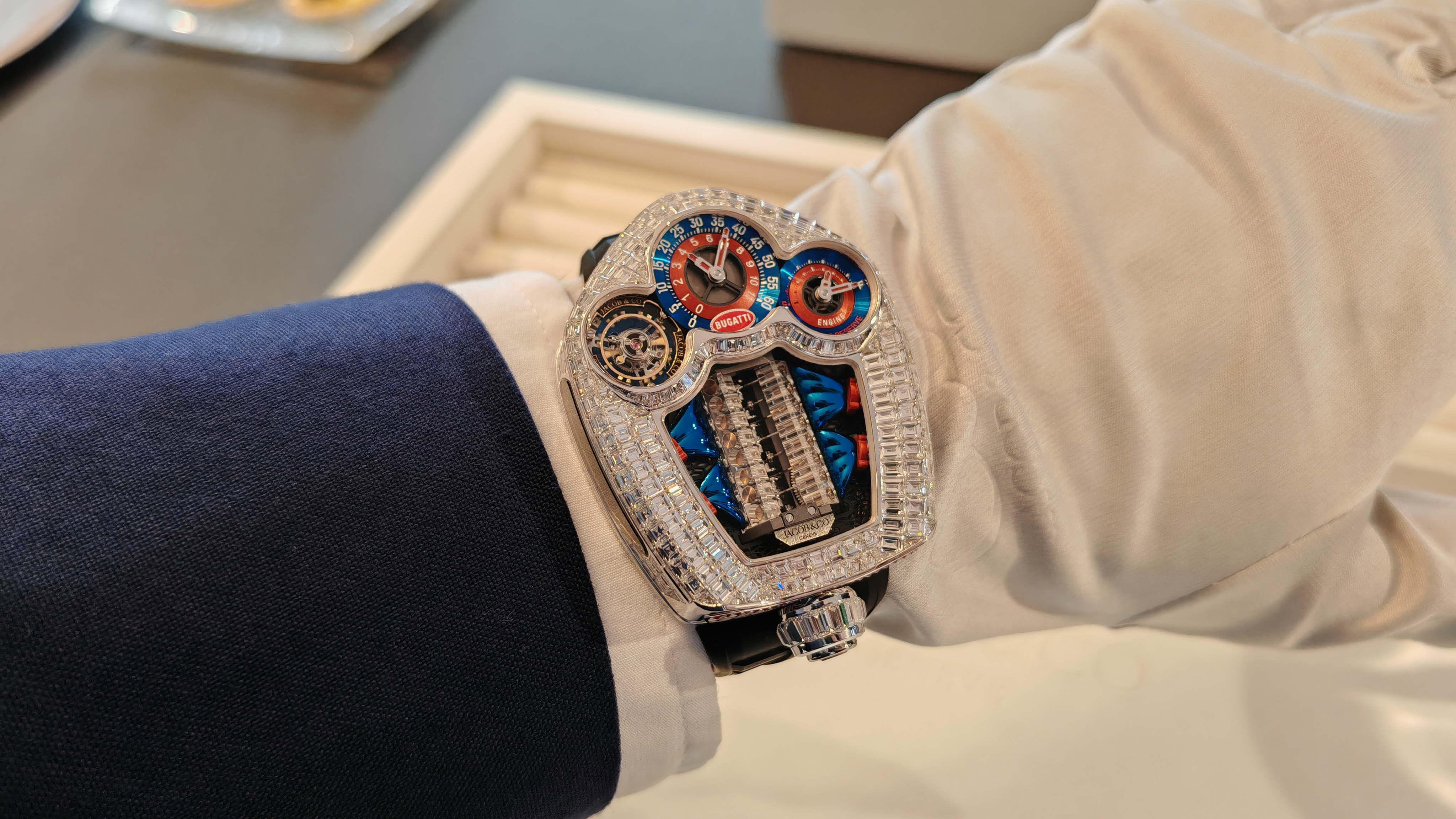Best folding phones 2025: Jump Menu
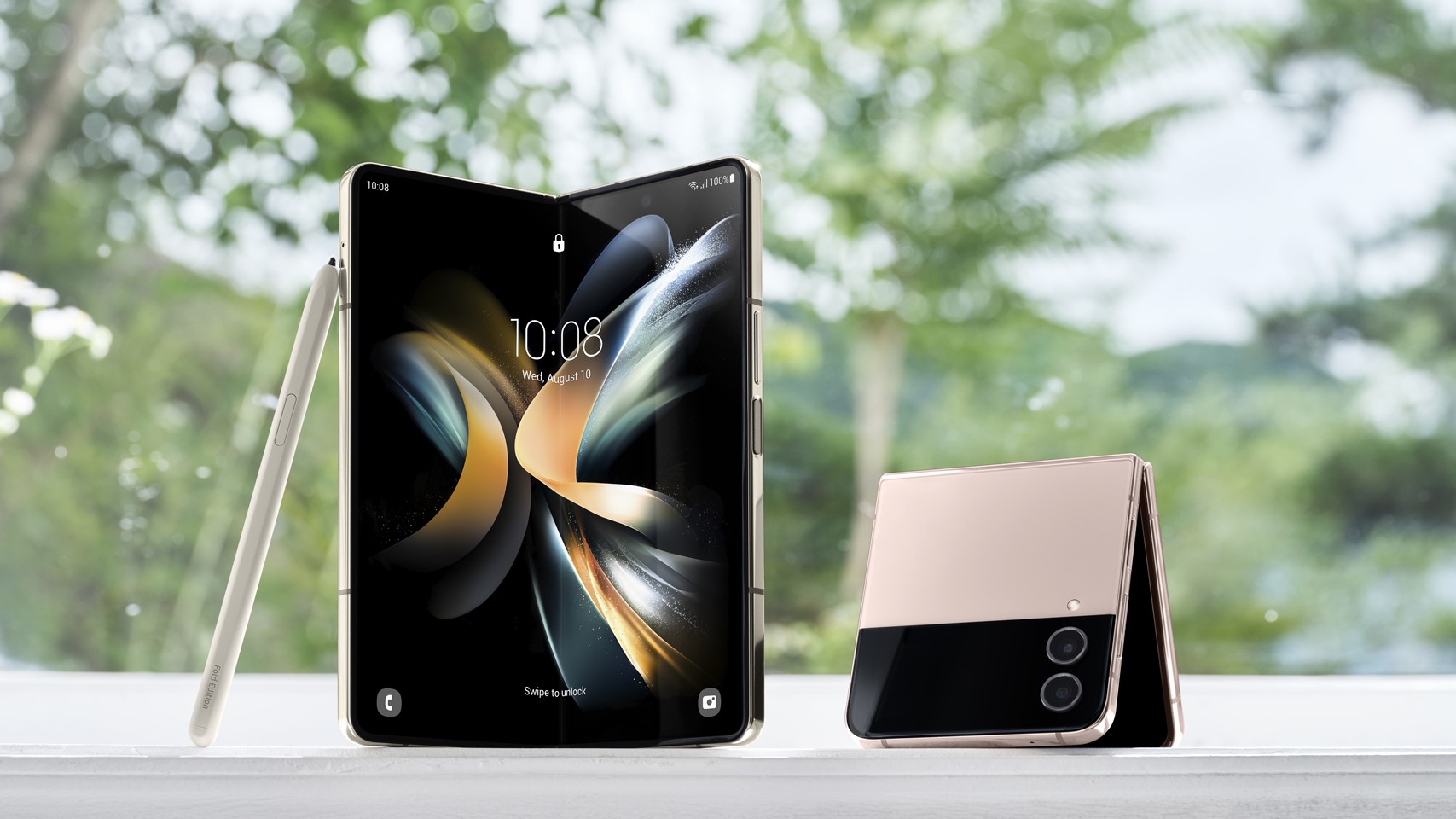
00. The list in brief ↴
01. Best for most: Samsung Galaxy Z Flip 5
02. Best premium: OnePlus Open
03. Best affordable: Samsung Galaxy Z Flip 3
04. Best cover display: Motorola Razr 40 Ultra
05. Best if priced right: Samsung Galaxy Z Fold 5
06. Best wide display: Google Pixel Fold
07. Best slender design: Honor Magic VS
08. How to choose
09. How we test
Lately the best foldable phones have gone from being unreliable and expensive to dependable and more affordable (well, in some cases anyway!). The technology has improved rapidly thanks to research and development efforts – and now a lot more people can actually consider buying a folding handset as a viable alternative to the typical best phones of today.
You'll find a couple of different form factors to choose between: book-like ones that open up to reveal a bigger tablet-sized screen; and clamshell-like ones, which typically house an at-a-glance cover display, but then can be flipped open (hence 'flip phones') to form a more regular-sized screen in a more traditional phone-shaped design. They're very different propositions, both of which we'll get into in this guide.
If you're in the market for one of the best folding phones in the world then you've come to the right place. Here are the handsets genuinely worth considering, as tested and rated, so you can find the best foldable phone for you – and across a wide range of budgets from genuinely affordable to top-tier luxury!
T3 Top Picks
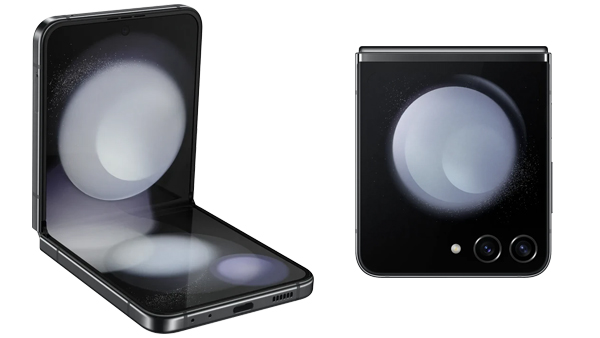
Best overall flip phone
Samsung's 2023 flagship flip phone is the best designed of its kind, and ups the cover display ante with a new, larger panel than its Z Flip 4 predecessor. Its Motorola key competitor (below) has a larger and more functional cover display, but it's not as well-built a device.

Best premium foldable
Taking the previous Samsung Z Fold 5's winning spot, the OnePlus Open is a no-turn-missed foldable. It's got incredible cameras, the best folding mechanism with least crease, and it looks particularly impressive. The larger front screen than many competitors will appeal to many buyers too.
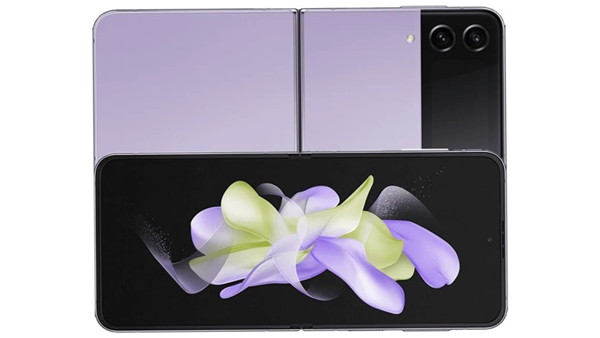
Best affordable flip phone
It might have a far smaller cover display than its two follow-up devices (Z Flip 4 & Flip 5), but it's also got a much smaller price tag as a result. The internal display is the same across all three models, so no compromise there if that's what matters most to you.
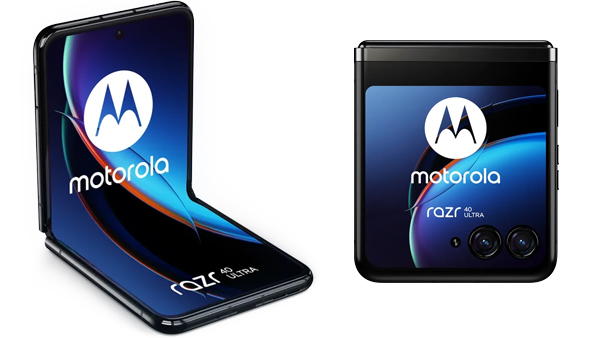
Best cover display
A strong Samsung Z Flip 5 competitor (above), this Razr has the largest cover display of any flip phone right now. It's also the most functional of any clamshell too – with full app access as you please – making it a most versatile foldable option.
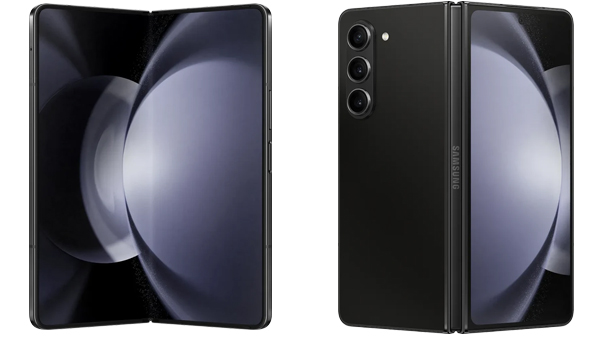
Best if priced right
Samsung's flagship foldable will be considered the best of any foldable to many, given its accessible software. Its established design adds even brighter screens than its Z Fold 4 predecessor. Its price is naturally higher, though, so unless money is no object then, for now, the OnePlus or its predecessor will serve you splendidly.
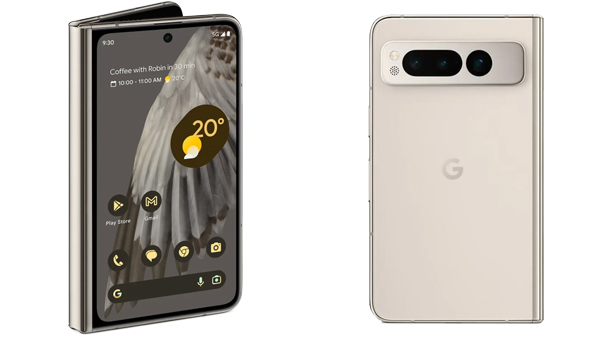
Best wide display
If the Samsung Z Fold series' skinny front display isn't ample for you then Google's take in its first foldable is for a much larger, more traditional display – which many users may prefer. It doesn't come cheap, and the panels aren't as bright, but it's a great first try.
Best overall
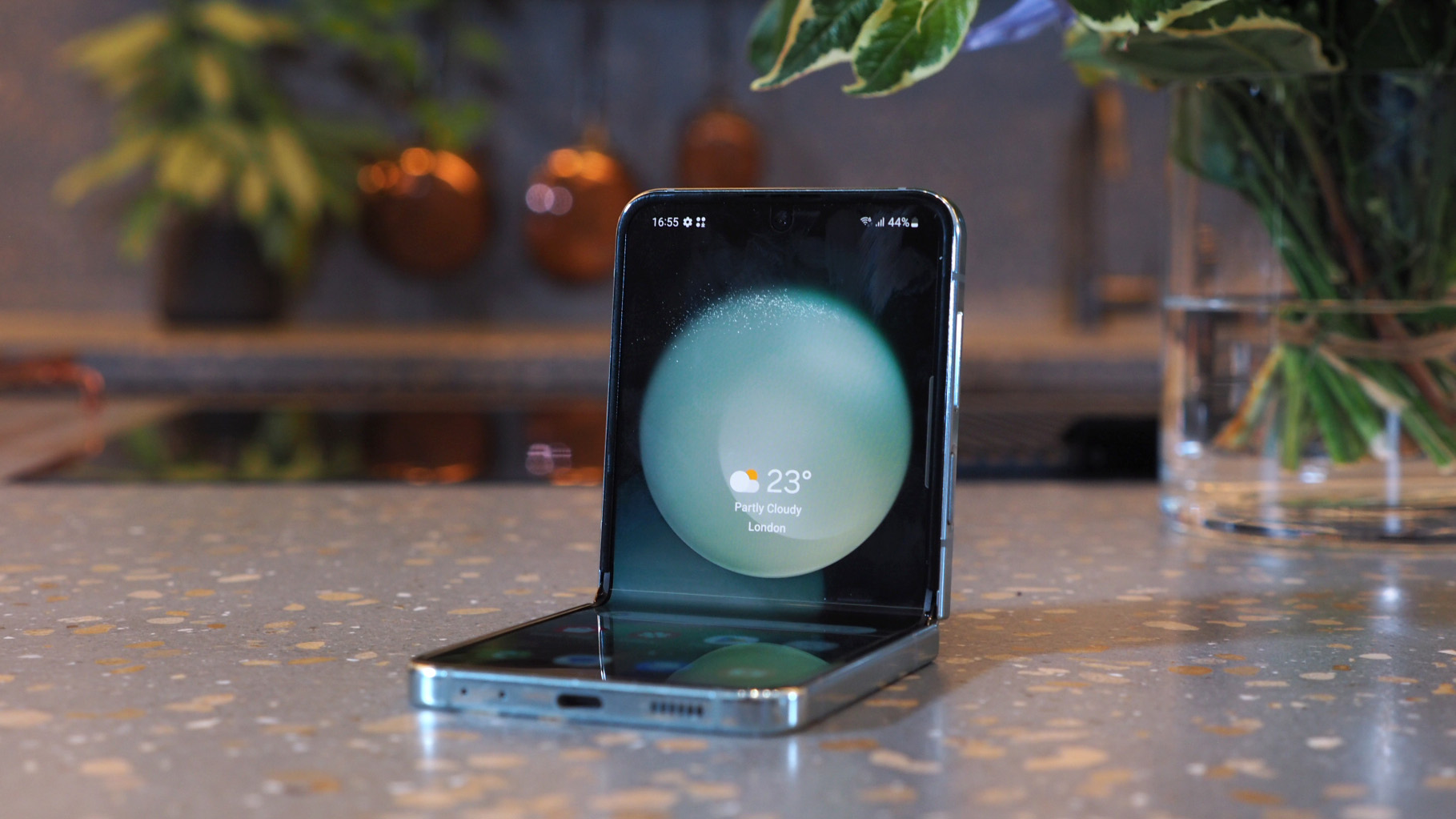
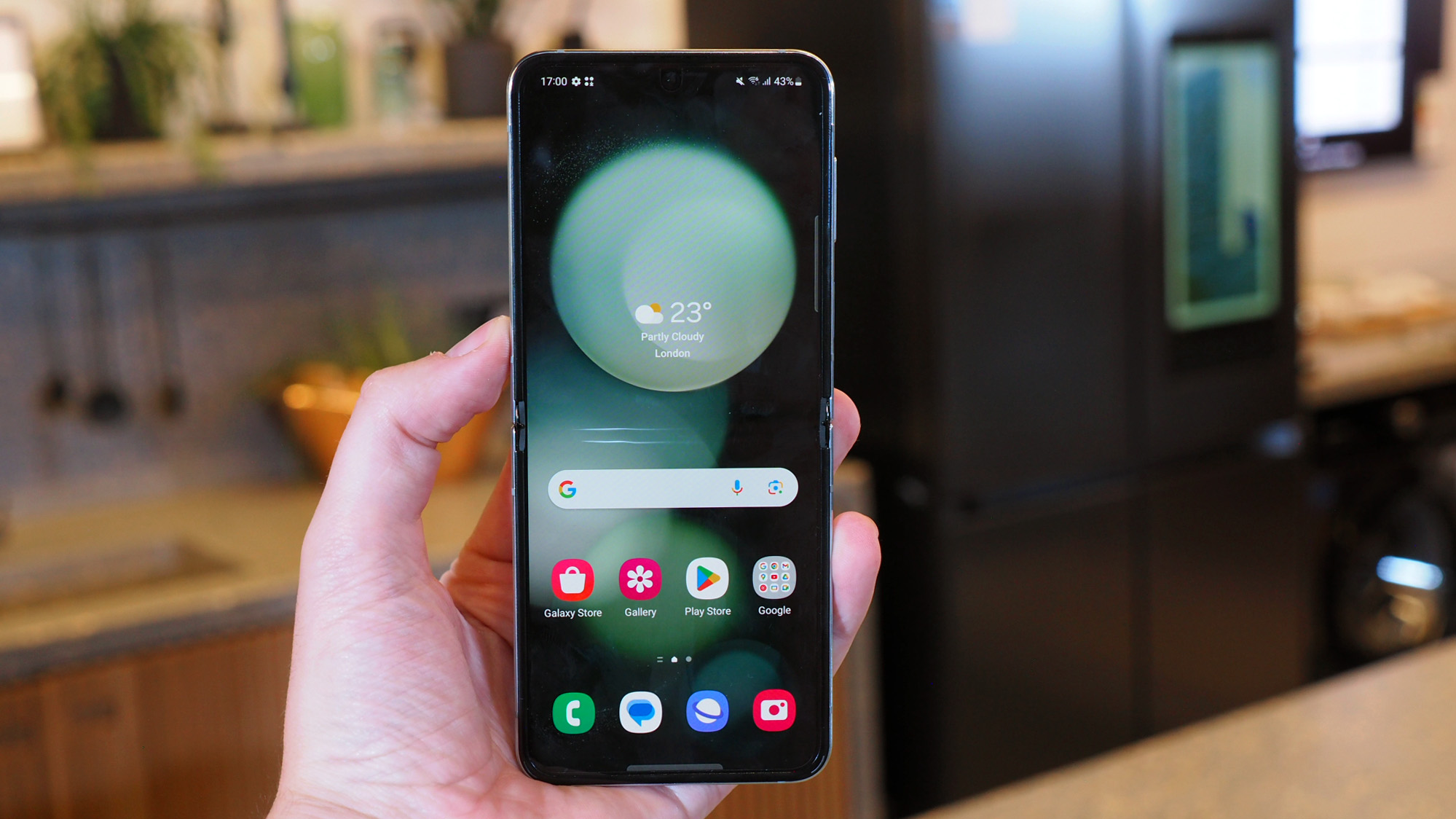
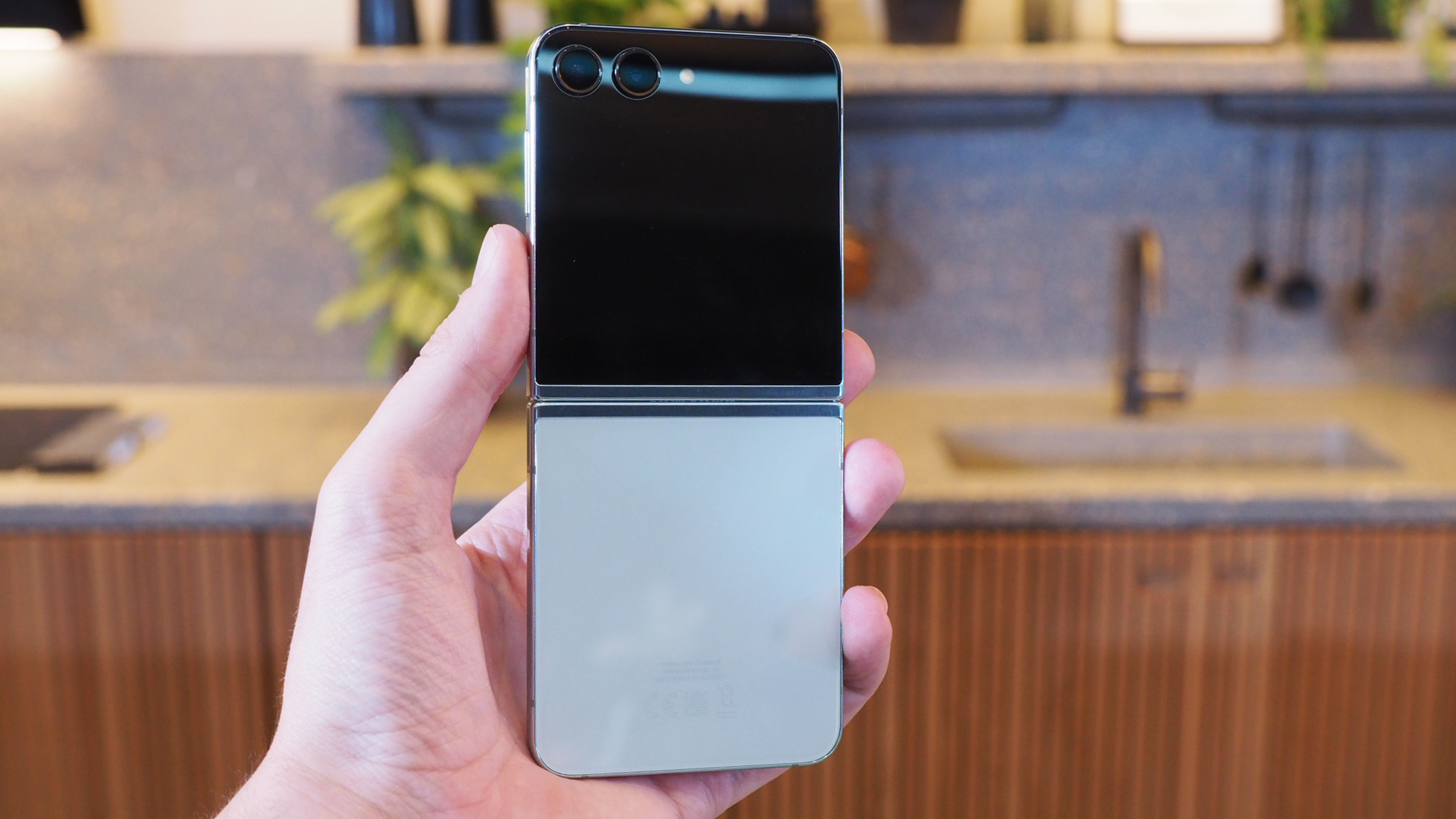
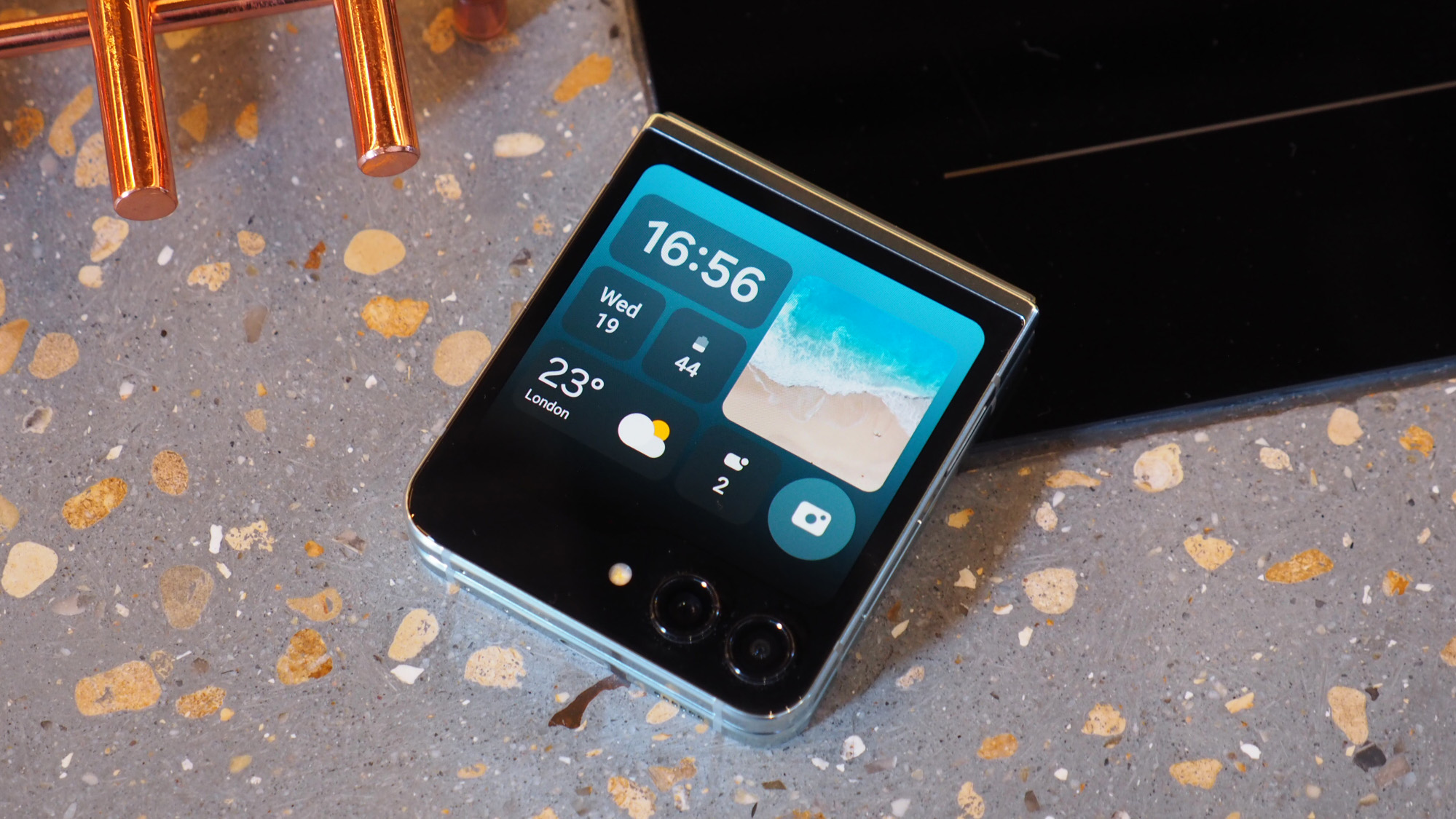
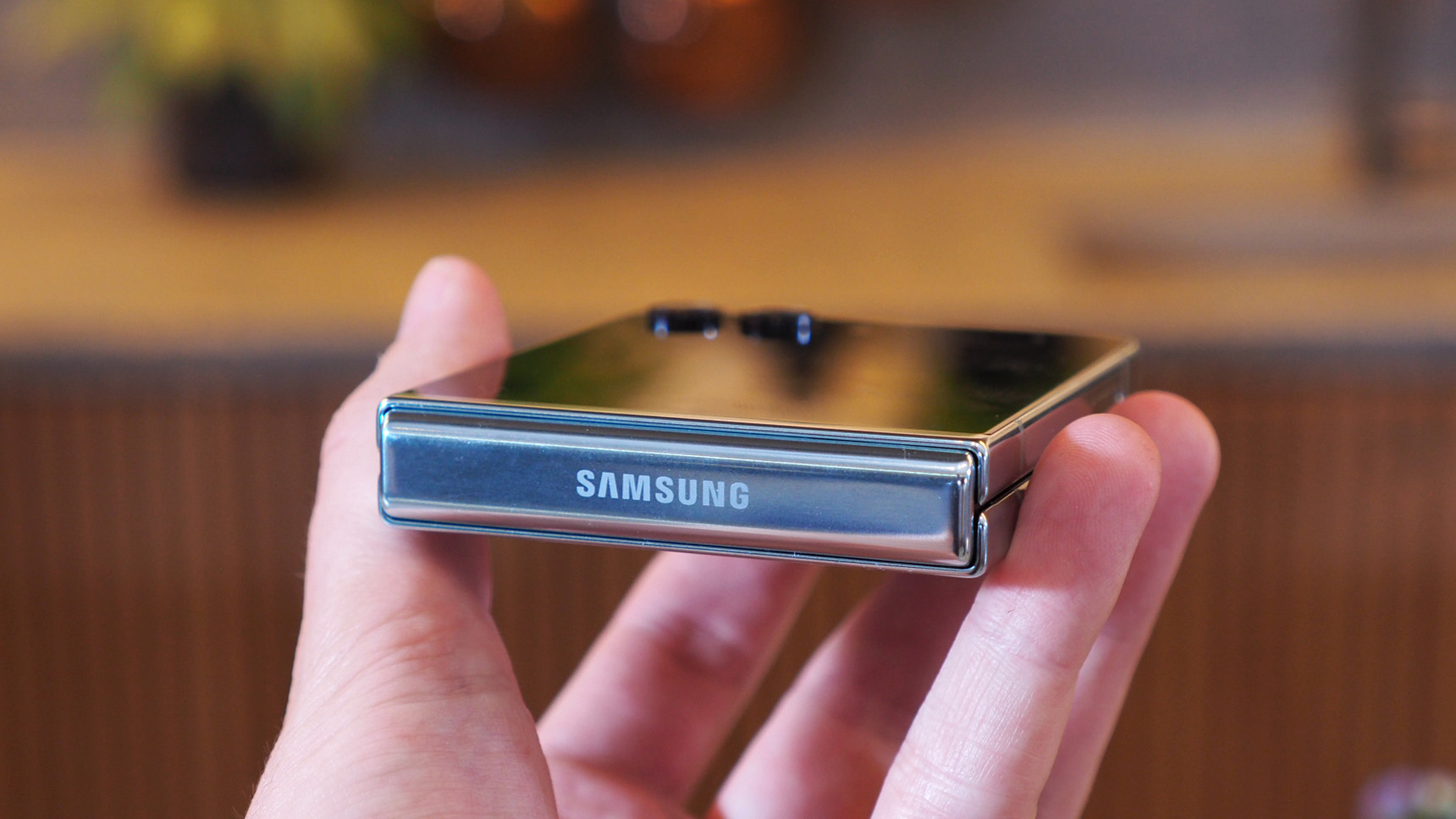
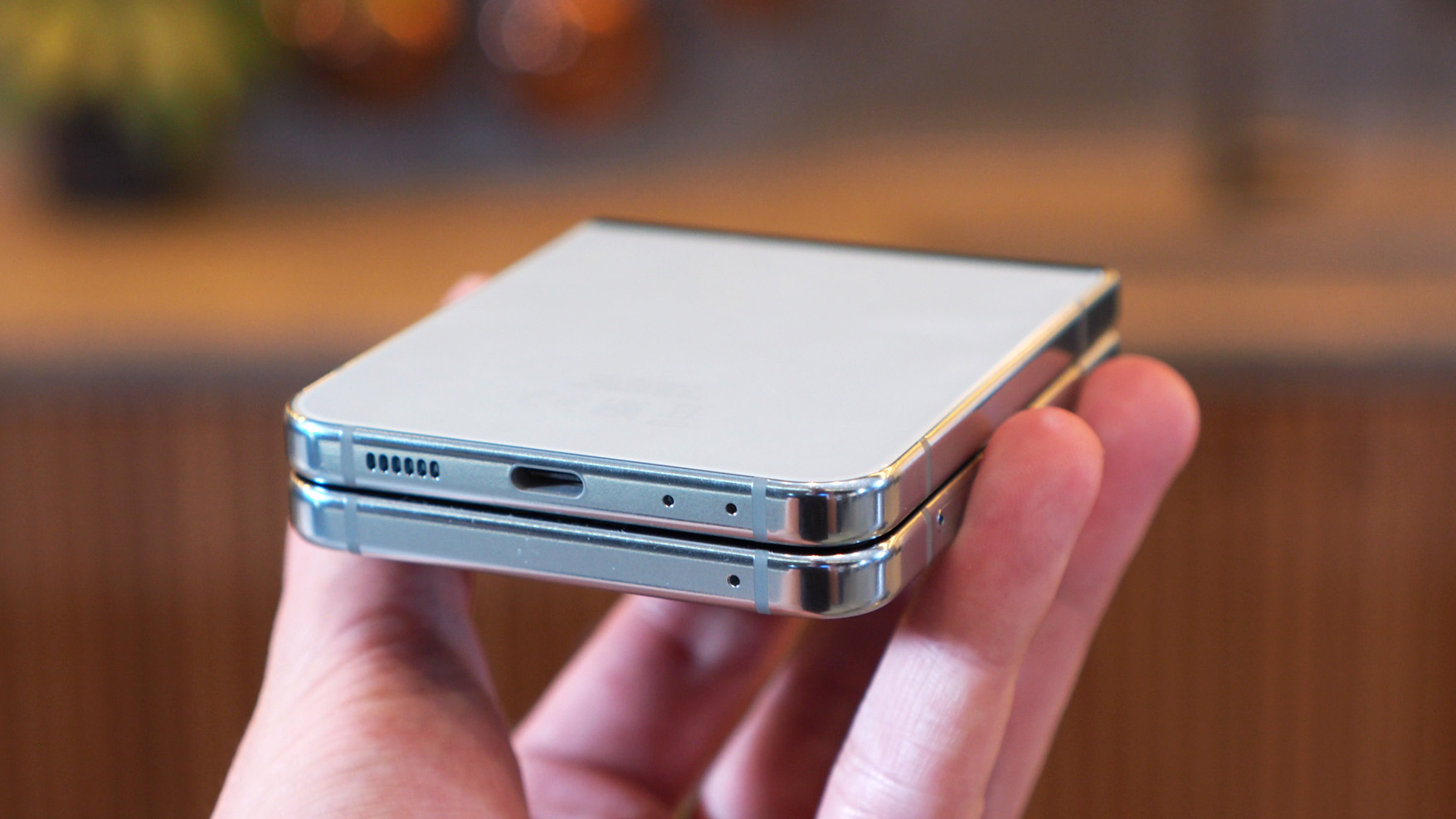
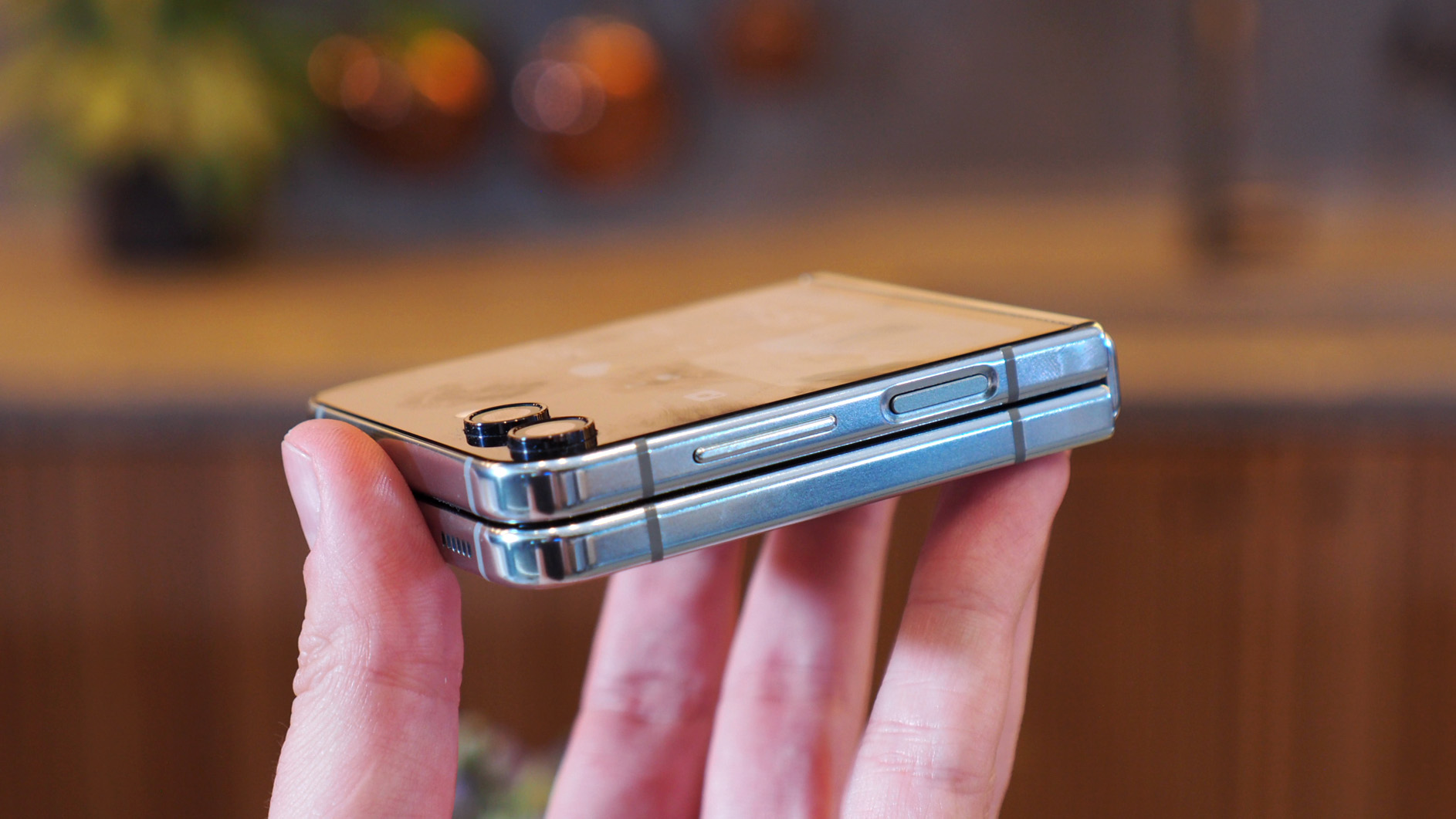
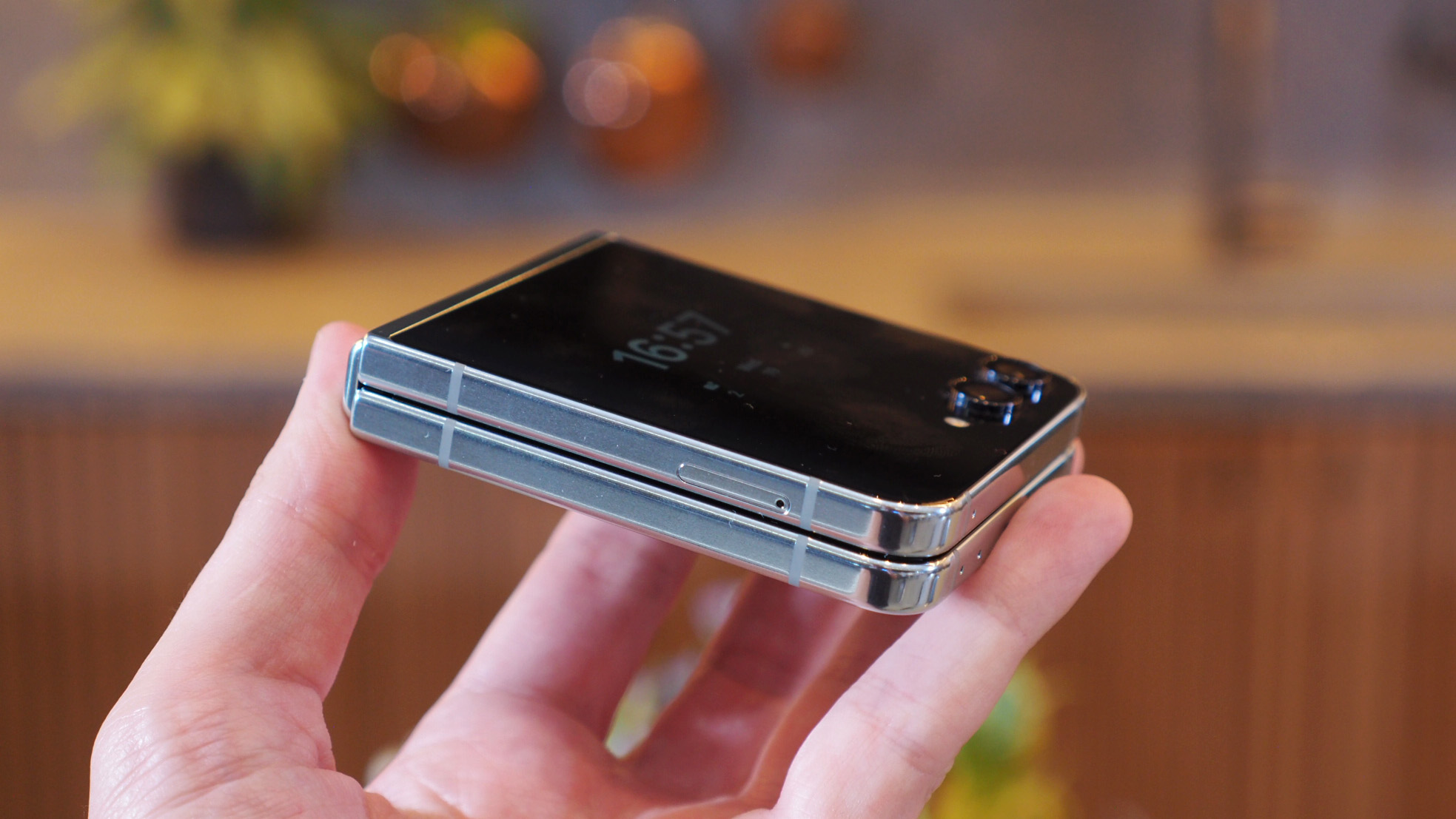
Specifications
Reasons to buy
Reasons to avoid
Buy it if
✅ You want the best flip phone design: the build quality is a step beyond any other clamshell foldable out there; you can just feel it in use over the Motorola (or Oppo) competition
✅ A big cover display is a must: unlike the previous Z Flip 4's 1.9in display, the Z Flip 5 ups this to 3.4in – which fundamentally changes how you'll use the device for at-a-glance notifications and interactions.
✅ A larger foldable is too much for you: sure, the Z Fold (not Flip) 5 looks nice, but it's approaching twice the price of this and it's way, way larger – which won't suit all pockets and purses!
Don't buy it if:
❌ You want to do more up front: the Motorola Razr 40 Ultra's cover display has more app availability and interactivity than this Samsung, meaning greater versatility.
❌ You don't need a large cover display: sure, a 3.4in screen is nice, but if smaller serves your at-a-glance purposes then save a load of cash and get the Z Flip 3 or 4!
❌ You're big into photography: the cameras here are functional, sure, but they're a long way from the best-of-best that you'll find in the best flagship phones (the ones that don't fold, typically speaking).
The bottom line
🔎 The Samsung Galaxy Z Flip 5 is the best all-round flip phone thanks to a great build, larger cover display than its predecessor, great software, and a battery life that lasts surprisingly well considering the size. It's pricier than its Z Flip 3 & 4 predecessors, but that new cover display makes it worth it. ★★★★
The Samsung Galaxy Z Flip 5 certainly has plenty of competition from the Motorola Razr 40 Ultra elsewhere in this guide, but that's a slightly different proposition.
Where the Z Flip 5 earns its stripes is in the overall build quality, which is better than that main competitor, plus Samsung has significantly upped the cover display size (from 1.9in to 3.4in) compared to its Z Flip 4 predecessor.
Design: As noted in our review (full link below) there's a much better feel to the Z Flip 5's hinge mechanism than any other flip phone. That might sound minor, but in a device you'll be flipping open and closed dozens of times a day (and it's kinda satisfying) it's a major part of this design. Add lots of somber yet attractive colour options and this Samsung looks the part too.
Displays: The 3.4in cover display on the exterior is far larger than the 1.9in one in its Z Flip 4 predecessor, which is far better for at-a-glance use for notifications and interactivity. It's responsive to use, although Samsung is less open with app access than Motorola is, so there's not quite as much you can do in terms of functionality (yet anyway). The 6.7in internal display is great, although like any folding phone suffers from reflections and that central 'crease'.
Performance: With a top-tier Qualcomm Snapdragon 8 Gen 2 processor at its heart, which is tuned for Samsung devices (i.e. it's overclocked) the performance here is second to none, and whether you're using the cover display or flipping open so apps continue on the larger interior one, everything runs super smooth.
Battery: With a small battery (3,700mAh, so around 1,300mAh less than many flagships) don't expect the best longevity ever – our review quotes around 80% used in 14 hours – but as you'll be using the smaller cover display more, this small cell holds up well. Charging, at 25W, isn't the fastest ever, but it's speedy enough to provide 50% battery in 30 minutes.
Read more: Samsung Galaxy Z Flip 5 review
Best premium
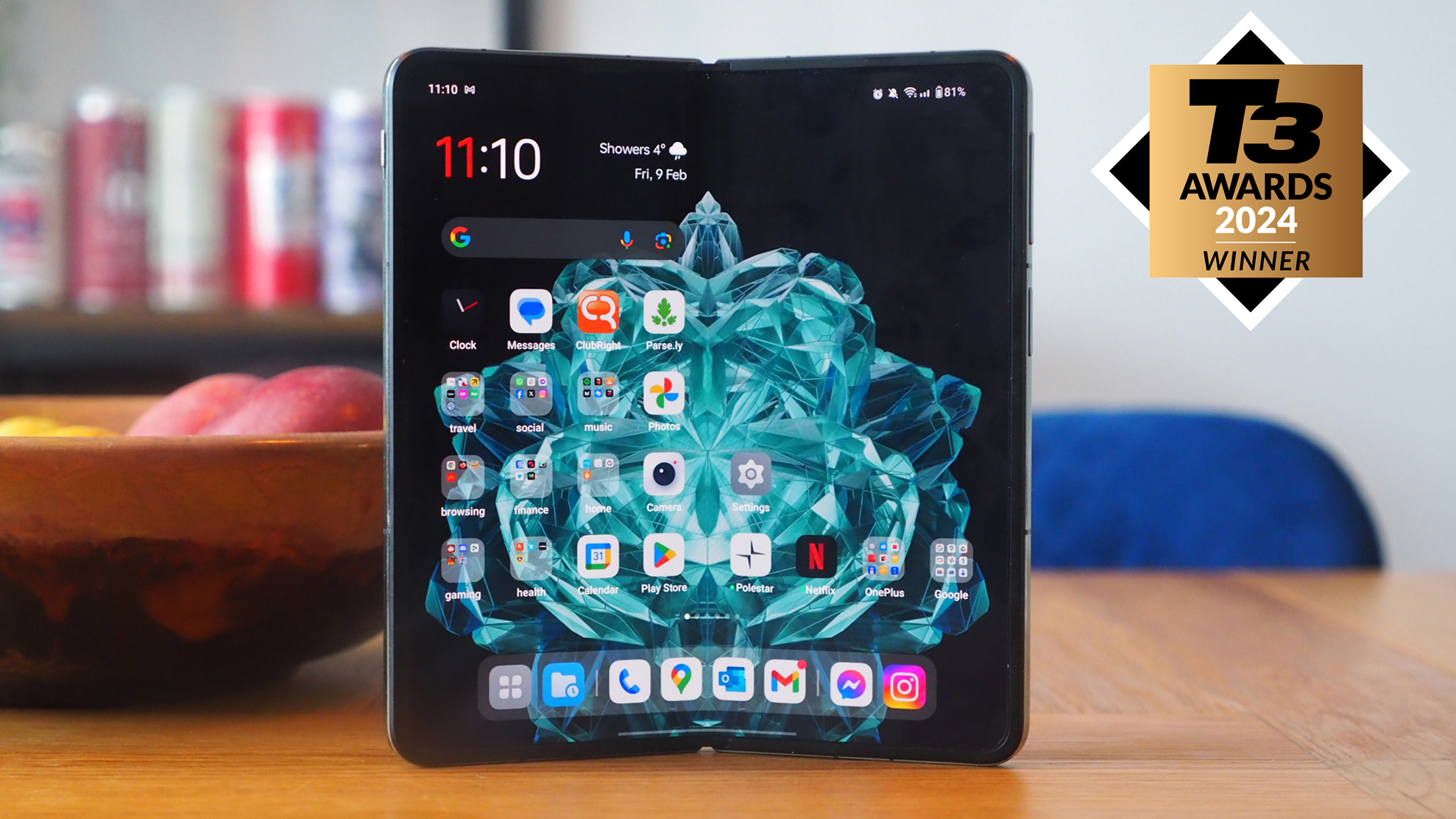
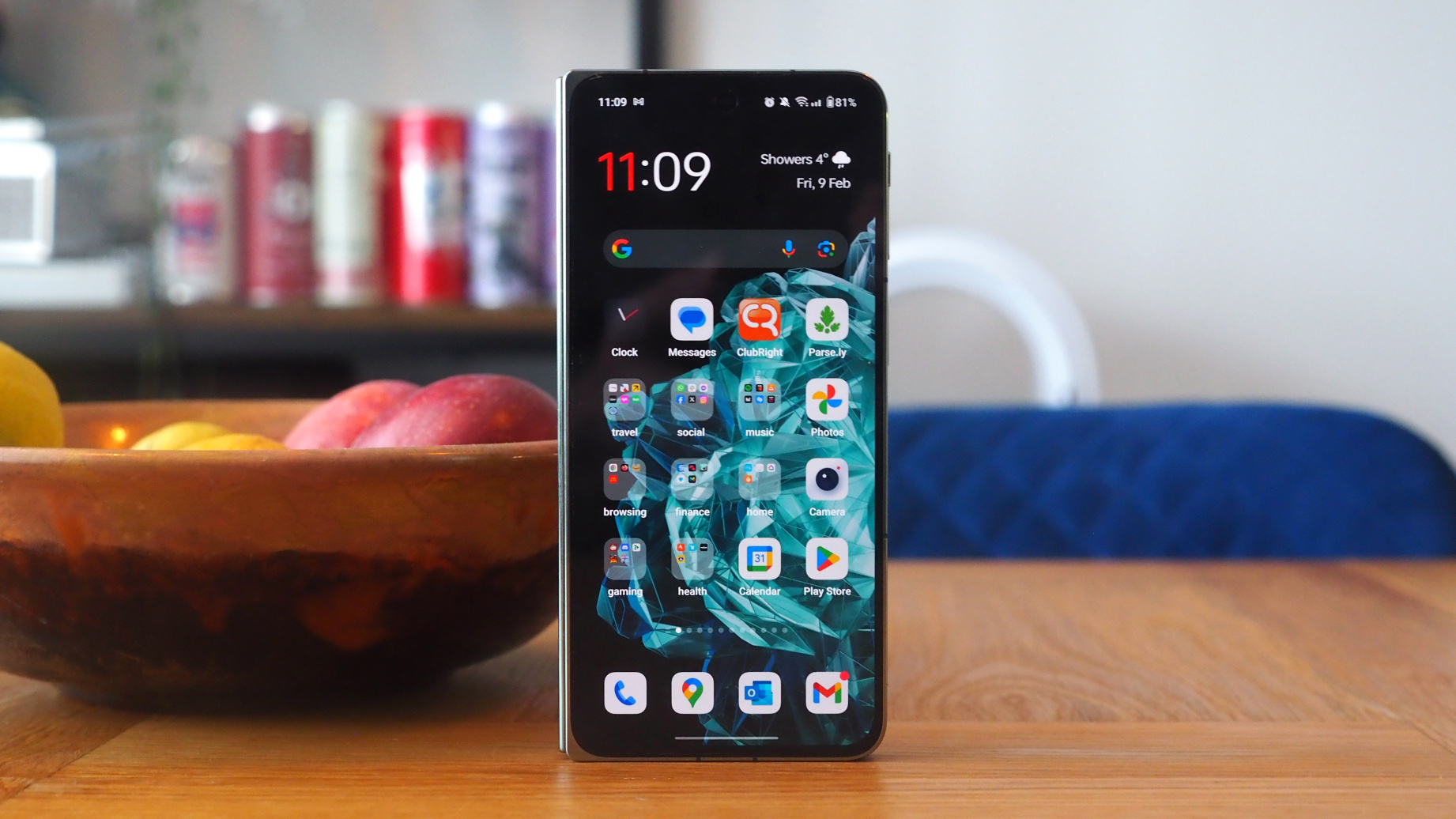
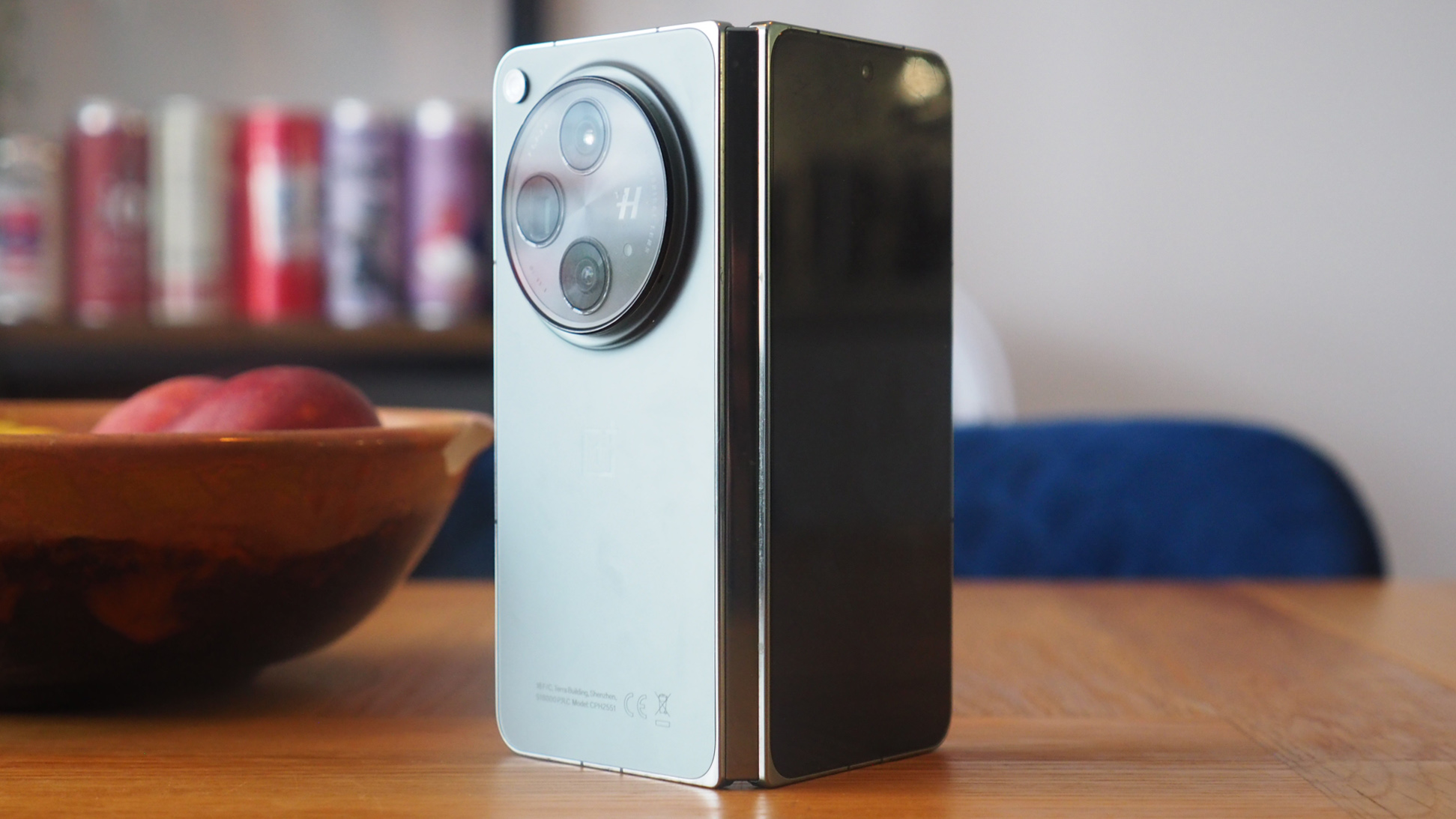

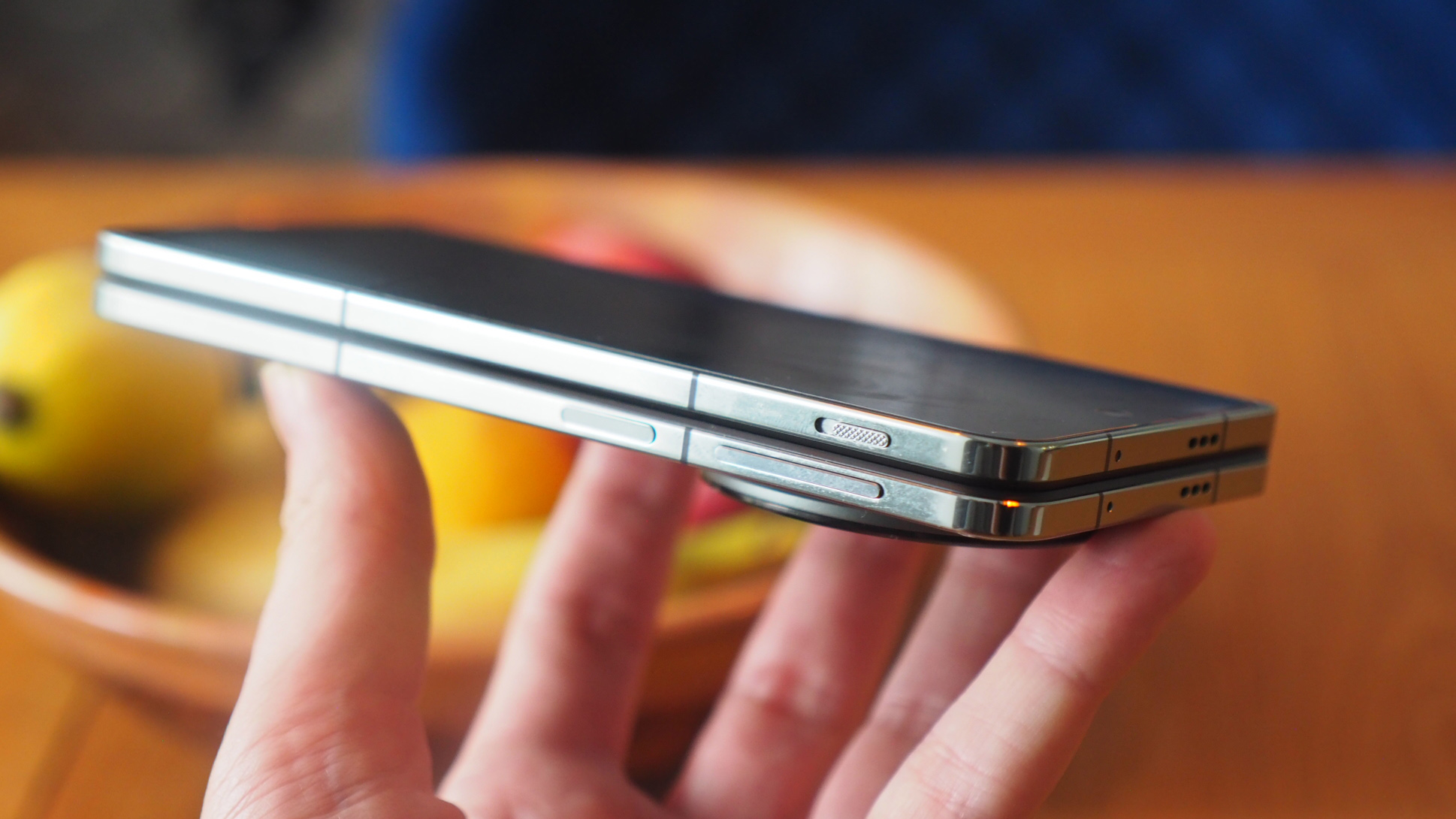
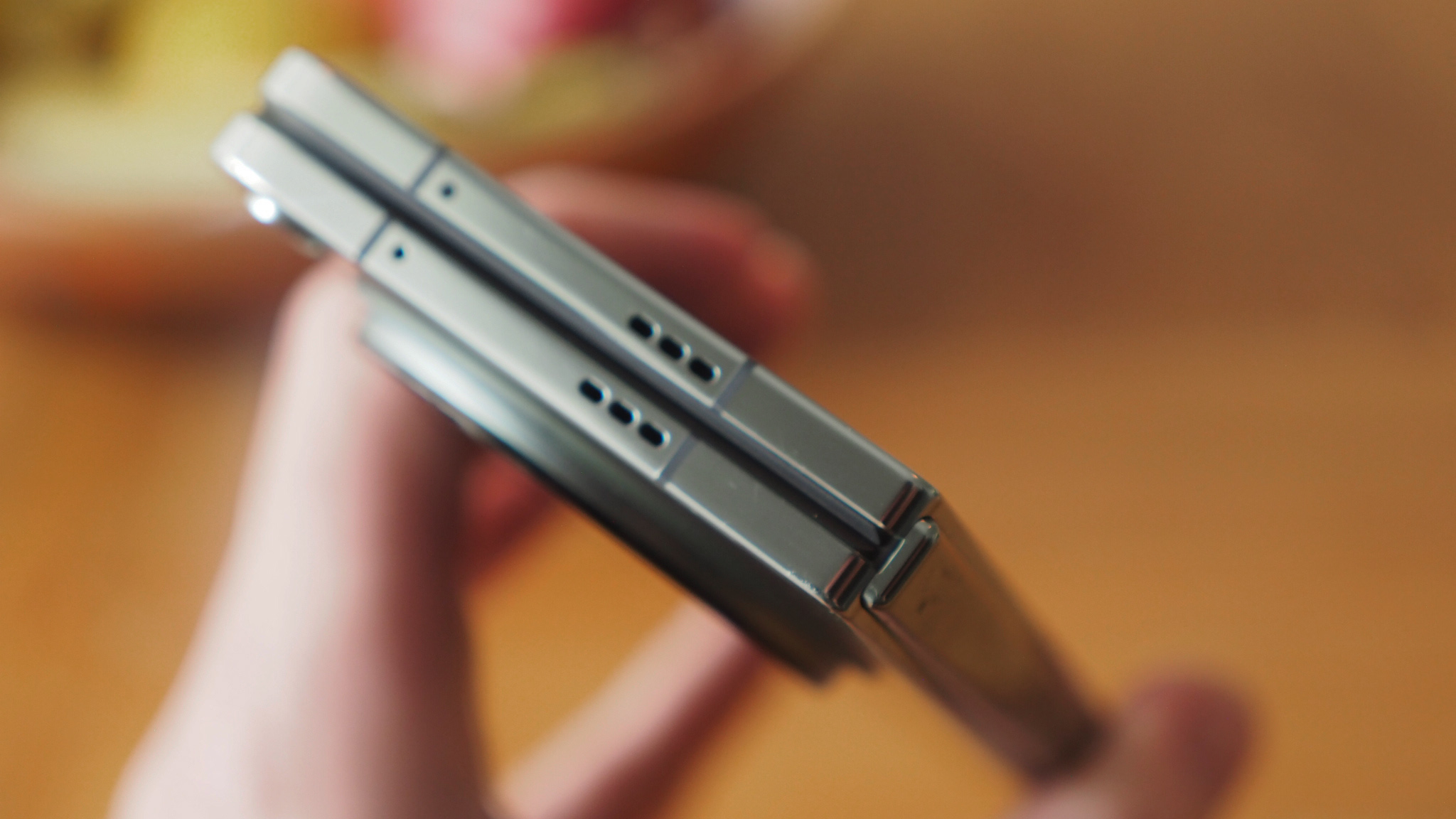
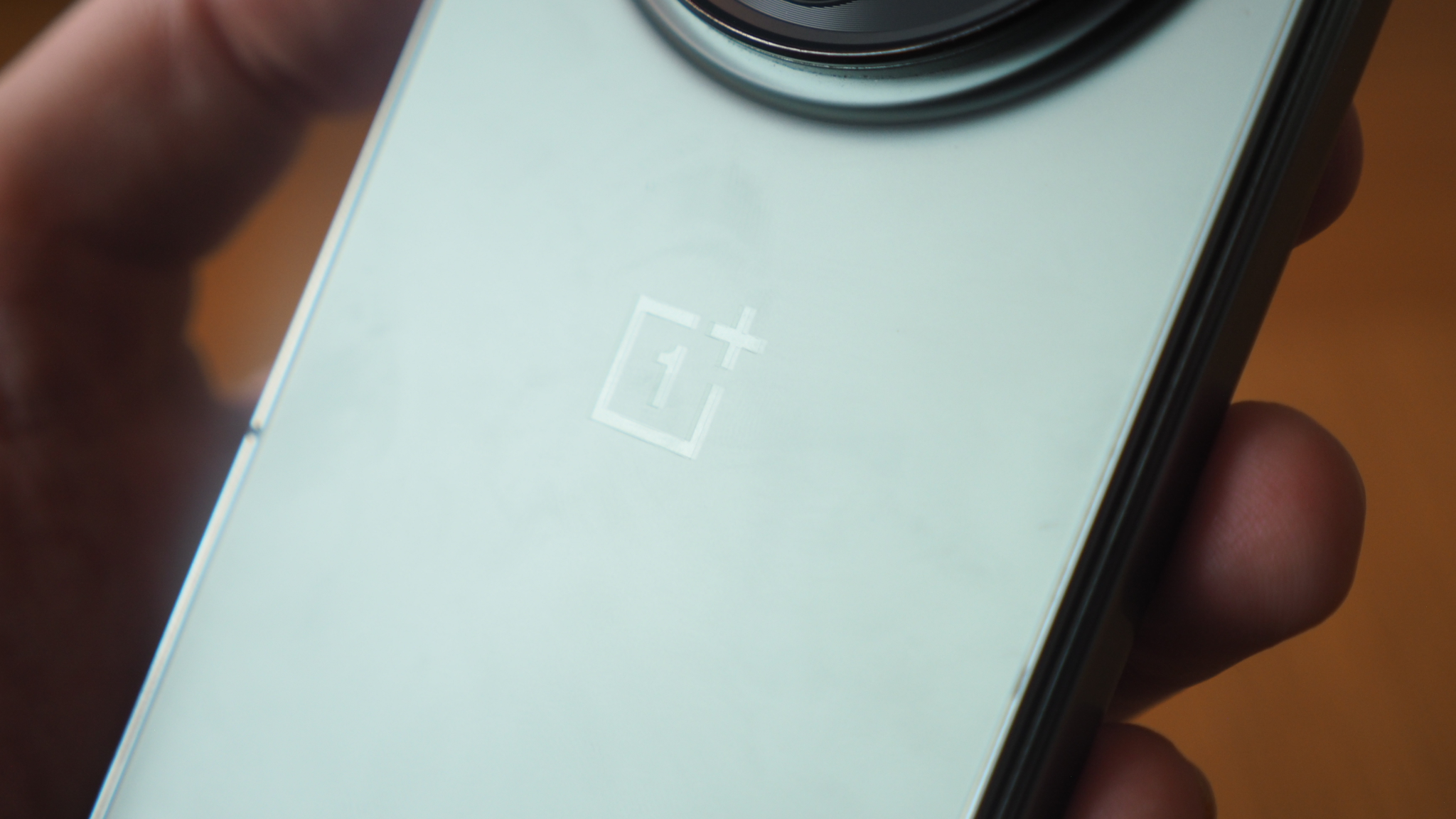
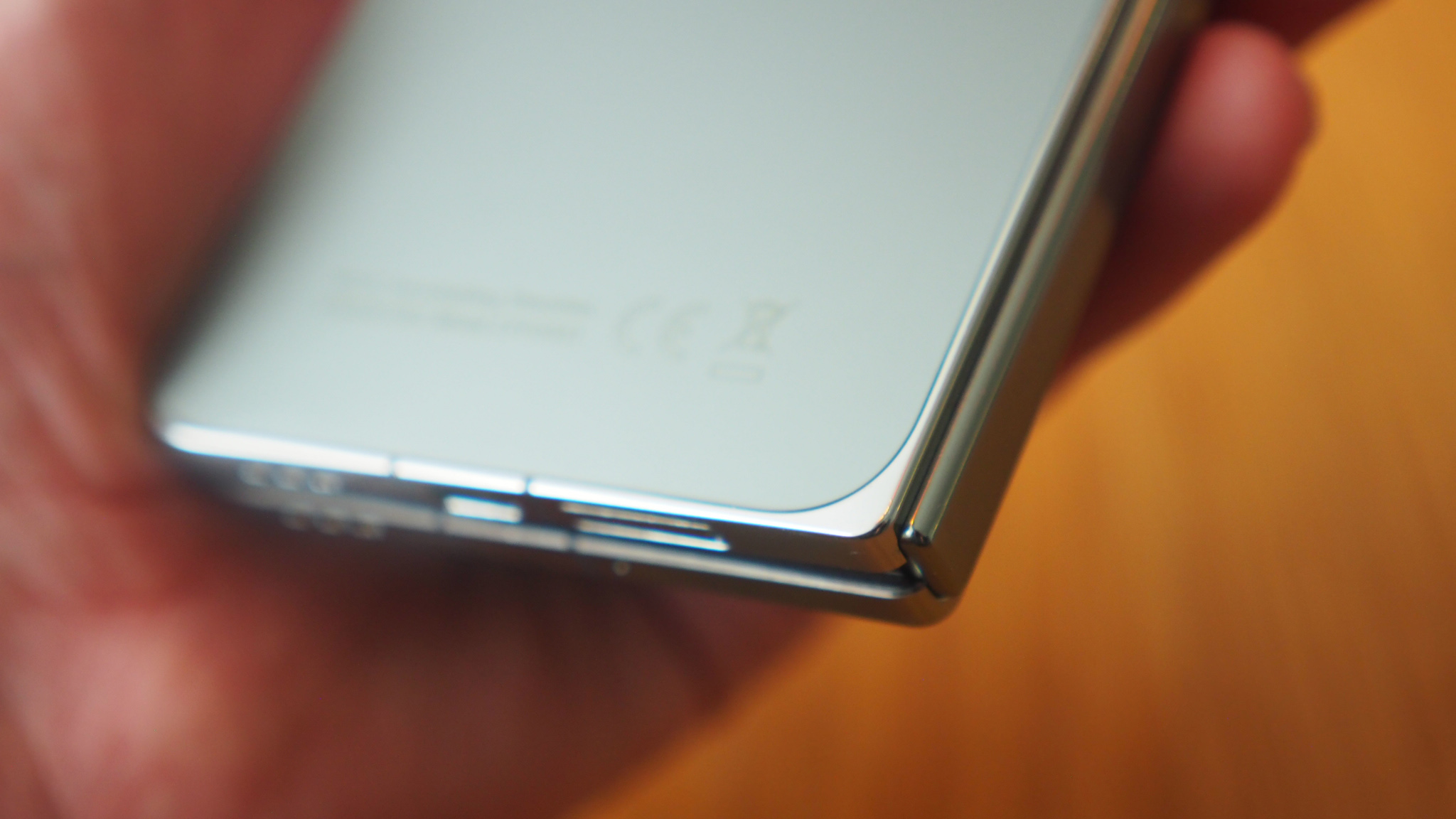
Specifications
Reasons to buy
Reasons to avoid
Buy it if
✅ You value cameras: The triple camera setup on the rear (48MP for main and zoom, 64MP for 3x zoom) isn't mucking about. Indeed, it's a best-in-class setup.
✅ You want more battery life: With more capacity and faster-charging than the mainline competition, you'll get better longevity per charge and faster top-ups here.
✅ You want the best folding feel: The hinge mechanism in the Open is extra smooth, yet extra 'snappy', giving a satisfying feel – but also less of a main screen 'crease' issue.
Don't buy it if:
❌ You don't like massive camera bumps: That rear projection is, well, it's massive isn't it? That makes this a less pocket-friendly device as consequence.
❌ You're software fussy: While Android is behind the scenes, OxygenOS doesn't have precisely the same feel. At least it's got more bespoke options than Google's Pixel Fold though.
❌ You won't use the internal screen much: Seems obvious, but the Open's front display is so great, so 'normal phone-like' that if you don't unfold this device enough as a result then, well, is it worth buying at all?
The bottom line
🔎 The OnePlus Open is a surprise winner, outsmarting its most obvious rivals with a better balance of screen sizes, the most satisfying hinge mechanism, least visible crease, and great battery life too. It's still pricey, and that camera bump is huge, but it's an impressive package. ★★★★
If it's a book-like foldable that you're after then here's the best option right now. It's a bit of a surprise entry, especially given the longer-standing nature of Samsung's Z Fold competitors, but OnePlus' first entry is a fine product – that even won the T3 Award 2024 for Best Folding Phone.
Design: You're not going to confuse the OnePlus Open with any other device on the market: the massive camera bump on the rear being a big part of the reason why. Still, it looks good and importantly feels good to use too.
Displays: A key sell of the Open is its large dual displays: the front one is similar to a 'normal' flagship phone, while the massive 7.82-inch one inside is bigger than its rivals. You might find you don't open the handset quite enough, however, given just how usable the device is in its folded position! Still, it's a more logical proposition for a foldable phone, compared to the even wider front panel of the Google Pixel Fold.
Performance: Featuring Qualcomm's Snapdragon 8 Gen 2 processor under the hood, and with a compulsory 16GB RAM, there's no shying away from the power on offer here. That means it can multi-task apps like a daemon – and OnePlus' sometimes finicky software is otherwise very advanced in the way it offers split-screen setups.
Battery: As said in our review, while the 4805mAh battery isn't as substantial as some flagship devices right now, it's bigger than what you'll find in most big-screen foldables by comparison. And the 67W fast-charging is most welcome too. If the 18-ish hours of use per charge won't get you to the end of a day anyway!
Read more: OnePlus Open review
Best affordable
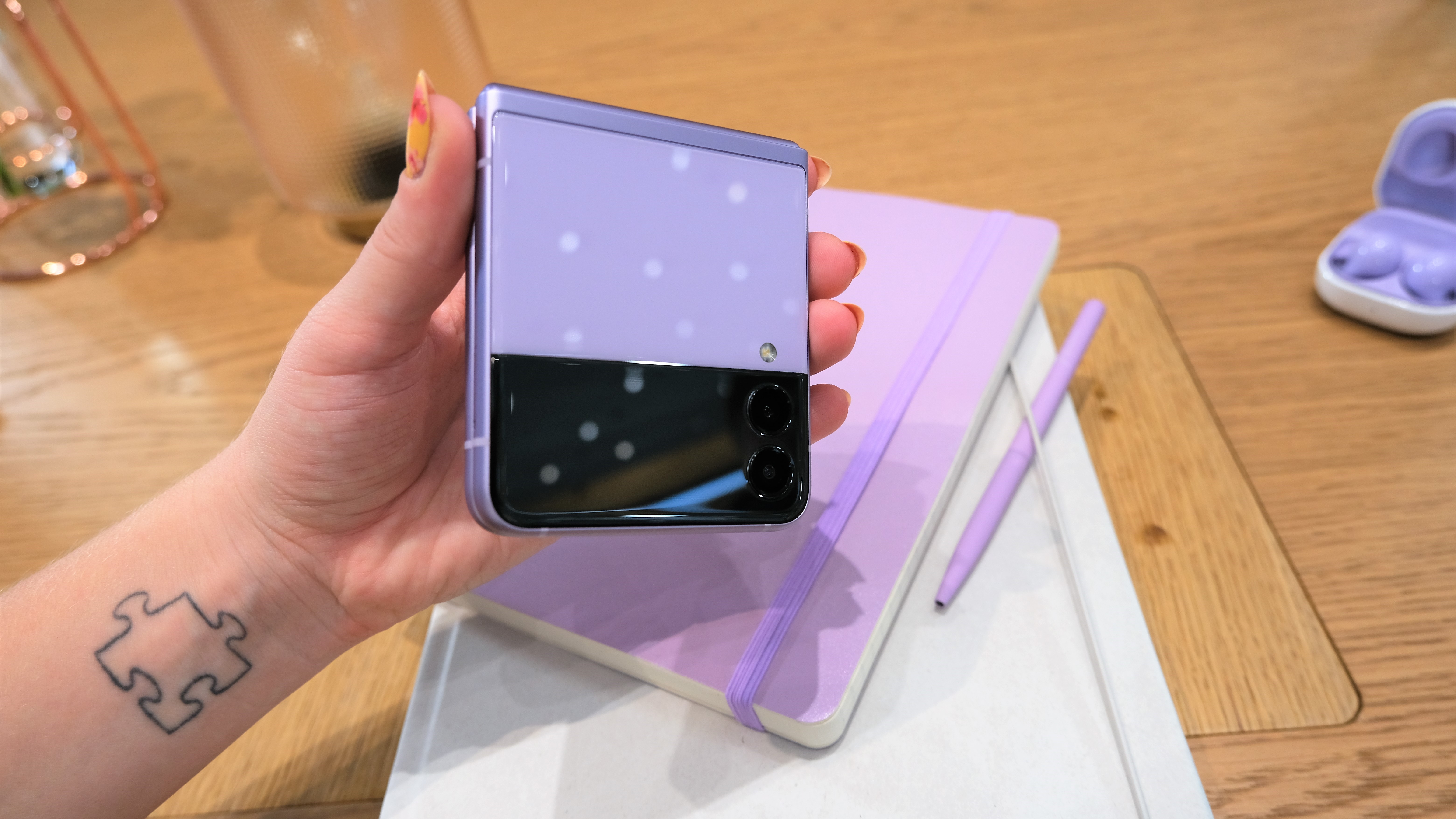
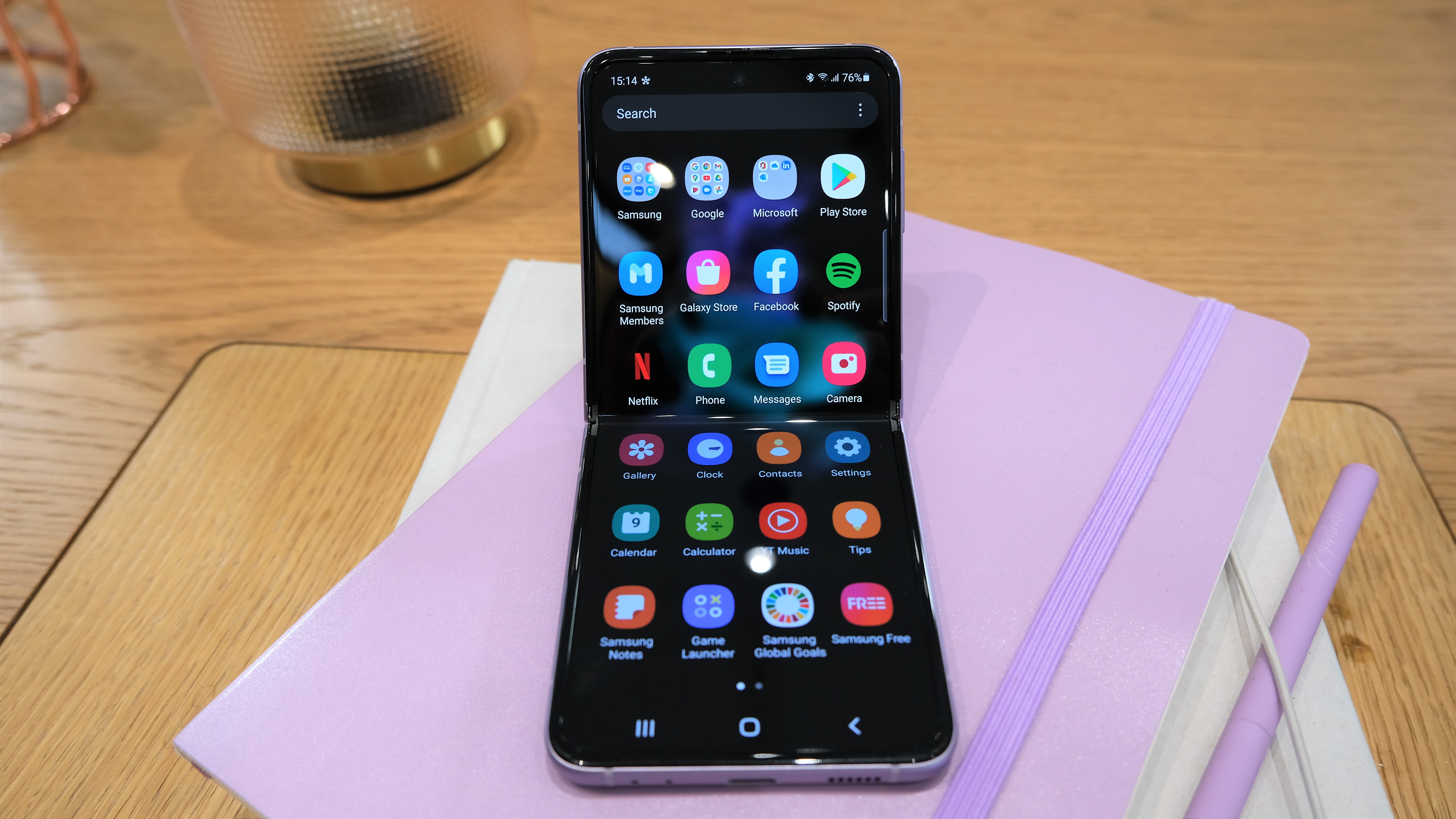
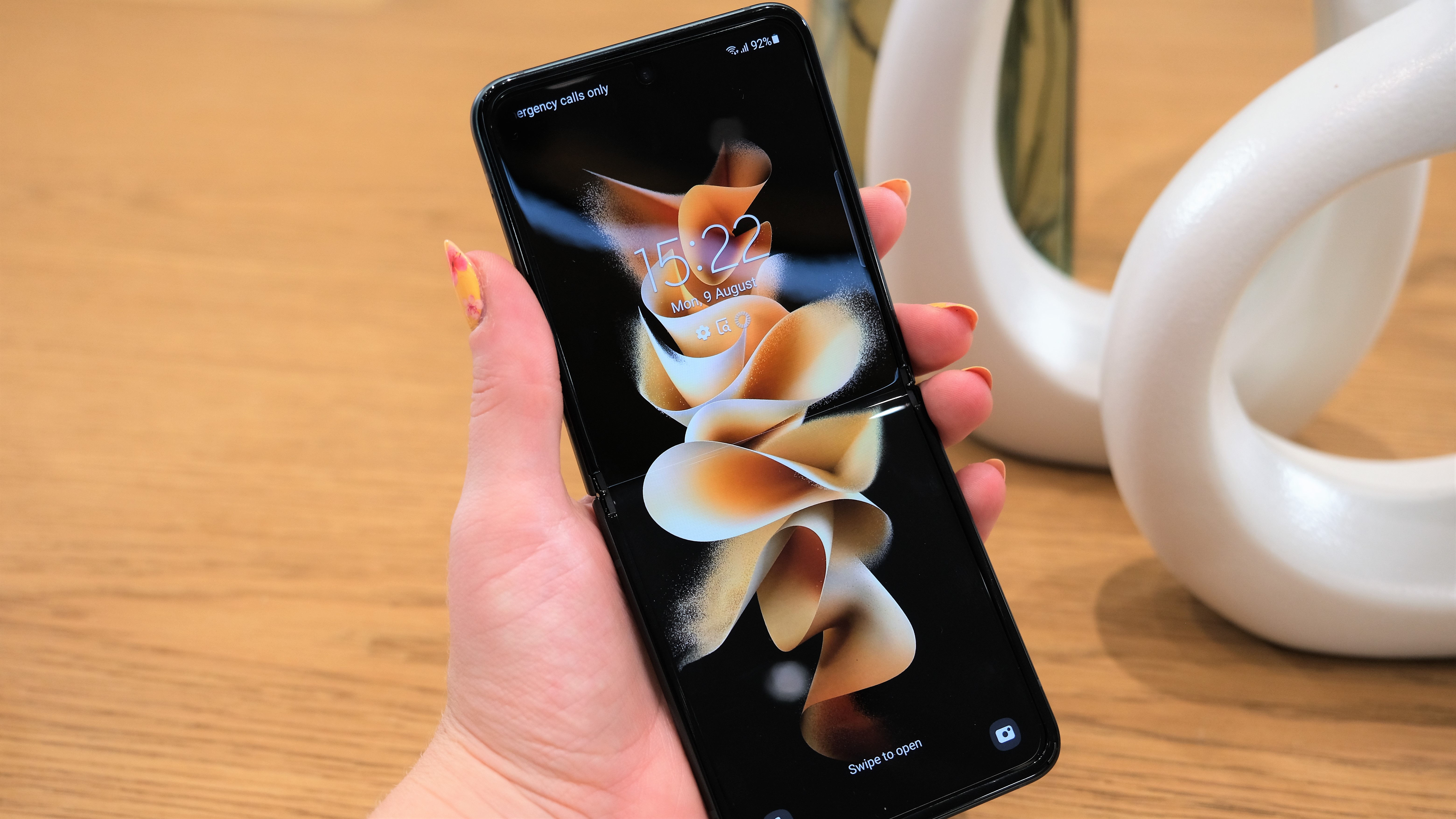
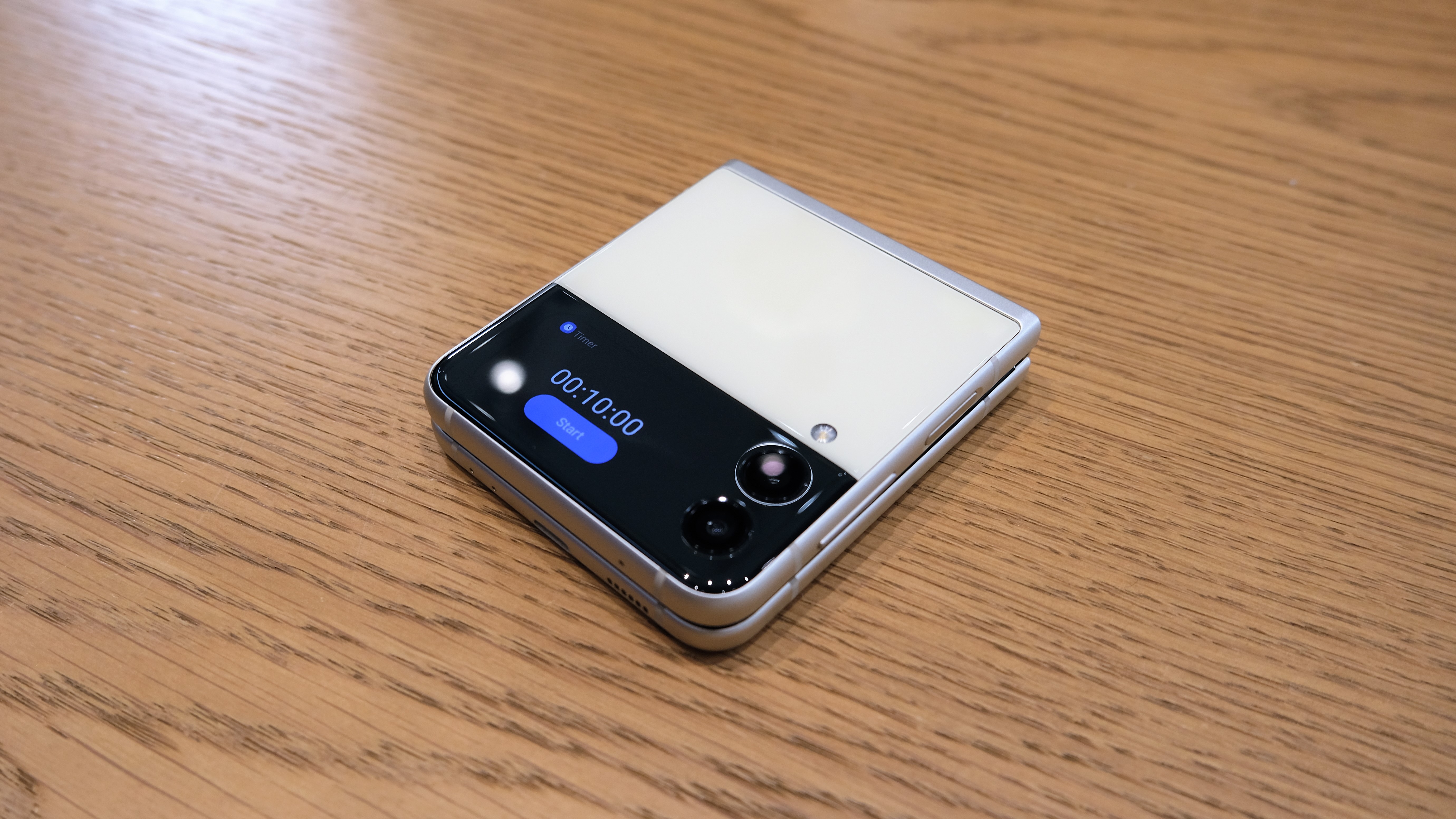
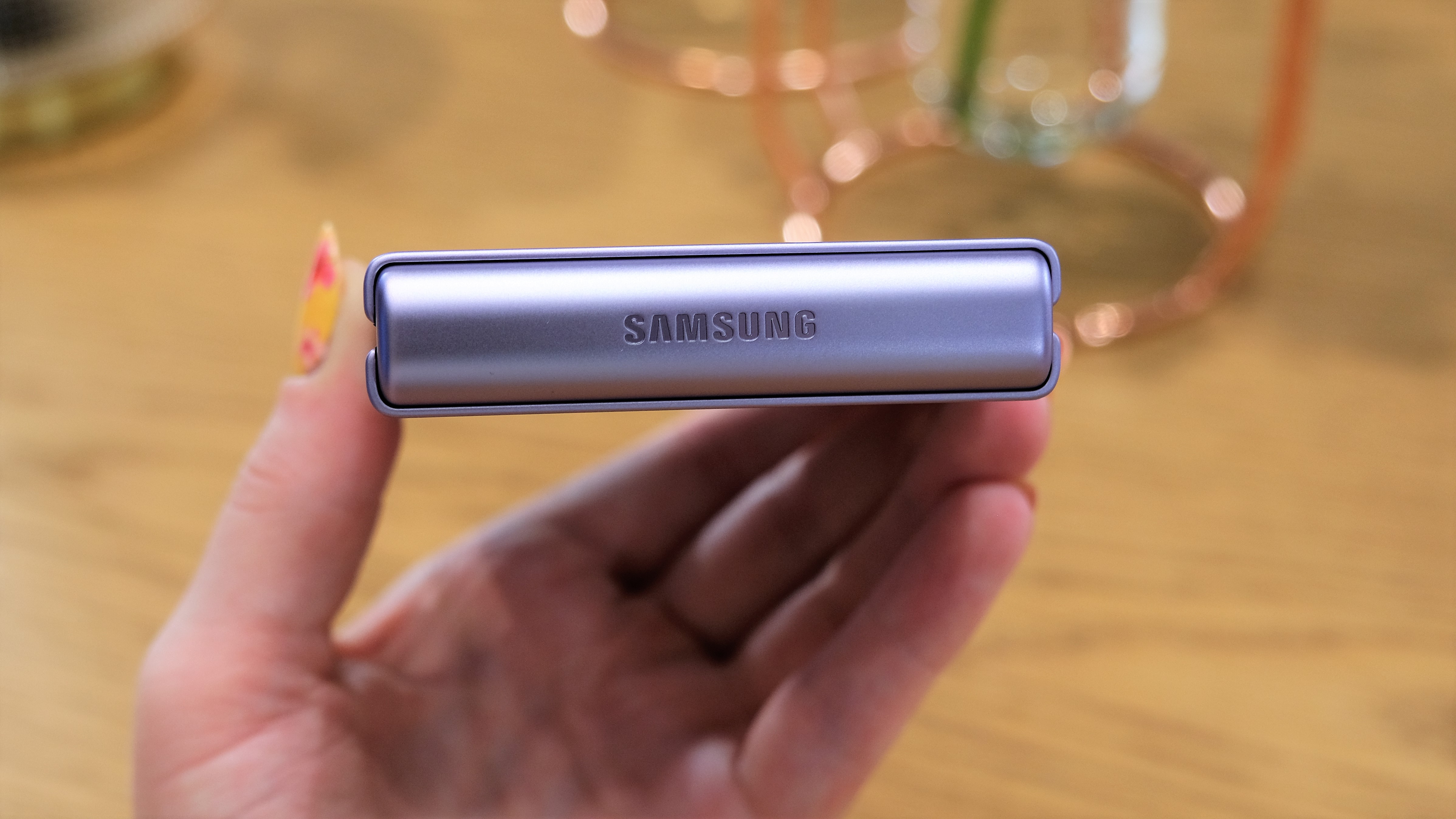
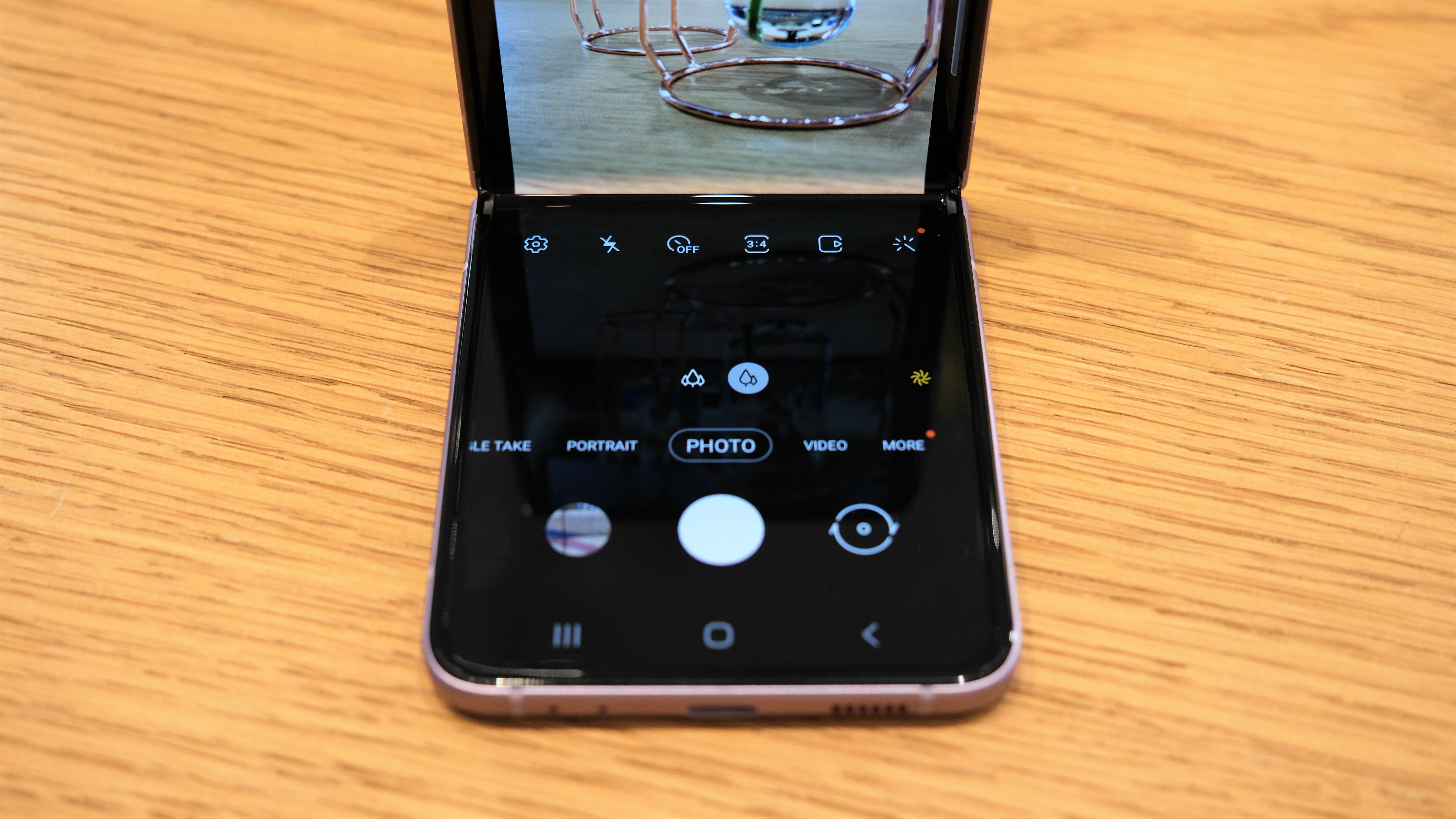
Specifications
Reasons to buy
Reasons to avoid
Buy it if
✅ You like money: The Z Flip 3 is so, so much cheaper than its Z Flip 4 or 5 follow-ups that, while it's a different device altogether, it's superb value for money.
✅ You're fine with a small cover display: Okay, so the 1.9-inch cover display is among the smallest out there right now, but it's still very useful for at-a-glance notifications – which is one of the main reasons to buy this device.
✅ You're curious about flip phones: Not bought a flip phone before but thinking about taking the plunge? This price proposition will give you that experience for less.
Don't buy it if:
❌ You want a larger cover display: As the Z Flip 5 ups the cover display to a far bigger 3.4in, the small 1.9in offering here may feel insubstantial for your wants.
❌ You're a power user: With lower battery capacity than the Z Flip 4 or 5 models, don't expect this flip phone to last the longest per innings (unless you're very much a cover display user who's looking to use your phone less anyway).
❌ Cameras are a key feature for you: Like with most flip phones, the camera arrangement here isn't as stellar as you'll find in a Galaxy S series. Still perfectly acceptable, but not revelatory.
The bottom line
🔎 The Samsung Galaxy Z Flip 3 is where it's at if you want the best yet cheapest flip phone on the market. Sure, that'll mean you've got to cope with a small cover display as a result, but for at-a-glance notifications that still works just fine – and might actually be your preference. ★★★★
Everyone's got to start somewhere and, for many people, the idea of a flip phone is hugely appealing – but the price point might feel like too much of a hurdle. That's where the Z Flip 3, the now two-generations older flip phone from Samsung, fills a perfect gap. If you've been curious about trying out such a device, this is your perfect inroad – and for less money.
Design: Visually speaking the Z Flip 3 looks a lot like the newer Z Flip 4 and 5 models, except it has a smaller cover display on the front. In terms of a clamshell and highly pocketable product, however, there's no drama here – this is an ideal choice for pockets and purses, and you'll protect that internal screen from scratches as a result too.
Displays: Inside the Z Flip 3 features a 6.7in display that's largely of flagship level, albeit with reflective qualities and that 'crease' where the fold is – something that's an issue for every folding phone right now. If that doesn't faze you, however, then the Z Flip 3 is a viable alternative to many current flagships. The cover display is far smaller, at 1.9in, but a large part of the reason for its existence is so you can not use your phone – simply glance at notifications, a bit like a smartwatch would notify, and go from there as applicable.
Performance: Just because it's a couple of years old doesn't mean a great deal in terms of capability either – which is testament to just how far Qualcomm's chipsets have come, given their slowly slowly upgrades year on year. The Snapdragon 888 chip here does get a little hot, however, as noted in our review, but it can slice through larger apps and games no problem.
Battery: The Samsung Galaxy Z Flip 3 has a 3300mAh battery inside, which is a lot smaller than most smartphones these days – but it actually lasts okay, at over 14 hours per charge. That is a consideration if you're a power user though: the Z Flip 4 and 5 have larger battery capacities and greater longevity per charge, but will also cost you a little more cash too.
Read more: Samsung Galaxy Z Flip 3 review
Best cover display
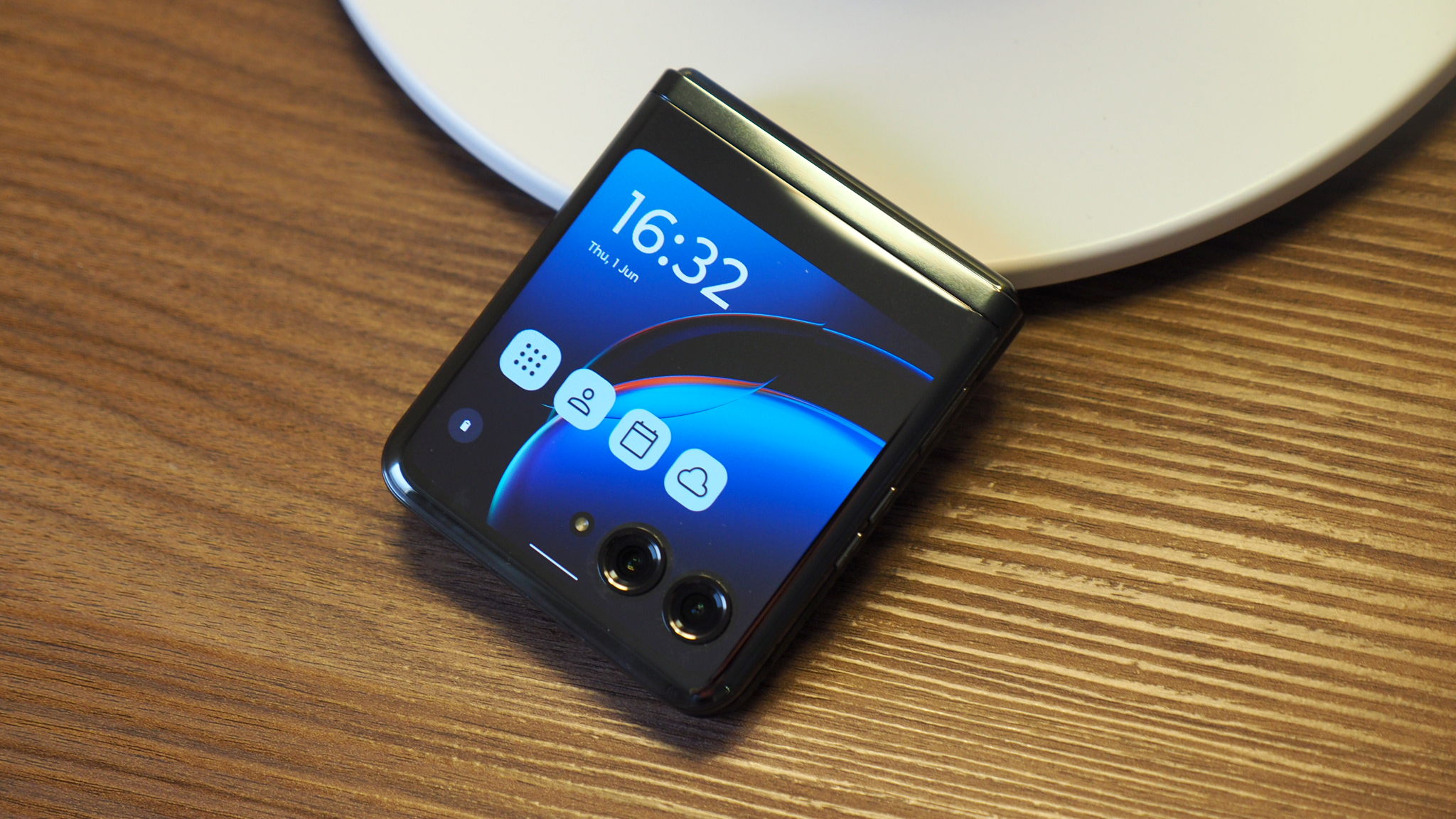
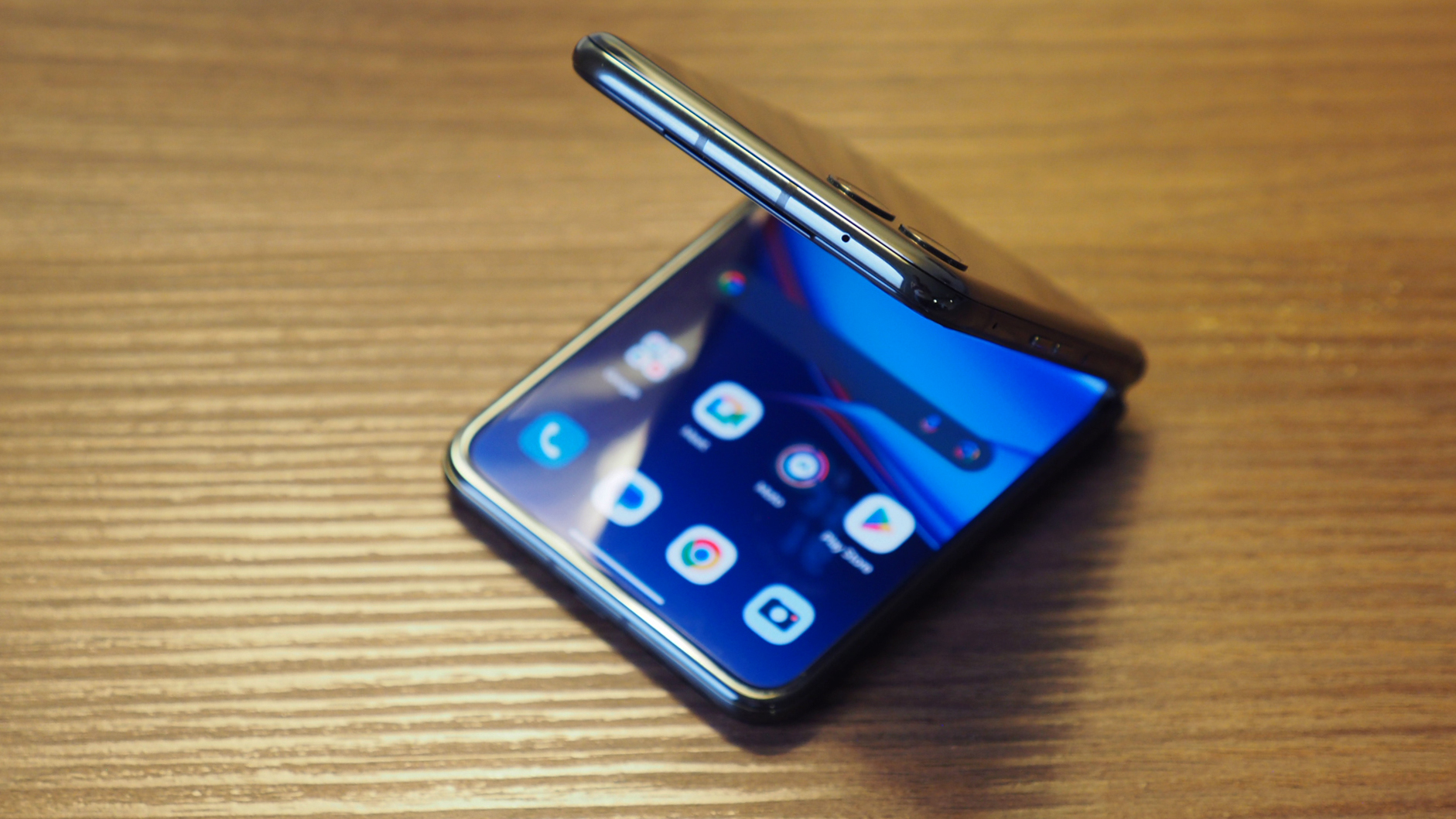

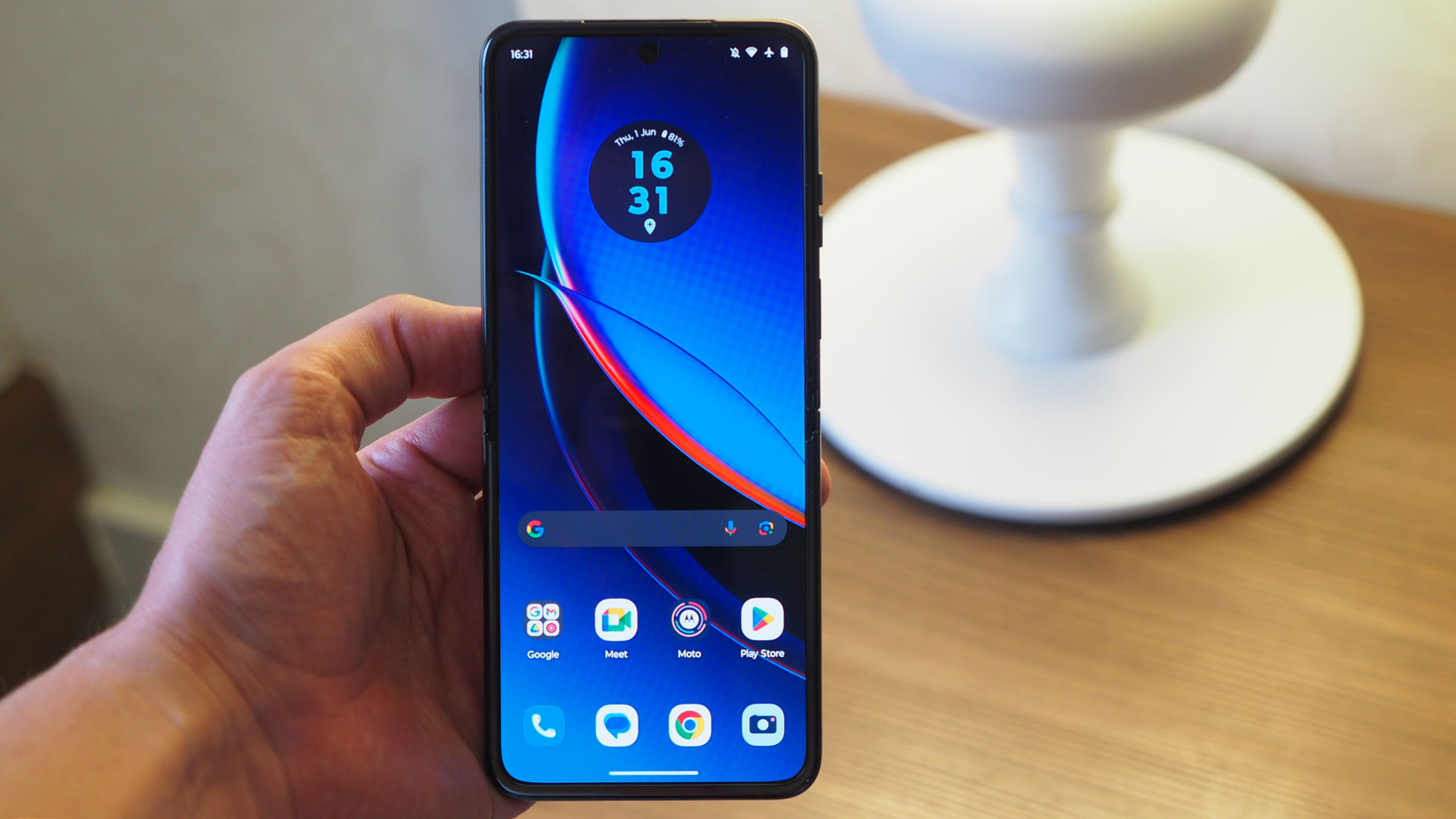

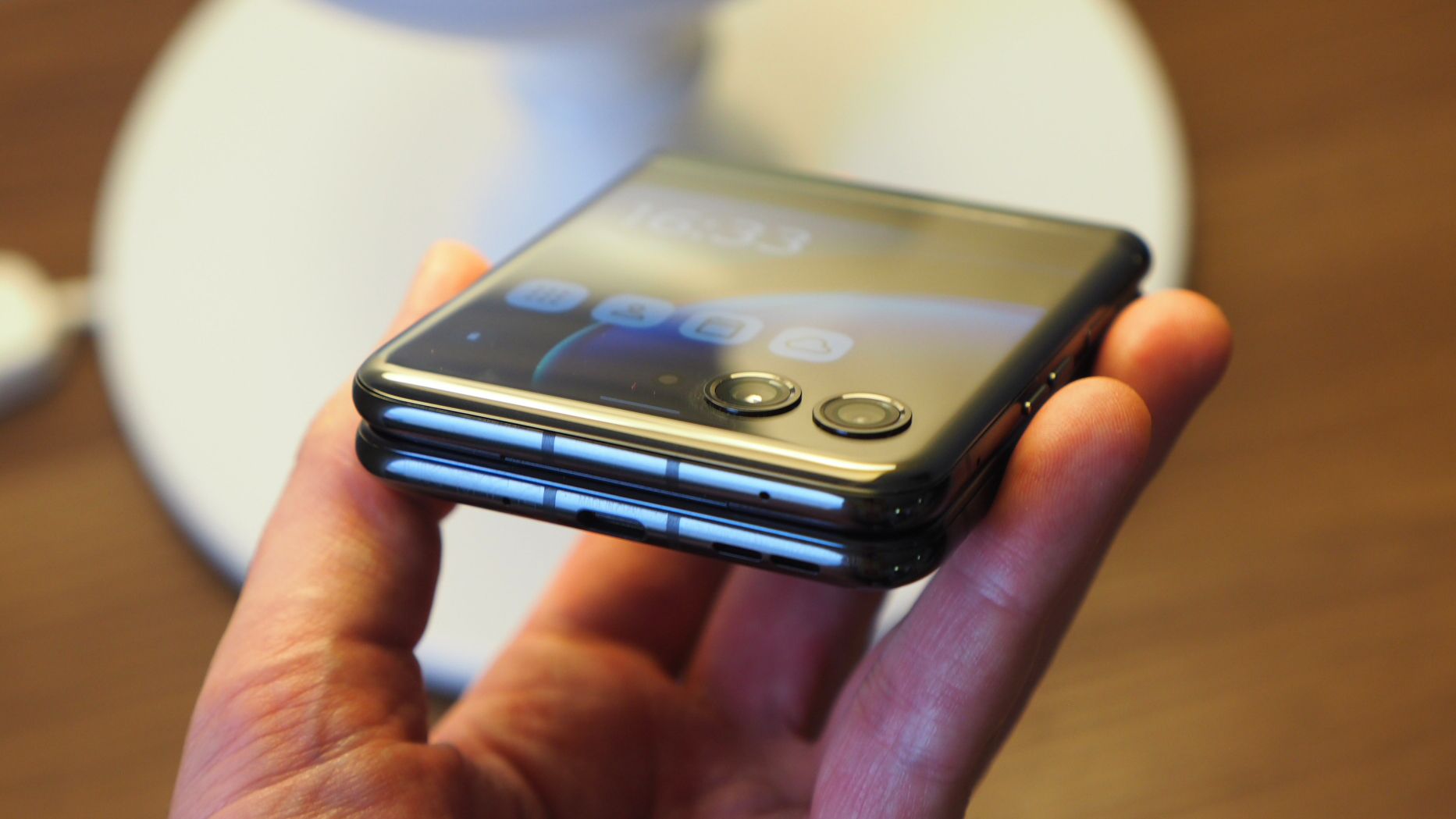
Specifications
Reasons to buy
Reasons to avoid
Buy it if
✅ You want the biggest cover display: The hands-down biggest reason to buy the Motorola is that its cover display is bigger and better than any other flip phone out there right now.
✅ And the most functionality: Unlike Samsung, too, Motorola's software allows full access to apps, so you can do a lot more with that cover display as you please.
✅ You like a splash of colour: In addition to the black finish, there's also an exclusive Viva Magenta option, as part of a Pantone exclusive deal, which gives Motorola a visual edge.
Don't buy it if:
❌ You've not looked at Samsung: The Z Flip 5 looks better by design, with a hinge mechanism that just feels better than this Motorola's version.
❌ You're budget limited: At over the four-figure mark, this isn't a cheap flip phone, typically on par with its Samsung competition.
❌ You like extended gaming sessions: Play too long and throttling becomes evident, so power users won't get as much from this flip phone as some other options.
The bottom line
🔎 The Motorola Razr 40 Ultra is the flip phone to buy if you want the biggest and most functional cover display out there. It's not as well built as Samsung, however, and the power distribution means it can run too hot, making it less than ideal for power users. ★★★★
If Samsung doesn't catch your eye then Motorola makes the flip phone with the current largest cover display, which is the major appeal of the Razr 40 Ultra – otherwise known as the Razr+ for those readers in the USA. It's not only the biggest display, however, it's got a more advanced specification and is much more user-centric than the competition thanks to the addition of apps.
Design: Motorola's Razr line is a classic, right? The originator from back in the day, the company was the first to really kick things up a notch when the new-gen Razr re-launched in 2020. It's come on in leaps and bounds since, too, with a design that's now more modernised, a little similar to the Samsung Z Flip line in some ways, and is a dainty little clamshell product.
Displays: Where this Razr goes beyond its competition is in the screens department: the exterior, at 3.6in, is larger than any other on the market in this design format; the interior screen, meanwhile, at 6.9in, is also large. Not only that, with high refresh rates, these are advanced panels. Sure, there's still the 'issues' with reflections and the 'crease' in the middle of the unfolded display, but that's part and parcel of living with a folding phone.
Performance: With the Qualcomm Snapdragon 8+ Gen 1 under the hood, the Razr has plenty of power to draw upon. And indeed it does – sometimes to its detriment as it can get a bit too hot. In order to avoid this, Motorola also clearly throttles sustained use, so if you like a long gaming session rather than a casualdabble then this probably isn't the flip phone for you.
Battery: As quoted in T3's Moto Razr 40 Ultra review, the battery life from the 3800mAh battery on board – which really isn't all that much by today's standards – held for a surprisingly long time per charge. After 14-15 hours of use it'll be in the 15-20% area, but that's without making any concessions to typical use. So this battery can last well for both these large displays.
Read more: Motorola Razr 40 Ultra review
Best if priced right
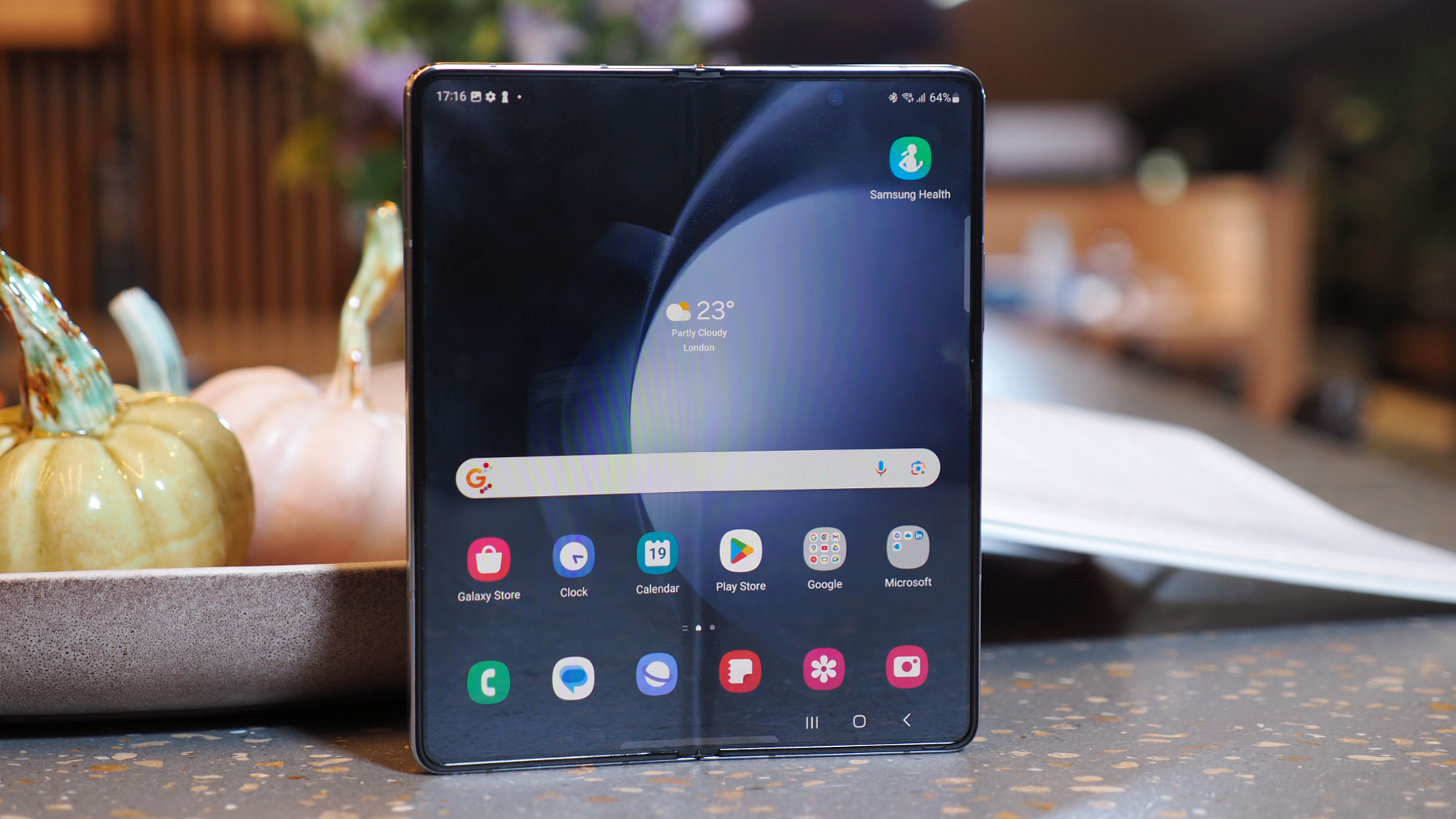
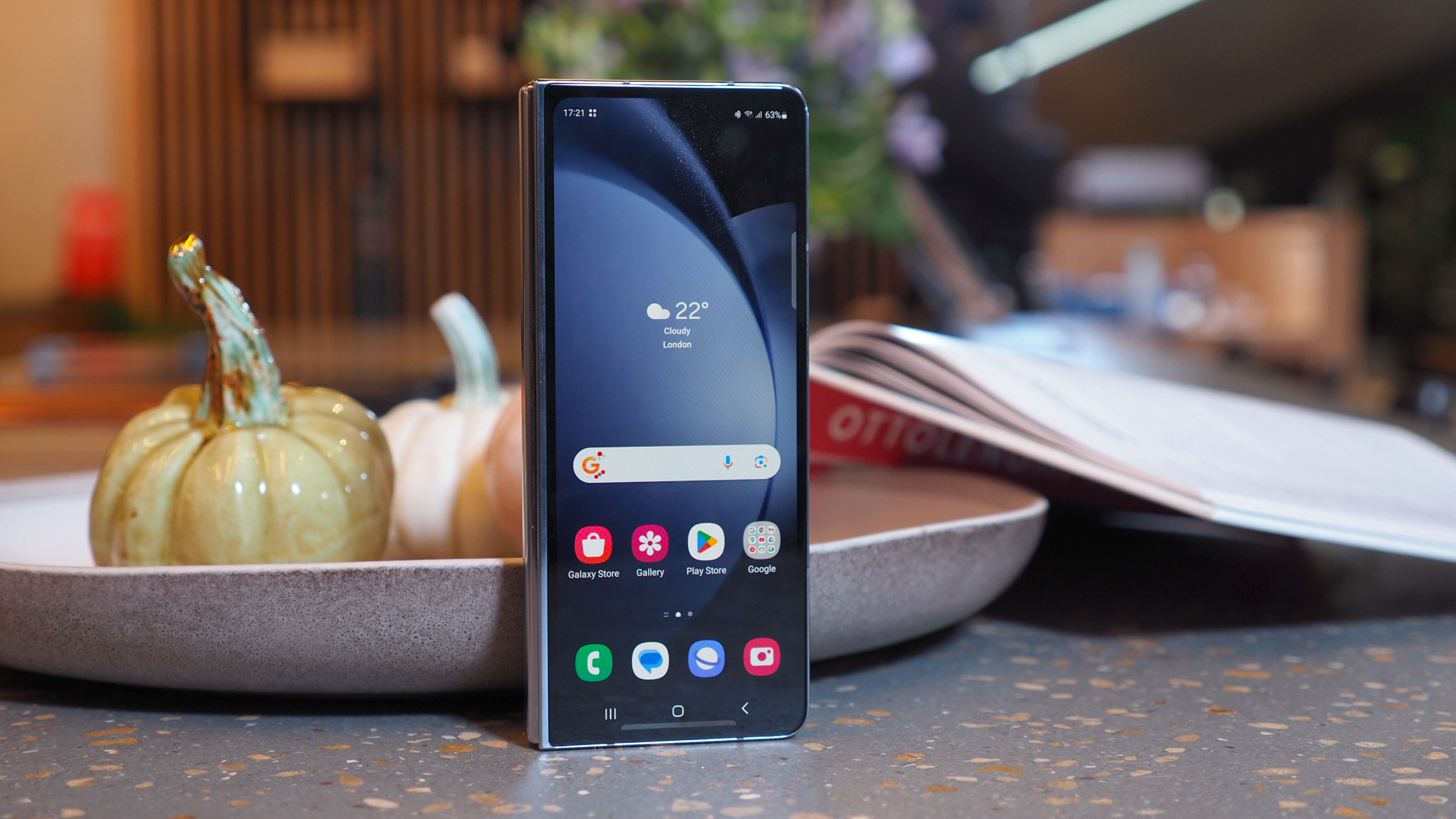
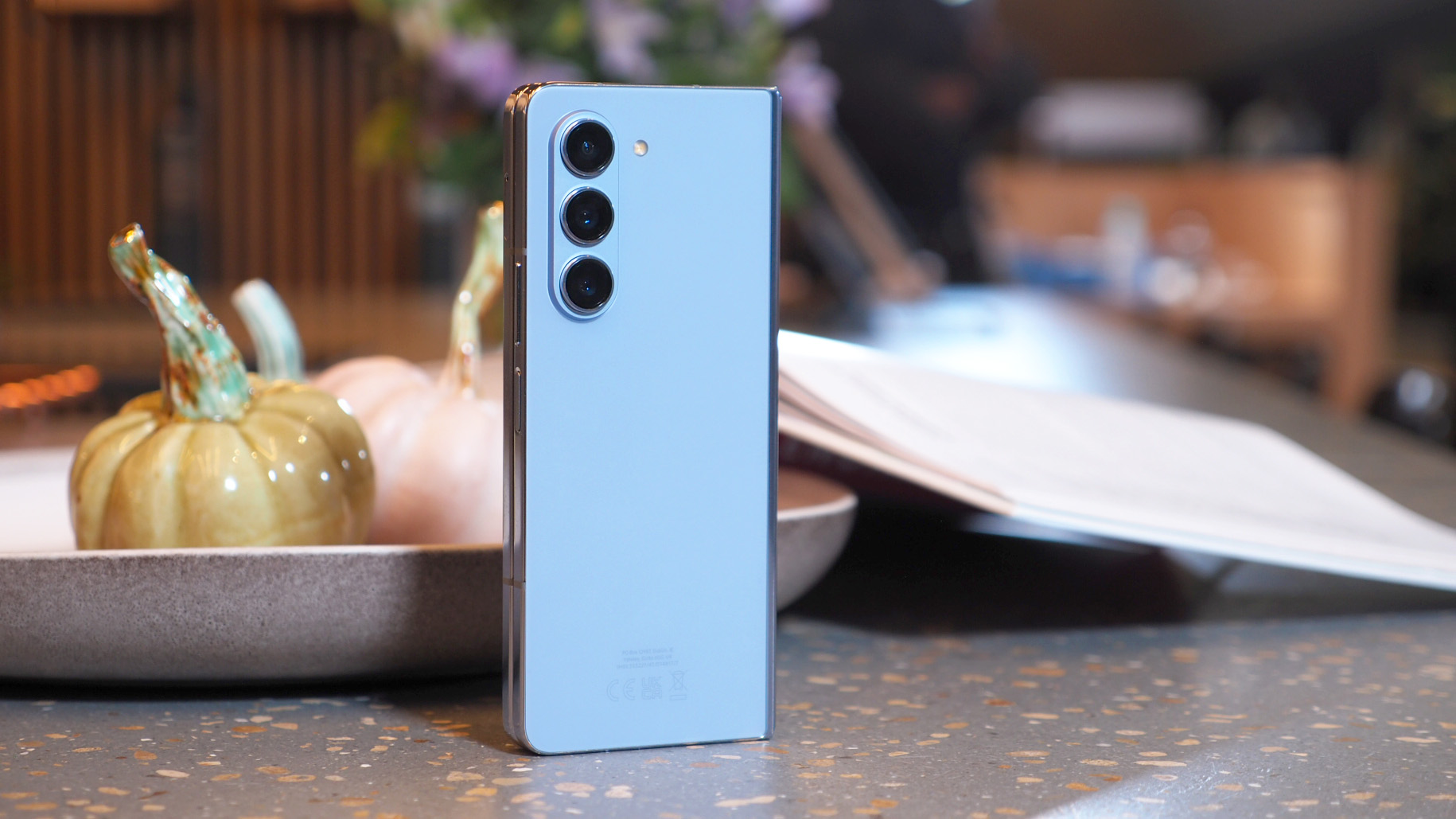
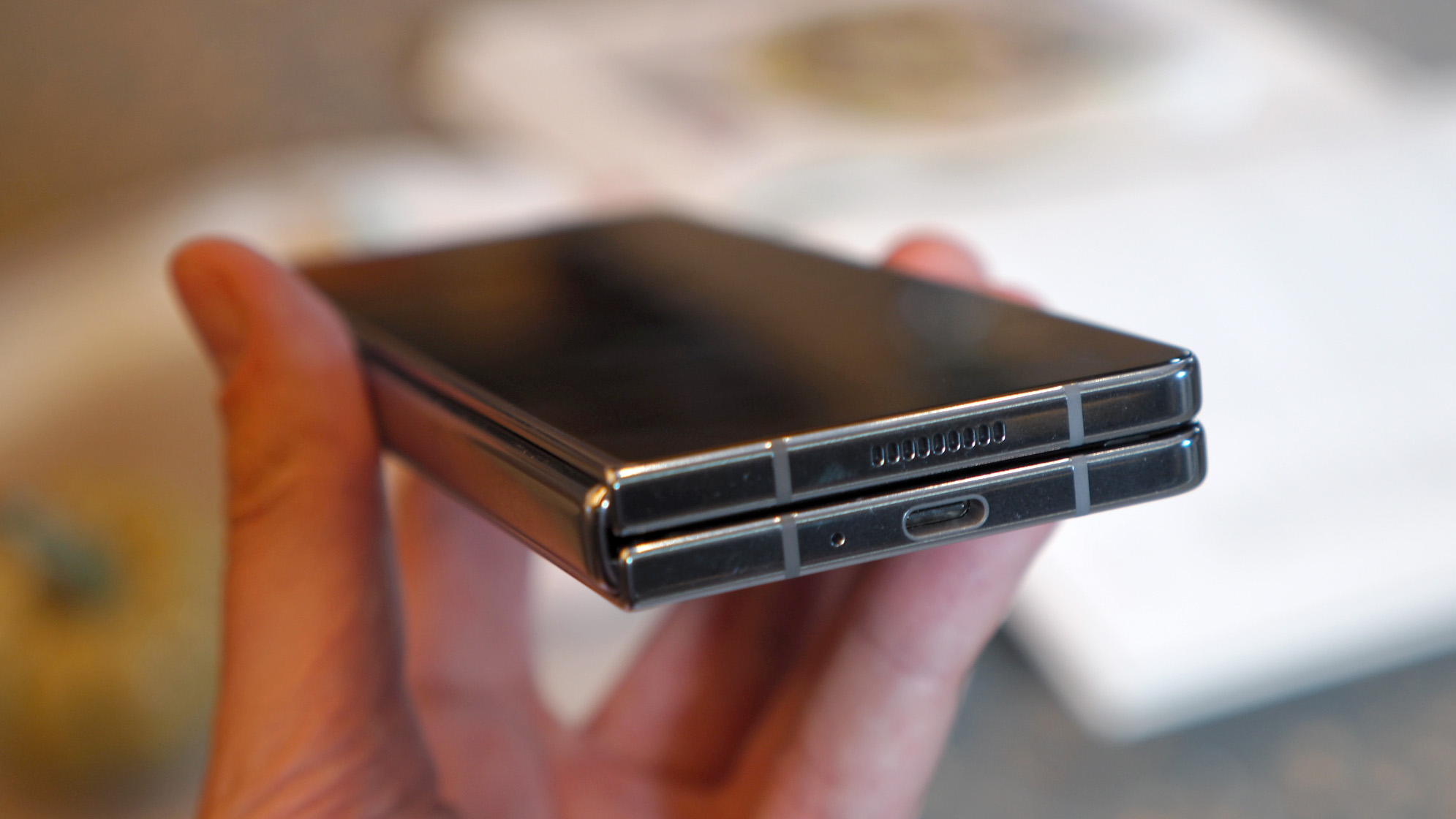
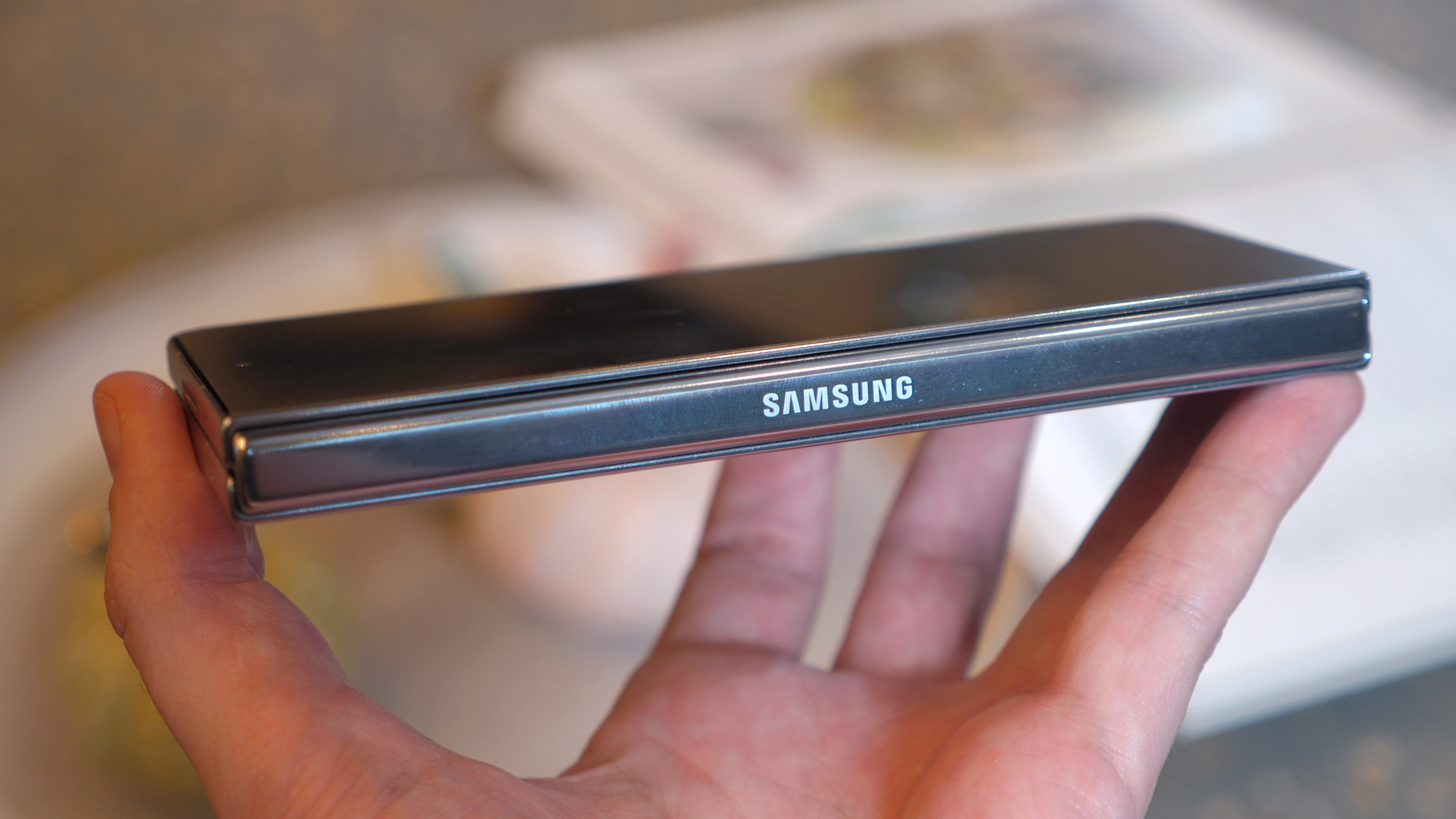

Specifications
Reasons to buy
Reasons to avoid
Buy it if
✅ You'll use it unfolded a lot: The front display, while close to a 'normal' phone, is a fair bit skinnier. But if you're using the internal display a lot then this won't bother you, making it the perfect balance.
✅ You love Samsung software: Samsung wins when it comes to software, especially with multiple app openings, where even the Google Pixel Fold can't keep up with this versatility.
✅ You might want S Pen stylus input: The Z Fold is also the only foldable series that can use stylus input – which doesn't come in the box, granted, but you can buy separately.
Don't buy it if:
❌ It's priced too highly: The older Z Fold 4 is very similar to the newer model, which might make it an even better buy. Its screens aren't quite as bright though.
❌ A skinny front screen will irk you: Samsung's foldable approach is to utilise a skinnier front display, which feels narrow and tall – many will find a traditional flagship more effective, or the OnePlus Open's more traditional frontage.
❌ You want the best cameras: Samsung's snappers are decent for a foldable phone, sure, but they're not to Galaxy S24 Ultra levels of versatility or capability. This is one area where the Google Pixel Fold and OnePlus Open win.
The bottom line
🔎 The Samsung Galaxy Z Fold 5, for the right price, will be the best book-style foldable for most people. Not all will love the skinny front display, though, but with software that's ahead of its competition, it's a superb option if the OnePlus Open doesn't appeal to you. ★★★★
Design: You're not going to confuse the Z Fold 5 with a Samsung Galaxy S 24 Ultra, as it's a two-panel device that folds up nicely – and, importantly, with a hinge mechanism that just feels great in use. There are plenty of fun colour options to add some pizzazz to proceedings too.
Displays: The key sell of the Z Fold 5 is its dual displays: the front one is tall and narrow, which may mean you're more often inclined to open up and use the massive 7.6-inch one inside. That's a logical proposition for a foldable phone, though, otherwise you'd just rarely open it up. That said, if a wider panel would suit you better, then the OnePlus Open or even Google Pixel Fold are more sensible options.
Performance: Featuring Qualcomm's Snapdragon 8 Gen 2 processor under the hood, plus a whopping 12GB RAM so multi-tasking apps is a breeze. And with Samsung's software being truly standout in bettering its competition, if you're familiar with the brand's OneUI style that adds further appeal.
Battery: As said in our review, while sceptical about a 4400mAh battery being substantial enough for a device such as this, it holds out just fine – delivering close to 20 hours of use per charge. That's a solid innings from a great device.
Read more: Samsung Galaxy Z Fold 5 review
Best wide display
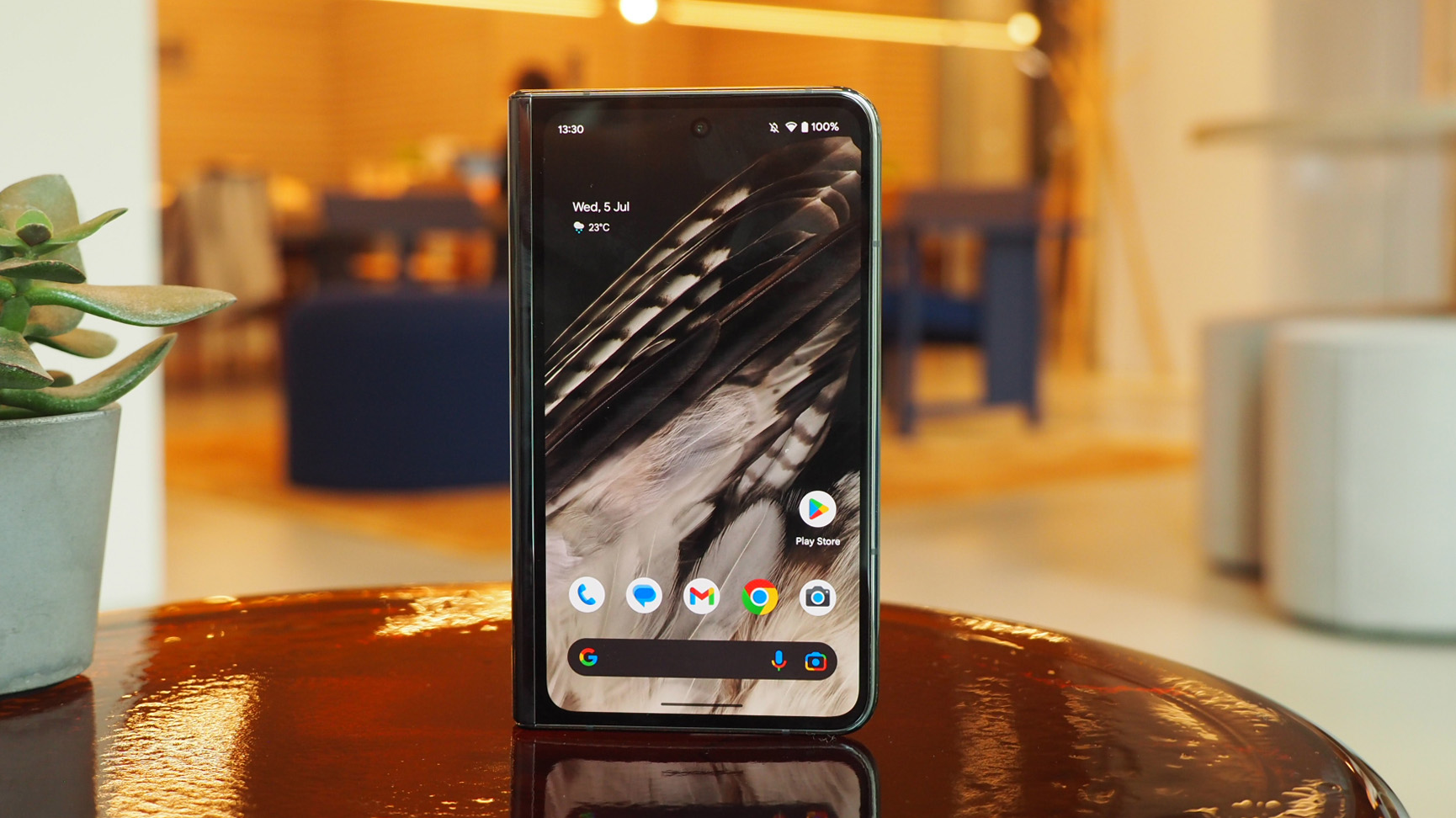
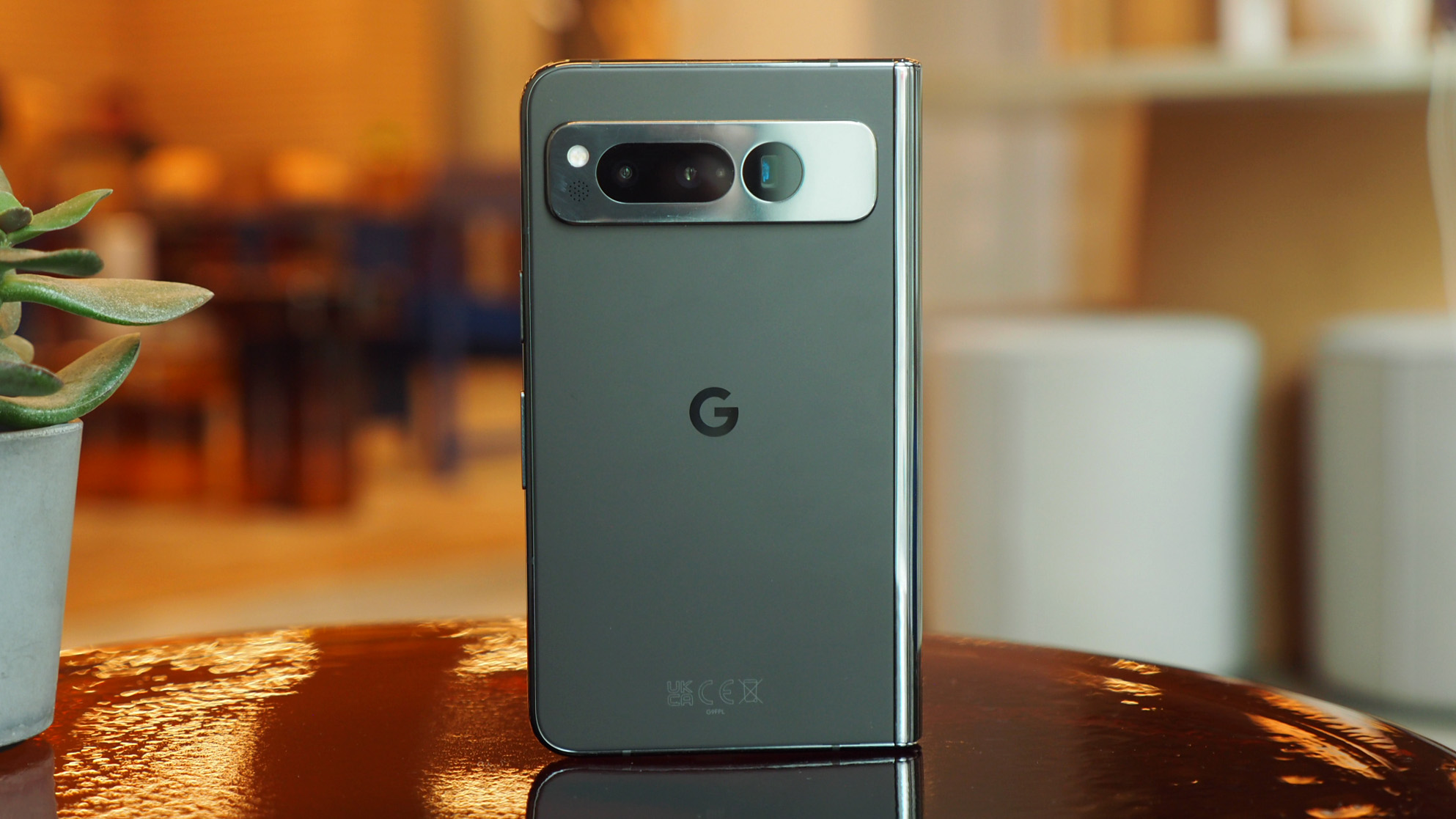
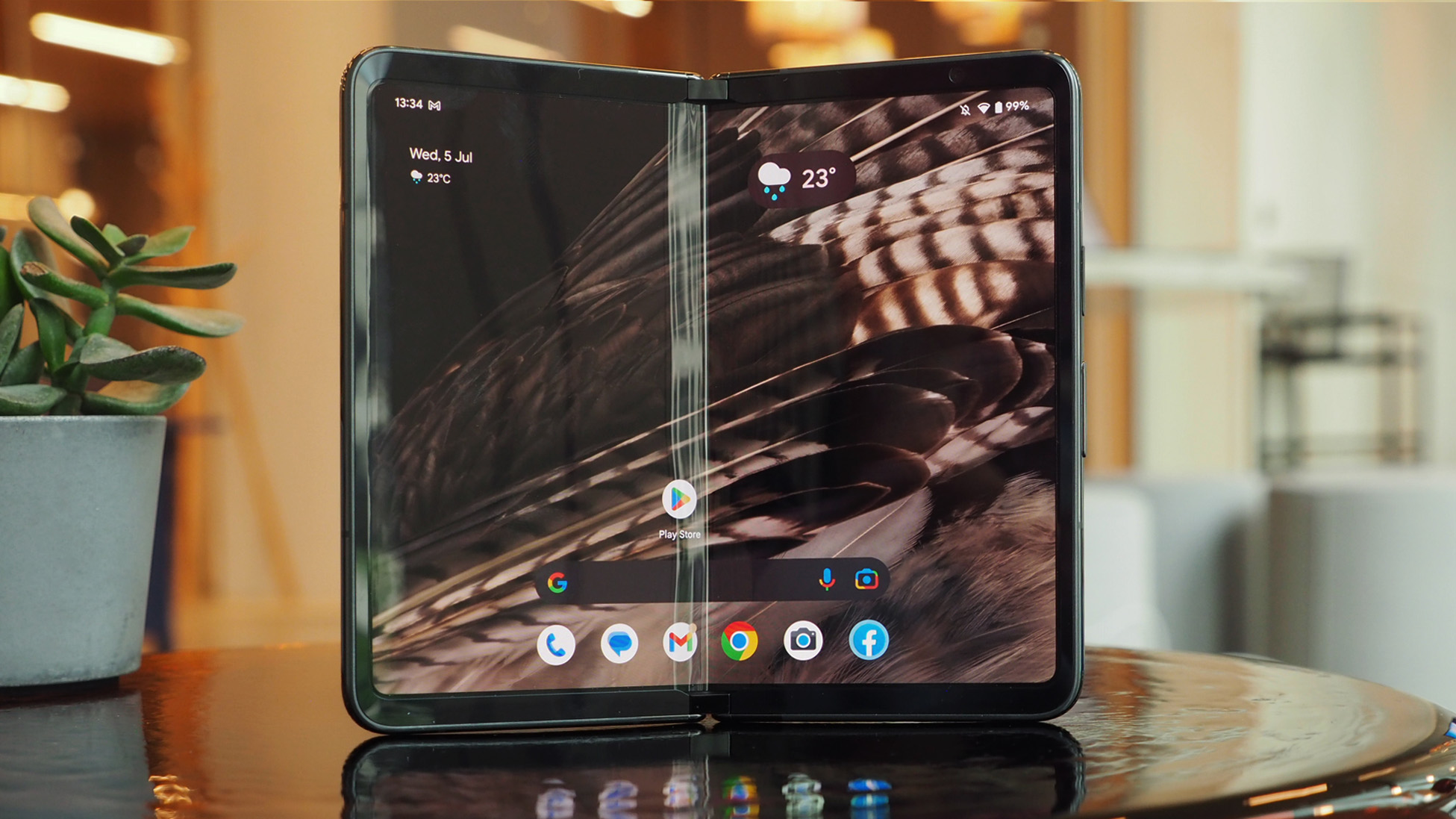
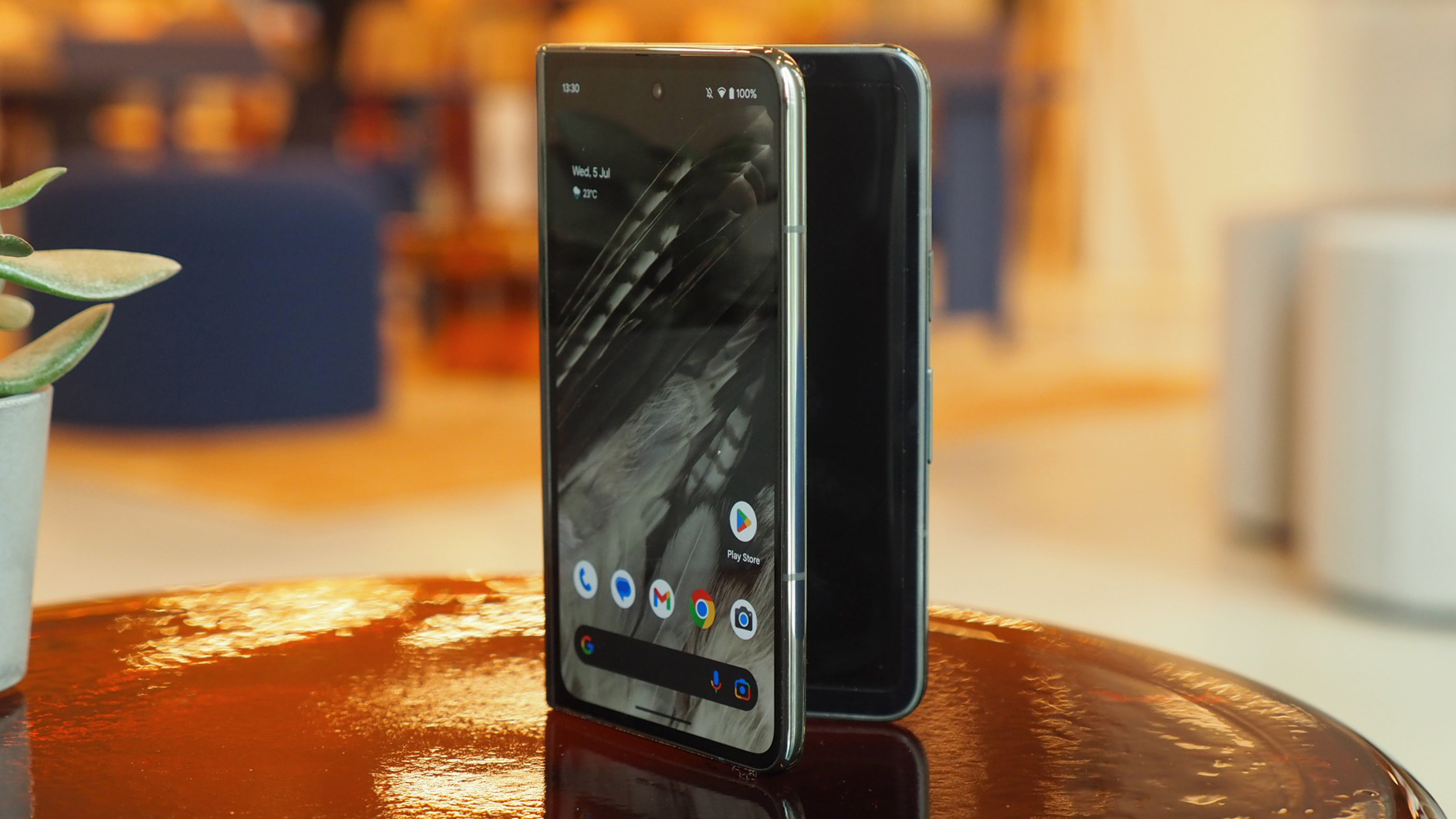
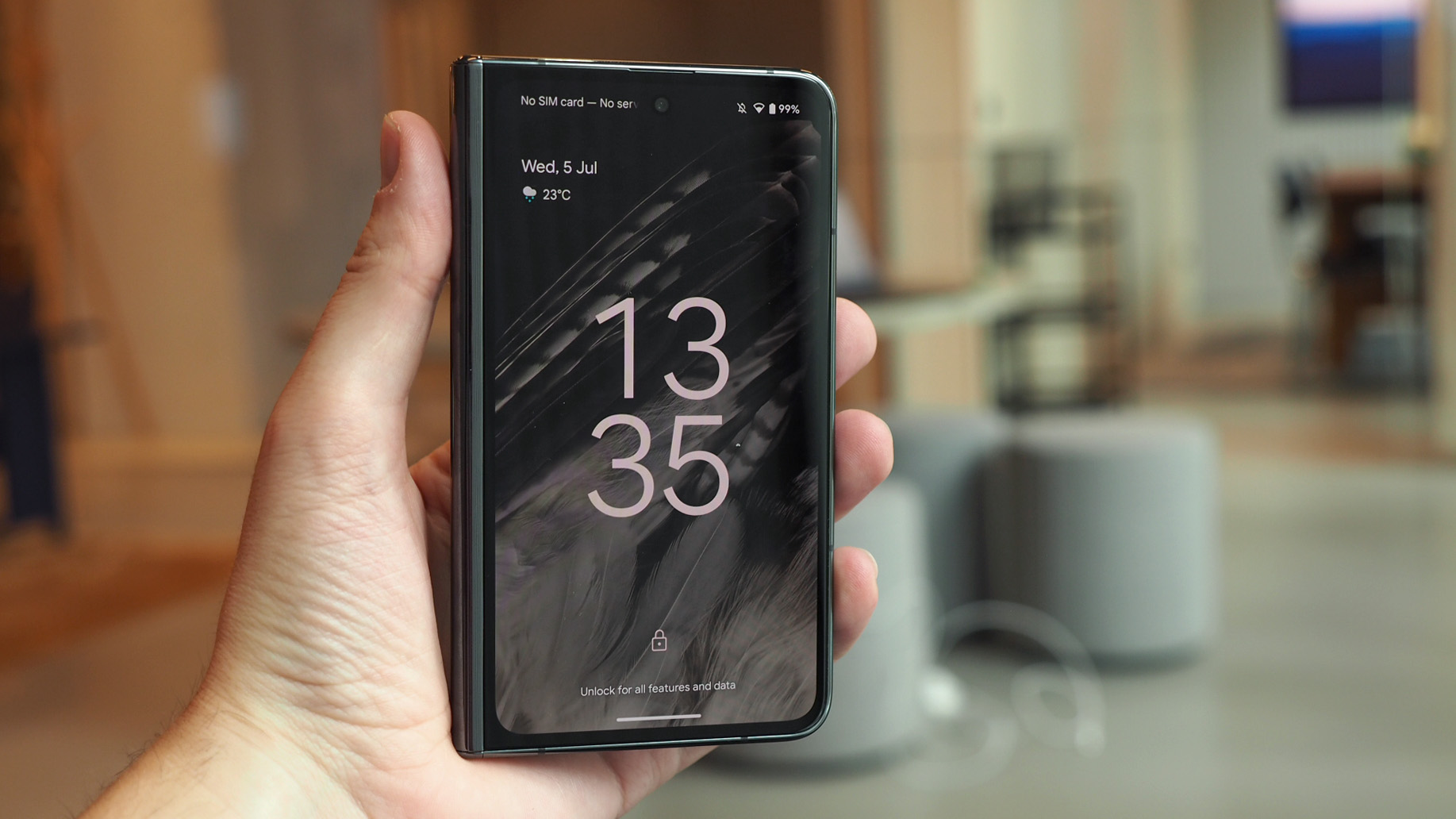
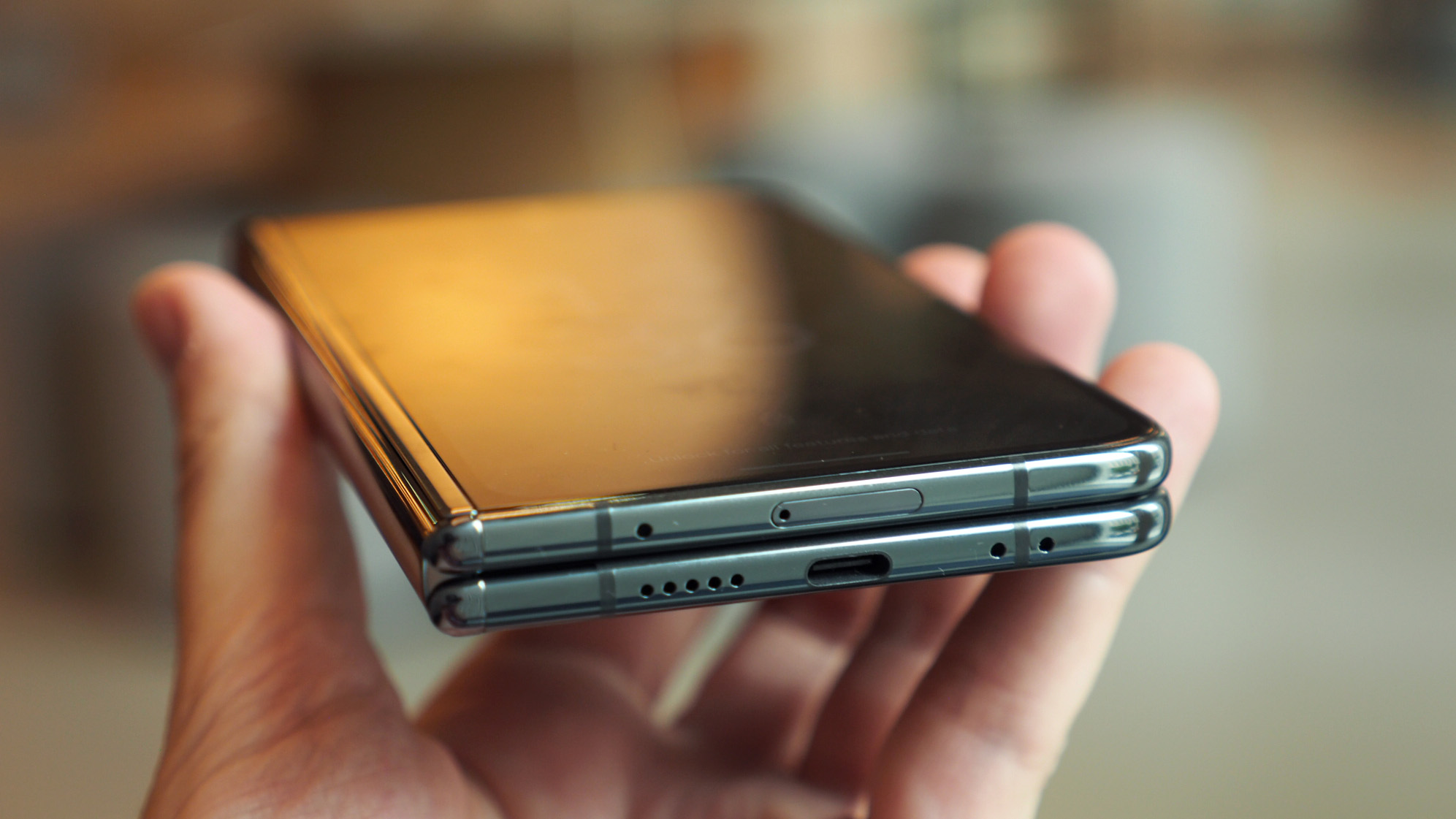
Specifications
Reasons to buy
Reasons to avoid
Buy it if
✅ You want a big front display: The critical reason to buy the Pixel Fold over any other is because its front display is wider than others, giving it a more traditional flagship phone width and usability.
✅ Cameras are high up your list: Unlike almost all the competition, too, Google's cameras are a grade above. Not quite to Google Pixel 8 Pro levels, but knocking on the door of that greatness – and there's a true optical zoom here too.
✅ Entrust in Android: Something to look forward to in the future is the Android 14 software release, which ought to make the Pixel Fold even more functional and further improved. The only way is up.
Don't buy it if:
❌ You want a flat internal display: The internal panel doesn't fold truly flat, which emphasises the central crease and raises questions of durability over time too...
❌ You haven't seen the Samsung or OnePlus: Do take a look at the Samsung Galaxy Z Fold 5 and OnePlus Open, as they're similar in price, have brighter screens, better software for multi-tasking, and screens that fold flat too.
❌ You love your bank balance: Yes, it's a folding phone, so inevitably it's going to be pricey. But as a first-gen release there's no older model to save you any cash – unless you consider Samsung's older models instead.
The bottom line
🔎 The Google Pixel Fold is the first folding phone from Google, bringing some great points of difference, such as that wider front screen, but it does feel like a first go as the software doesn't take ample advantage of the foldable format just yet. ★★★
The first Google folding phone may split opinion: yes, it's got the largest front display, so it's more like a traditional flagship in that way; but having a larger front display largely negates the need to unfold it – and when you do that internal display doesn't fold flat (whereas the Samsung Z Fold's panel does and the OnePlus Open's is even better, with minimal crease visible). This being Google, of course, expect stellar software updates to come down the pipeline, so theoretically this device will only become more accomplished over time.
Design: The Fold doesn't quite mirror Google's Pixel line from the front or inside, as its screen bezels are rather large overall, but on the rear there's that classic 'camera bar' design that has a point of distinction – making it very recognisably 'Google'. It's a large and heavy folding phone, inevitably, but is still comfortable to use.
Displays: The reason most people will look to the Pixel Fold as being the book-like foldable of choice is down to the displays arrangement – the front panel, at 5.8in, is wider and less tall than the competition, but this makes it feel more like using a 'normal' phone much of the time. That may often mean you don't open to use the 7.6in internal panel, though, but when you do and it's on point with some great content things do look pretty amazing – except in the case of lots of ambient light, as the panel doesn't fold flat and light catches that crease (as is the case in all foldables, though).
Performance: Unlike the Qualcomm norm, Google does things its own way, employing the Tensor G2 processor to power the Fold along. Generally it does a grand job too, although in our review we found some stutters and app crashes which surprised – especially from Google, the inventor of Android. The software should improve over time, though, and here's hoping – as right now Samsung is much better at multi-tasking handling, and also offers S Pen stylus support for which this Google doesn't deliver an equivalent.
Battery: The 4820mAh cell in the Pixel Fold sounds substantial enough, and often lasts well, but as said in T3's review of the handset, it's often below par because things run too hot too often, resulting in diminished battery life. Expect to reach for the charger before the day is out if you're a power user, but more idle use will see you through a 14 hour day easy.
Read more: Google Pixel Fold review
Best slender design
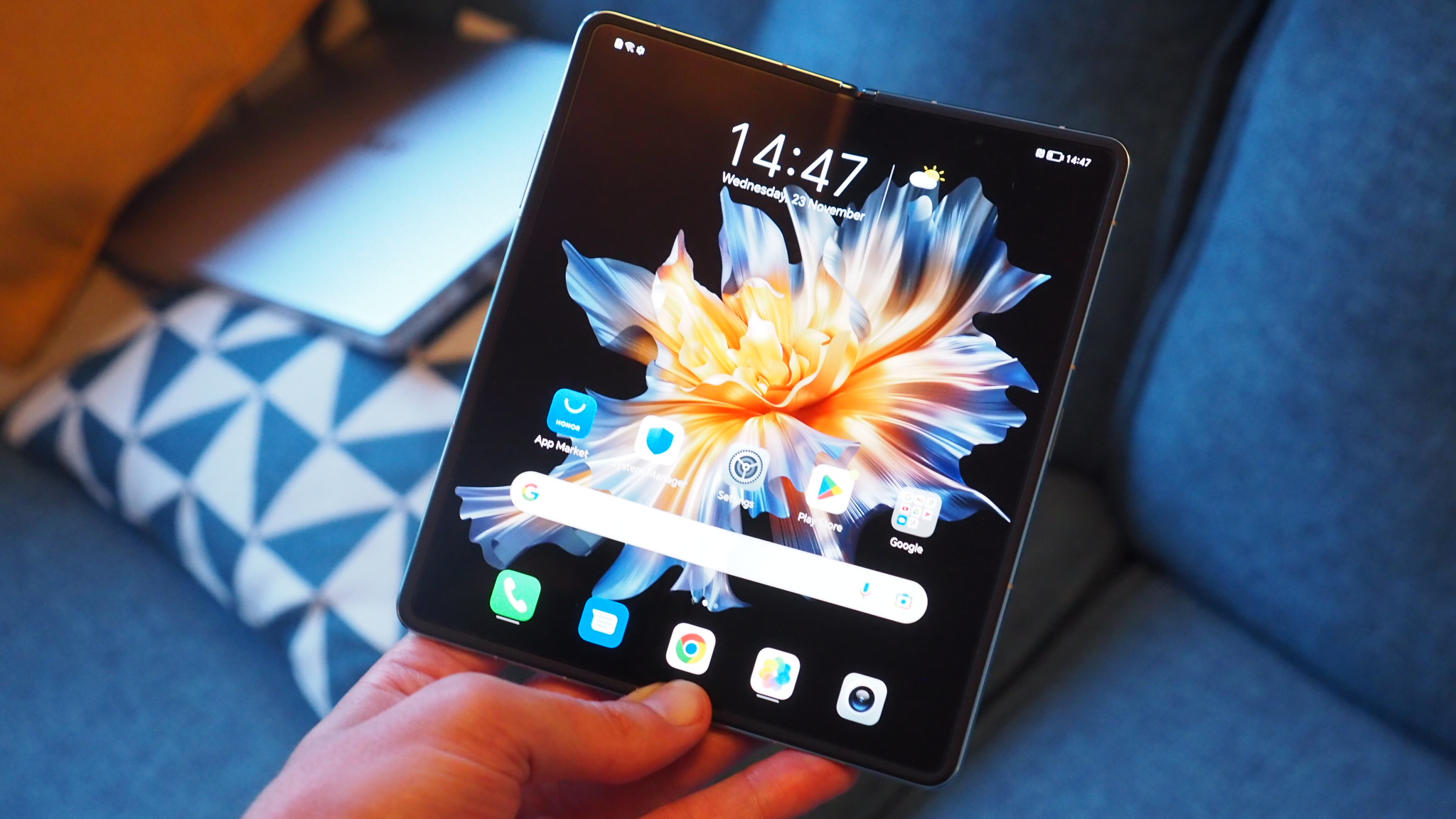
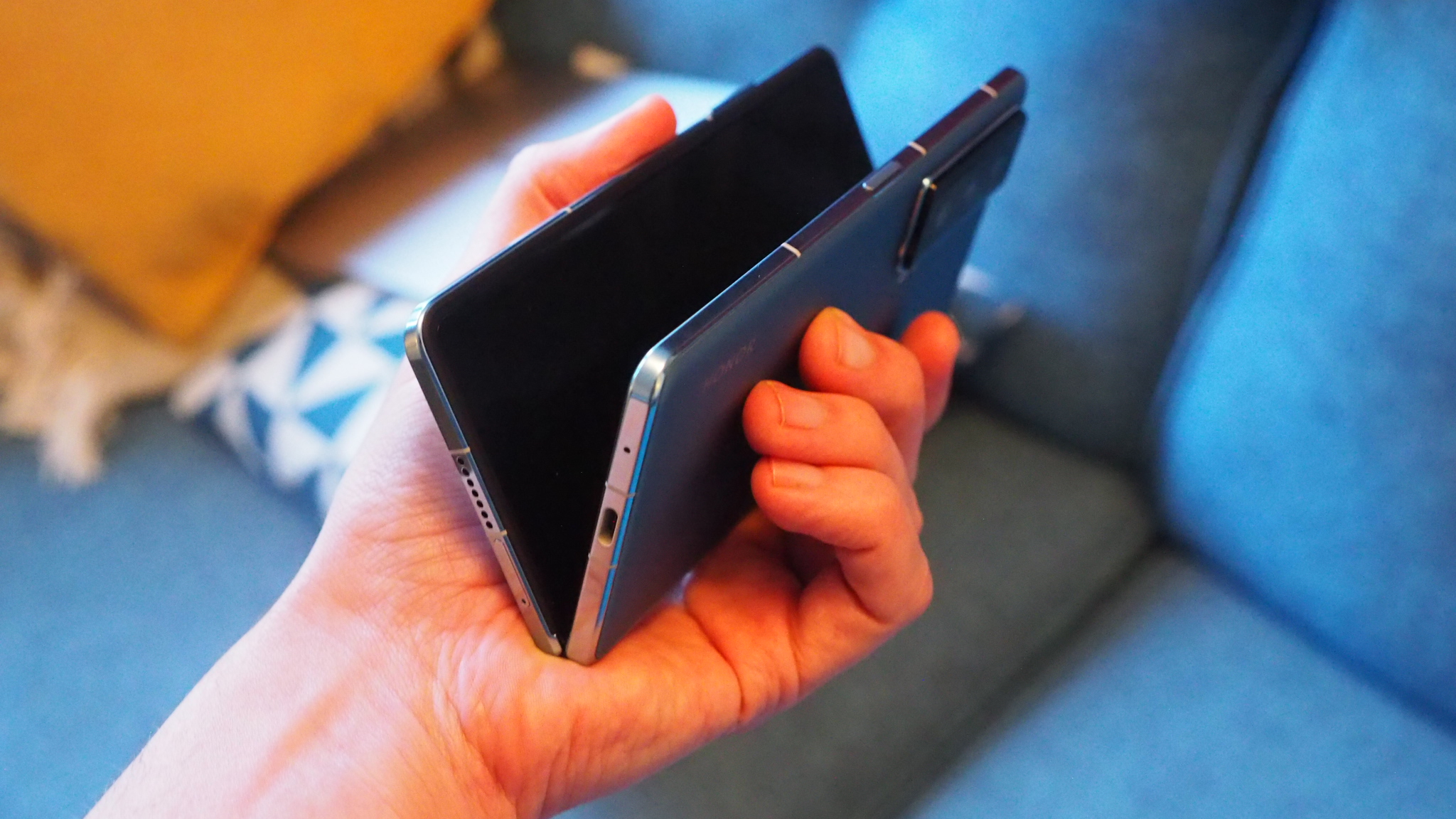
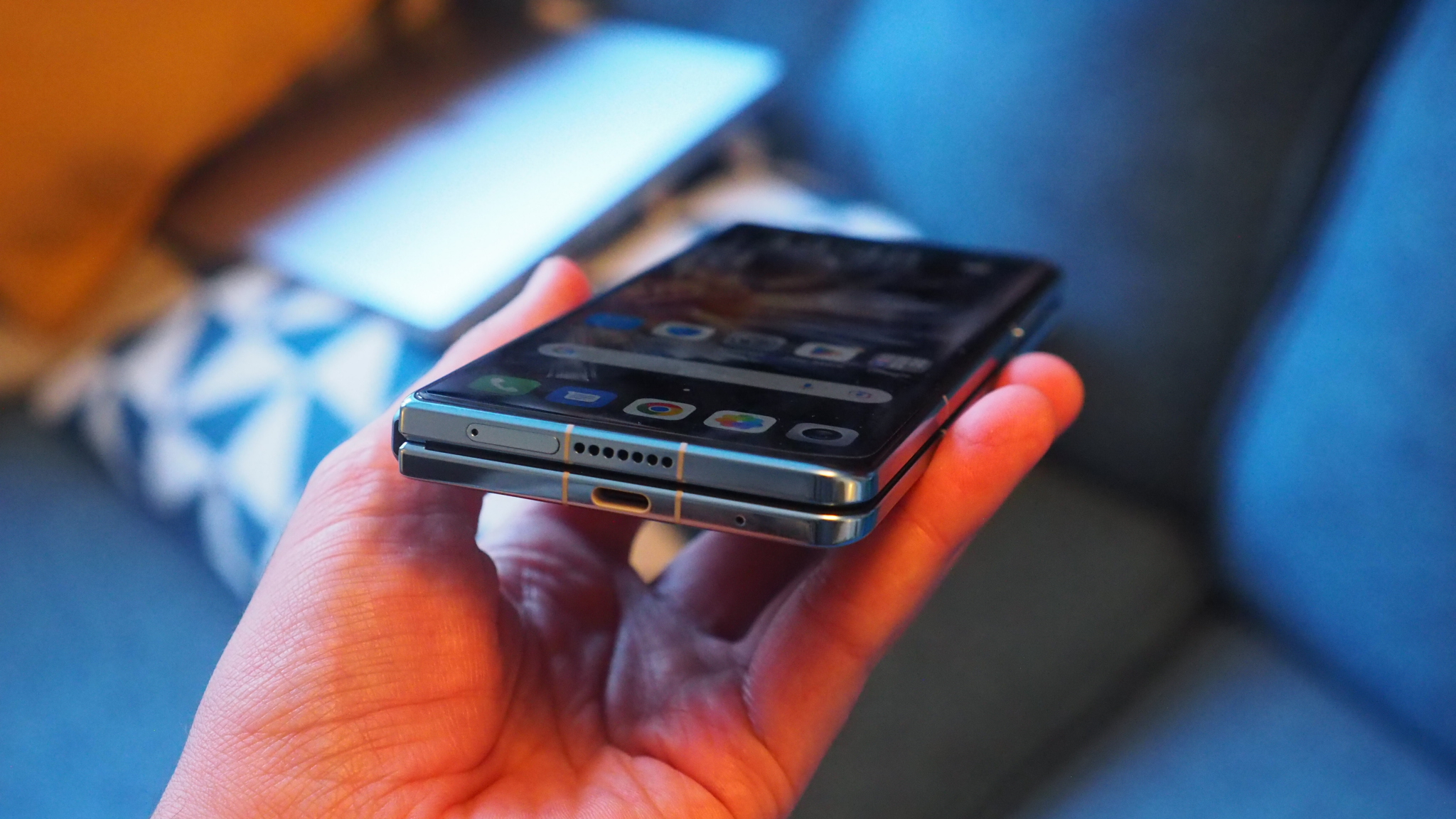
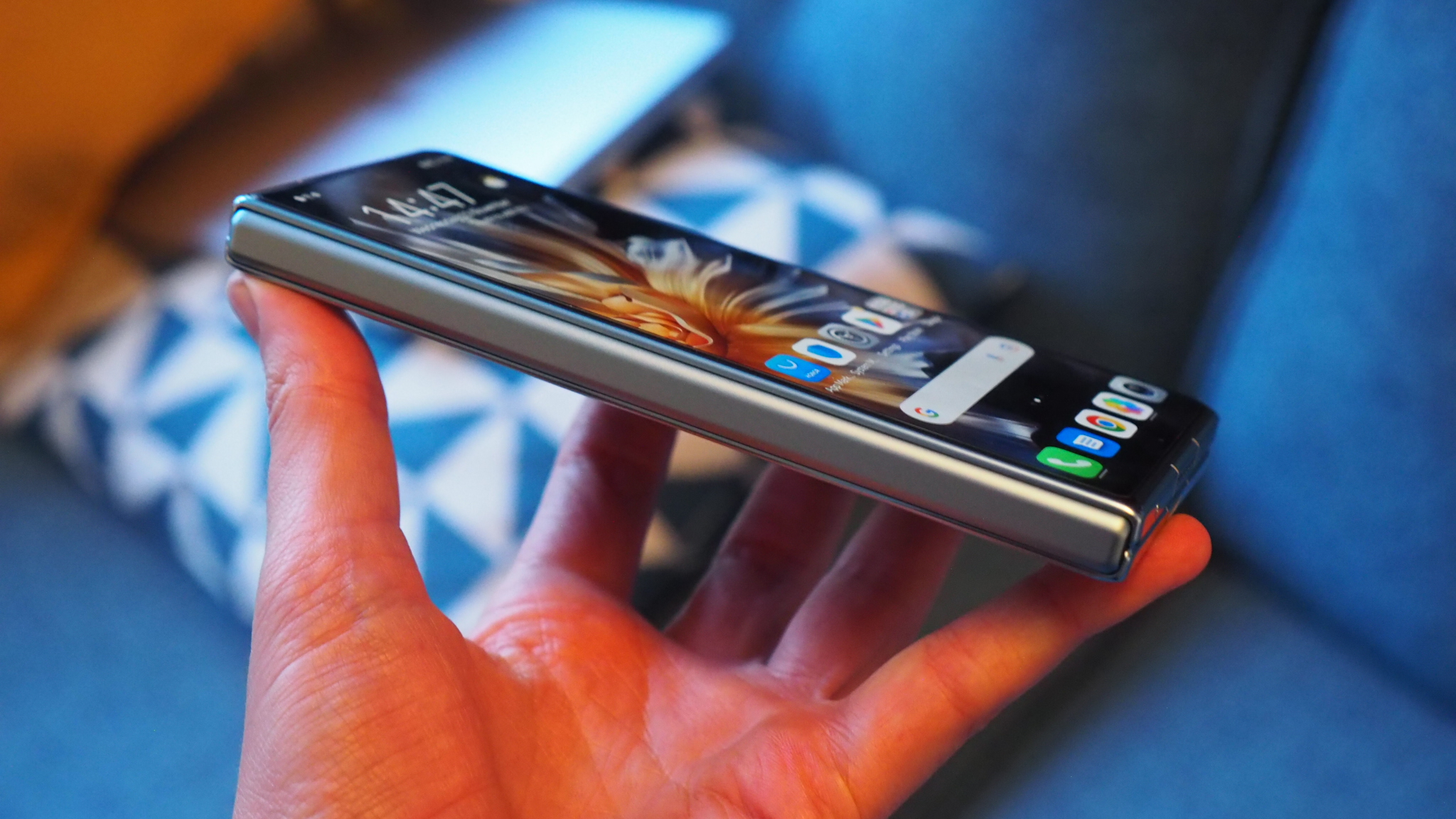
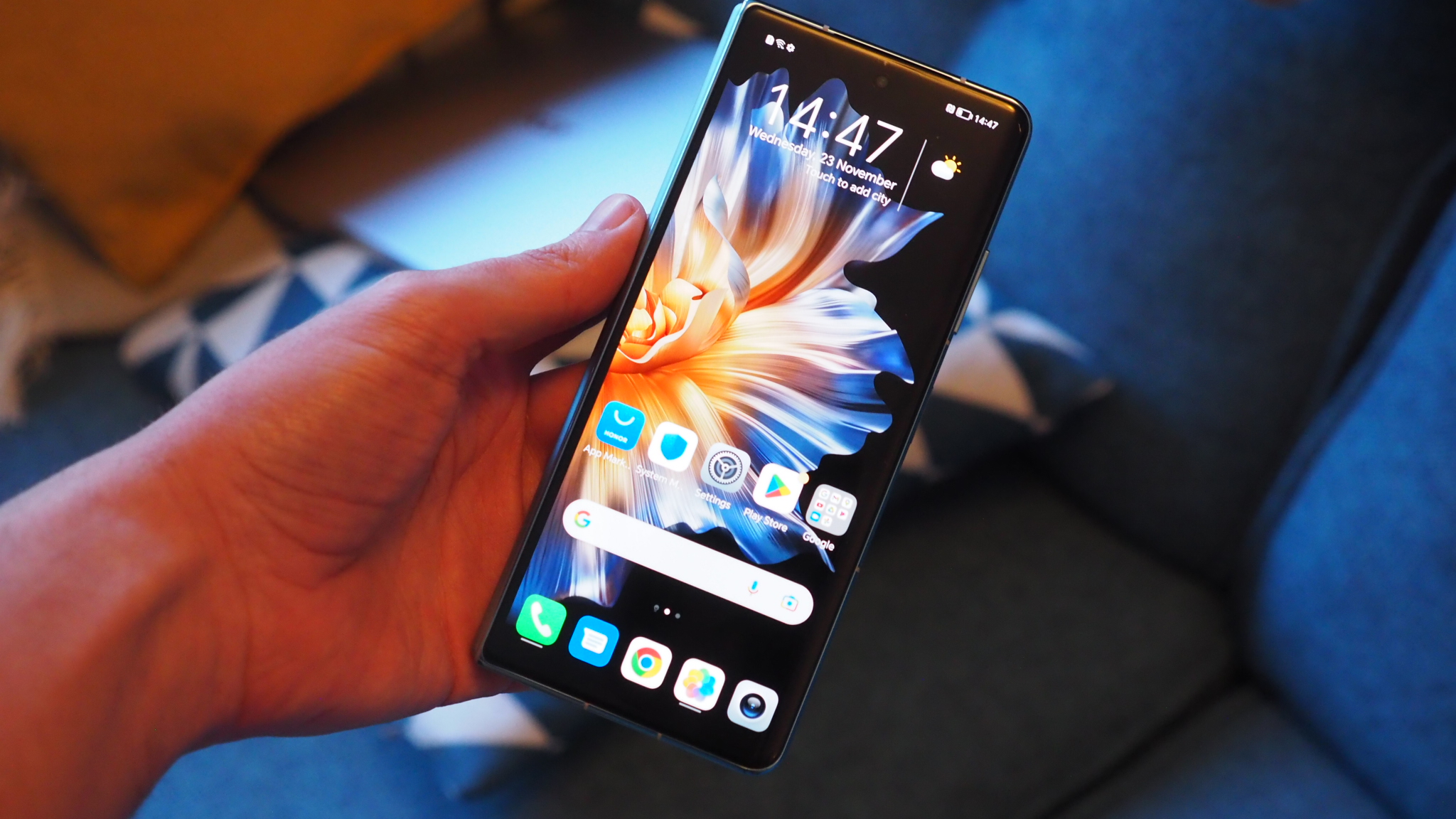
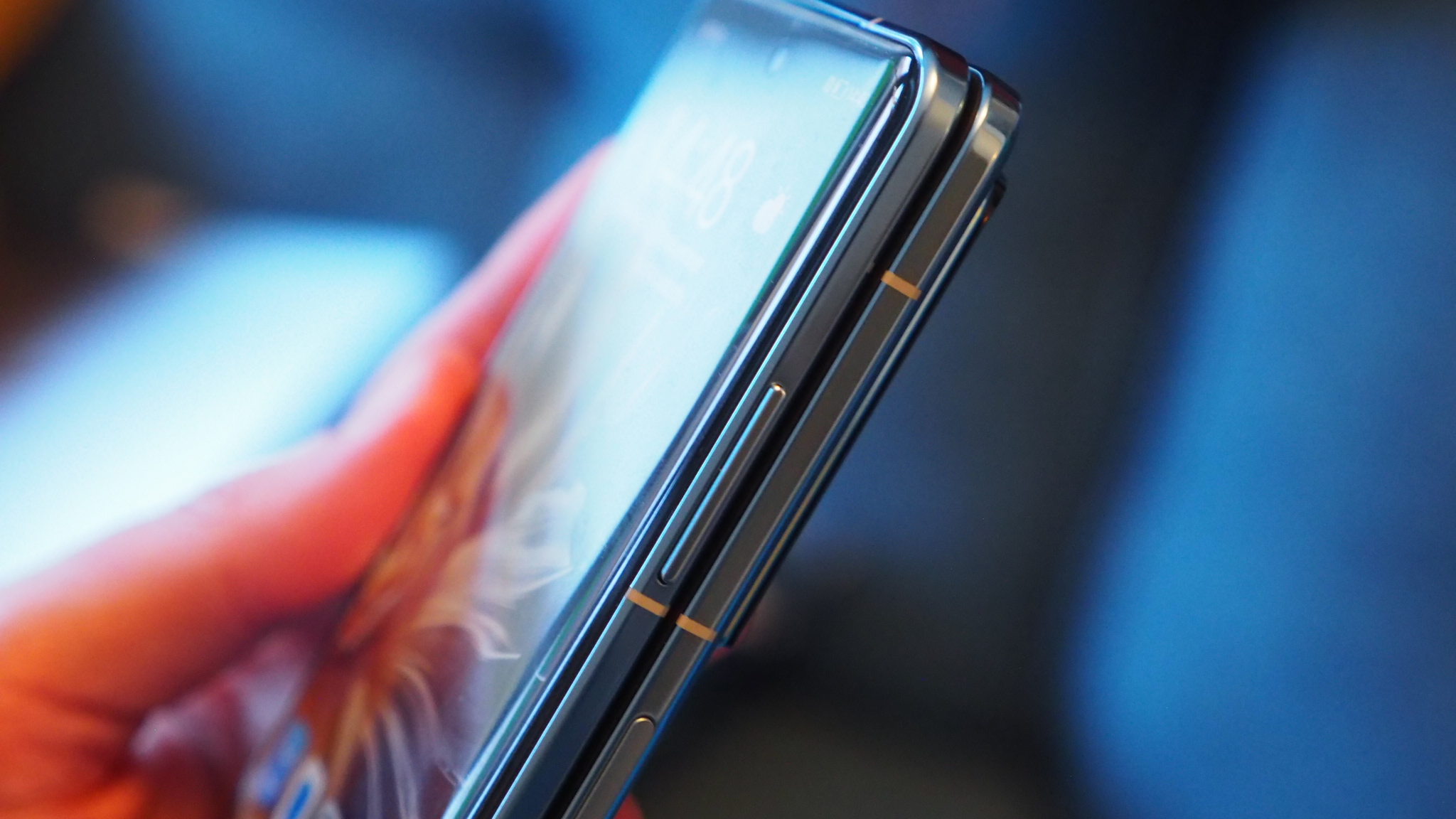
Specifications
Reasons to buy
Reasons to avoid
Buy it if
✅ Cheaper than main rivals: The obvious headline-grab from Honor is that the Magic VS was a few hundred less than its key rivals at launch – a price that we think will only go down!
✅ Big battery: Hitting the 5000mAh mark puts this device up there with among the larger battery life measures in the foldables market.
✅ Plenty of power: It's cheaper, but it's not cut corners when it comes to power – you'll find a familiar Snapdragon chipset and plenty of RAM for smooth operation.
Don't buy it if:
❌ You want a fold-flat display: Much like the Google Pixel Fold, the VS's display doesn't open entirely flat, which goes to enhance the crease in the centre.
❌ Water-resistance is a must: There's no IP rating here, so you don't get the dust/splash/submerge assurance as you'll find on many competitors.
❌ Honor software puts you off: Honor's Magic UI isn't dramatically different to stock Google Android, but it is a little different – and not everyone will be on board with that.
The bottom line
🔎 The Honor Magic VS is the ideal slimmer folding phone, complete with Google Play Store and all the mod cons that you'd expect from such a device. It certainly answers the question of Samsung and Google and is one to watch.
Could it be Magic now? If you're looking for a landmark design then Honor's Magic VS might be the extra little spark you need, as it's a little skinnier than much of the competition.
Design: With a side-aligned camera lump to the rear, the Honor looks like many a flagship phone – except, of course, that it can open and close thanks to its folding design. The hinge ensures a nice and tight closure, although there's no IP rating here like you'll find in some rivals.
Displays: The Honor's front display is a 21:9 aspect ratio, so it's tall and skinny compared to the Google Pixel Fold, but not as super-skinny as the Samsung Galaxy Z Fold series. It sits nicely in the middle as a result. The internal display, meanwhile, is a well specified and large panel – but, like the Google, it doesn't fold fully flat, so the crease is visible.
Performance: The hardware is largely an echo of what you'll find in equivalent 2022 Samsung devices, thanks to Qualcomm's Snapdragon 8+ Gen 1 and a decent chunk of RAM to ensure multi-tasking is easy. The software, which is Honor's Magic UI over Android 13, isn't going to be loved by all – but it's perfectly accommodating.
Battery: With a 5000mAh cell on board, the Honor's battery capacity is similar to a typical flagship phone – and greater than what you'll find from many of the small-cell competition. T3 hasn't fully tested this device yet, however, so can't put a specific figure on it, but we have handled the phone as you can see from the piece linked below...
Read more: Honor Magic VS review
How to choose the best folding phone for you
When it comes to picking a folding phone there's a whole lot of questions to ask yourself, especially if it's your first time in buying such a device as a typical user of more traditional phone formats. Here are the big questions to ask yourself:
Flip phone or foldable? As said up top: there are two main types of folding phones. If you're after something small and pocketable, where the idea of a smaller cover display appeals to act as a preview/alert mechanism to help you lay off so much use of your device, then a clamshell or flip phone is likely to be your best option. But if you find using a traditional phone always leaves you wanting more, then a book-style foldable is the more appropriate option, as it can open out to tablet-like proportions which can help you be more productive with multiple apps or simply enjoy the big-screen experience when it comes to consuming media.
Does brand name matter? At present all folding phones are based around Google's Android system, there's no folding iPhone from Apple. As such, typically all the base operating system stuff behind the scenes is one and the same, so you'll need to be comfortable with Android, or if you're coming from Apple's iOS at least be prepared to get used to it. Manufacturers do add their own software skins over Android, however, which can add various ease-of-use features or additions, and you may have a preference as to which you prefer – this is hard to know without practical testing, of course. Samsung is often seen as the most thorough. Motorola is the closest to Google's stock Android (bar Google itself, of course) with lots of open access features. Oppo does things a little more iPhone-like overall. And then the big exception to the rule is Huawei, as this doesn't permit access to Google Play Store and, therefore, apps via this route are largely restricted (making it a niche proposition in the West for most people).
Display sizes: The other obvious question when it comes to foldables is what sort of display size are you looking for? A clamshell flip phone is obviously more pocketable, but the screen isn't bigger than a traditional phone as a result when unfolded. Larger book-like foldables obviously offer much larger internal displays, but consider whether you truly need this or not. Also consider the screen's aspect ratio, especially on the exterior, as Samsung takes the skinnier option, while Google goes more traditional in a wider panel. Whichever you choose, however, keep in mind that in folded form either choice will be about twice as thick as a traditional phone, which isn't going to suit everyone.
Other key features: In addition to the software there are other key features to consider. Is there waterproofing? Will the operating system deliver what you need? Can you cope with the smaller battery life of a foldable compared to a traditional phone? In the case of Samsung, too, the Z Fold series is the only mainstream foldable to offer stylus support via its sold-separately S Pen, which makes it a whole different proposition for some users – and that's very much worth keeping in mind.
Price point: Then, of course, there's price. Are you ready to take the plunge in spending more to jump into the land of folding phones? Can you see on in store first to get a feel as to whether it'll feel right for you to spend so much cash? A clamshell flip phone is likely to cost you less overall, but folding phones still come with a premium that needs serious consideration.
Compromises: Lastly, there's a few points to take note: all folding phones need to use different materials and screen coverings compared to traditional devices. As such you'll often find fingerprinting is more visible and distracting. Furthermore, folding displays unavoidably present some degree of 'crease' across the fold, some of which are more prominent than others. Certainly something to keep in mind, as some people find these irks too bothersome to live with, whereas others barely notice them as issues at all.
How we test the best folding phones
There's a lot to consider when reviewing one of today's best folding phones, but key to T3's testing is that our reviewers live with the device as if they're their own, to get a full understanding of day-to-day living with these products.
In addition there are key areas that we test. Firstly, we judge the phone from a build quality perspective. How does it feel, has it improved generation to generation, is there water-proofing and other such features? The kind of features you'll want to know about, in particular context to 'what's new?' if it's an updated product in a given line-up.
Next we review the display, or in the case of folding phones, displays plural. How do they look? Do they fold flat? Are there prominent crease issues? Any other nitpicks to be aware of after extended use both inside and out? What about in context to other folding phones on the market when it comes to best of the best?
Then we test out the hardware. Beyond benchmarking this is down to how things perform in the real world. From user experience, to battery testing, to software highs and lows, and how this all fits into the overall package compared to what else is out there.
The last part of the puzzle is usually the product's cameras. This is more and more important for users, so that's why we live with these handsets as if they're our own, shooting in various conditions to test out the features and the overall results. If there are areas to improve upon we'll shout it out.
Only then, once we've given each device a true lived-with test over some days or even weeks, will we award a score to a phone, with the elusive 5-stars being the highest rank a product can get.
Reviewer Panel

I've been testing folding phones since their inception and there's not a single one in this best-of list that I've not handled in person. Most I've lived with for some time as my own and then reviewed, so I've got the inside line on what's good, what's not, and which you would (or, indeed, wouldn't) want to buy.
Sign up to the T3 newsletter for smarter living straight to your inbox
Get all the latest news, reviews, deals and buying guides on gorgeous tech, home and active products from the T3 experts

Mike is T3's Tech Editor. He's been writing about consumer technology for 15 years and his beat covers phones – of which he's seen hundreds of handsets over the years – laptops, gaming, TV & audio, and more. There's little consumer tech he's not had a hand at trying, and with extensive commissioning and editing experience, he knows the industry inside out. As the former Reviews Editor at Pocket-lint for 10 years where he furthered his knowledge and expertise, whilst writing about literally thousands of products, he's also provided work for publications such as Wired, The Guardian, Metro, and more.
-
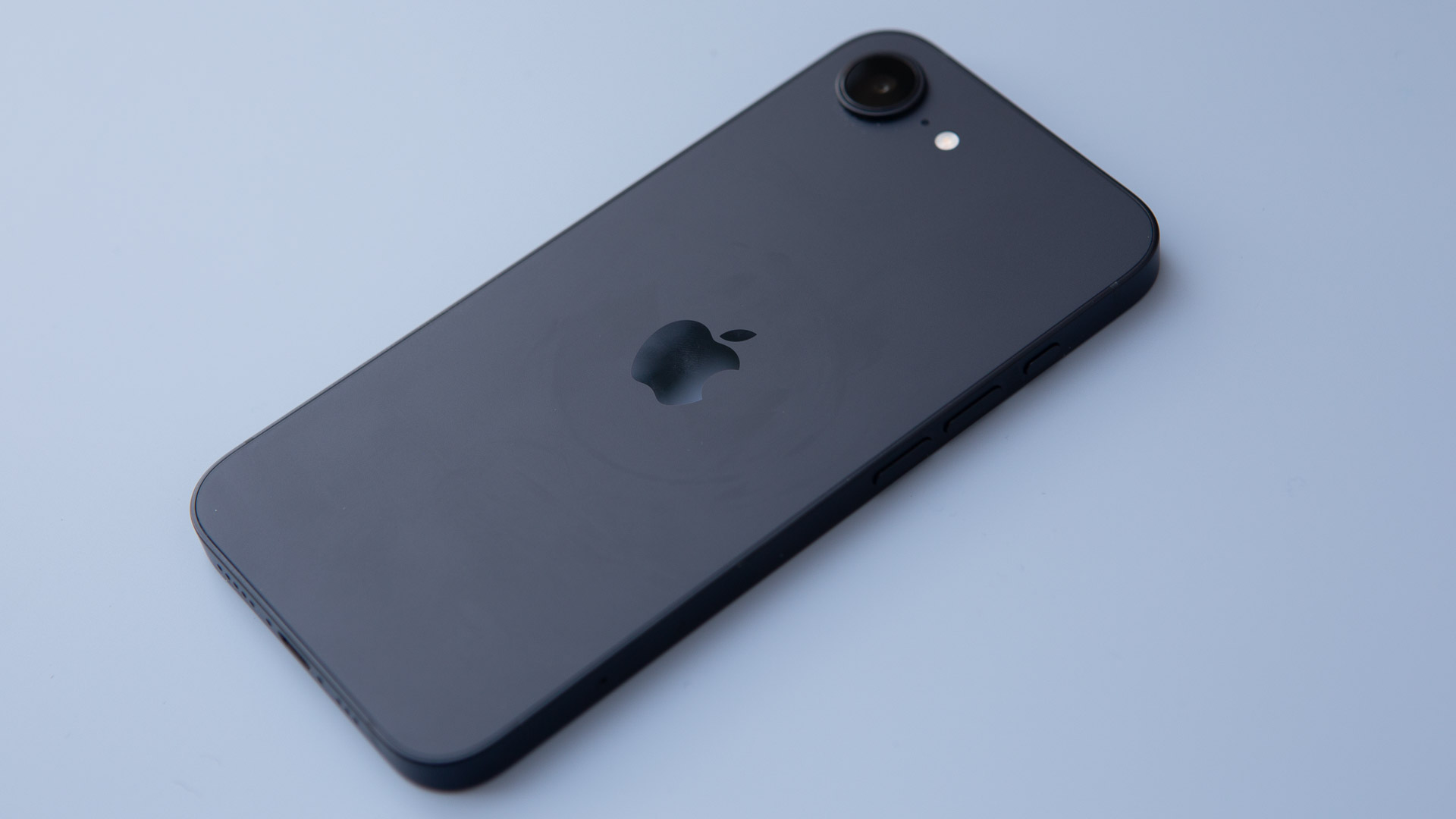 Apple's iPhone just did something it never has before
Apple's iPhone just did something it never has beforeThis is an unprecedented event for the iPhone
By Sam Cross
-
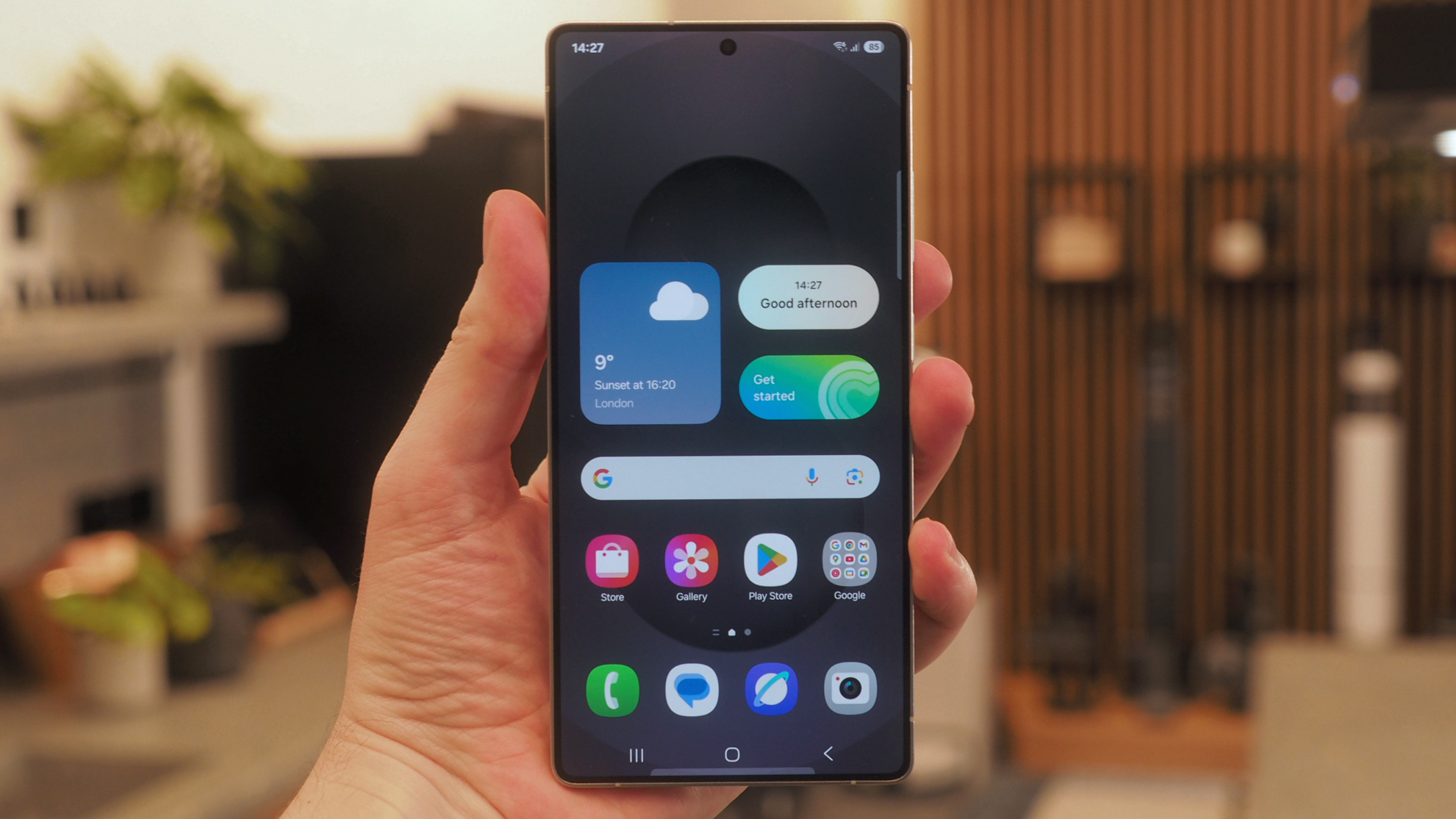 Samsung hits pause on Android 15 rollout, but your phone might be lucky
Samsung hits pause on Android 15 rollout, but your phone might be luckyYour delayed Samsung One UI 7 software update could be delayed some more
By Chris Hall
-
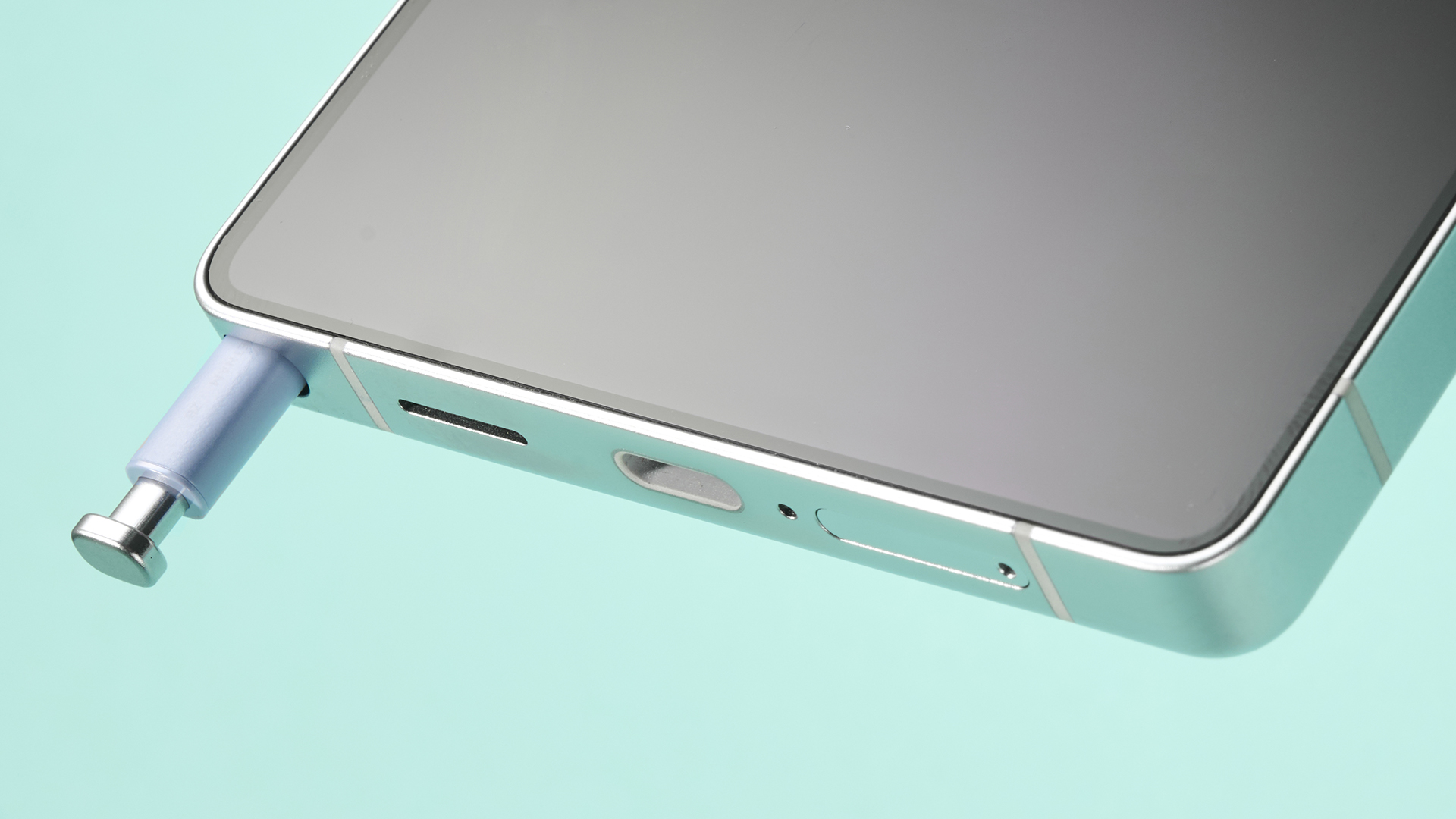 Samsung Galaxy devices could lose a unique feature after all
Samsung Galaxy devices could lose a unique feature after allThat's despite recent claims to the contrary
By Sam Cross
-
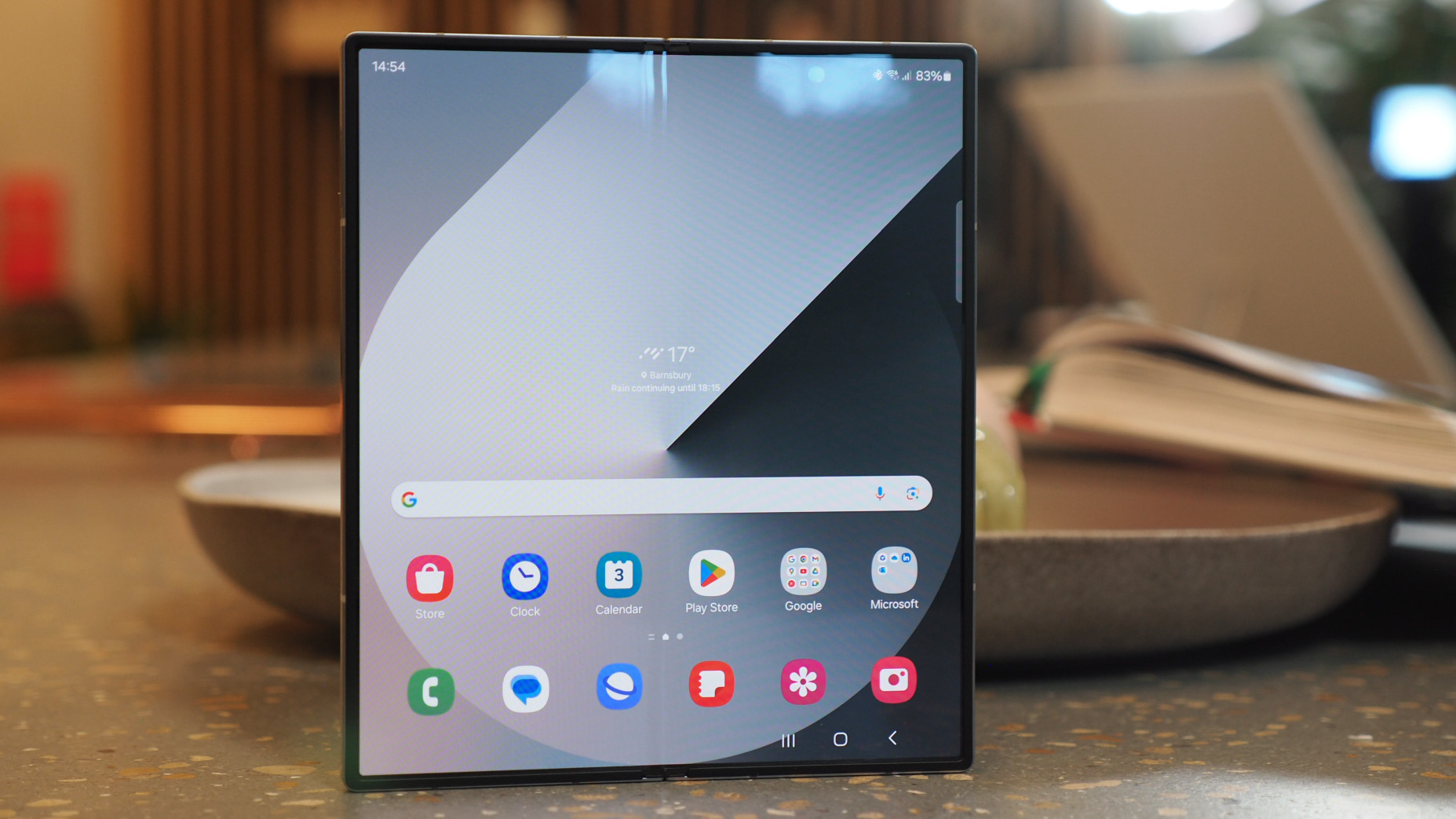 Samsung Galaxy handsets could get a massive free software upgrade as soon as this summer
Samsung Galaxy handsets could get a massive free software upgrade as soon as this summerThat's way sooner than expected
By Sam Cross
-
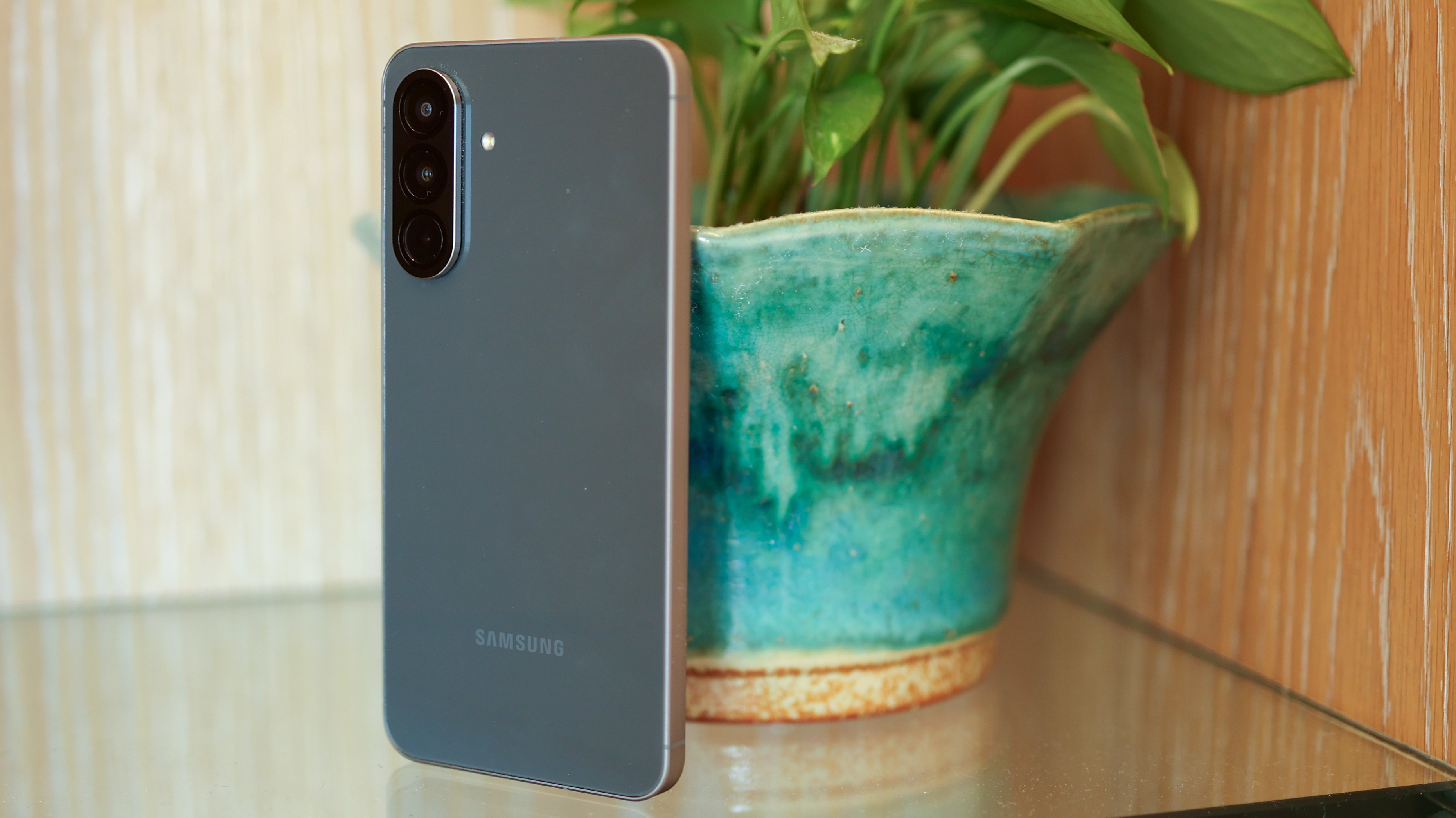 Samsung's affordable phones get Awesome Intelligence upgrade for free
Samsung's affordable phones get Awesome Intelligence upgrade for freeAnd its available to install right now
By Britta O'Boyle
-
 Samsung Galaxy S25 Edge could launch sooner than expected, because of space and time
Samsung Galaxy S25 Edge could launch sooner than expected, because of space and timeYou don't have to be a Doctor to realise why
By Britta O'Boyle
-
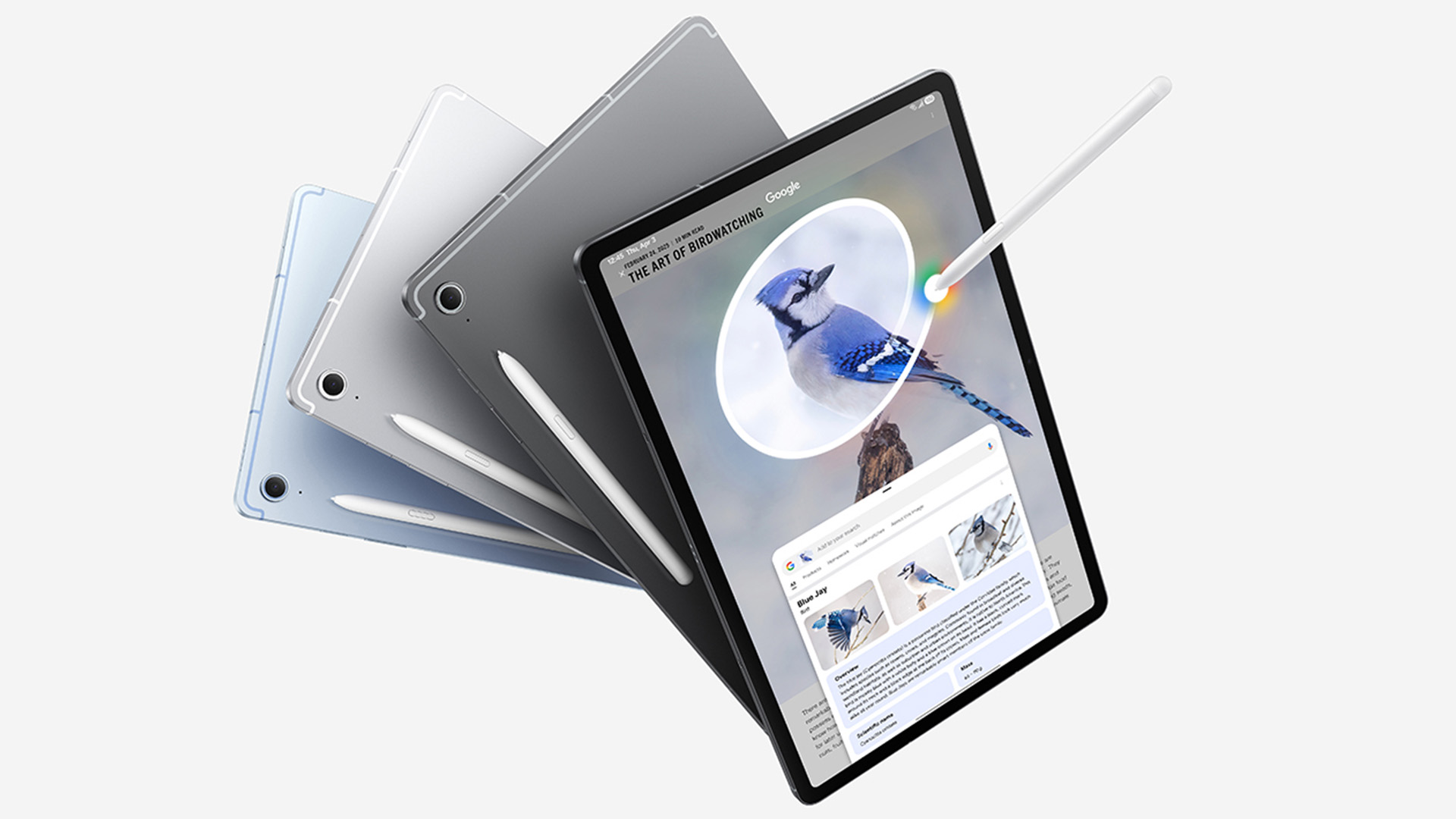 The Galaxy Tab S10 FE might be Samsung's best-value tablet yet
The Galaxy Tab S10 FE might be Samsung's best-value tablet yetA great new semi-premium entrypoint
By Max Freeman-Mills
-
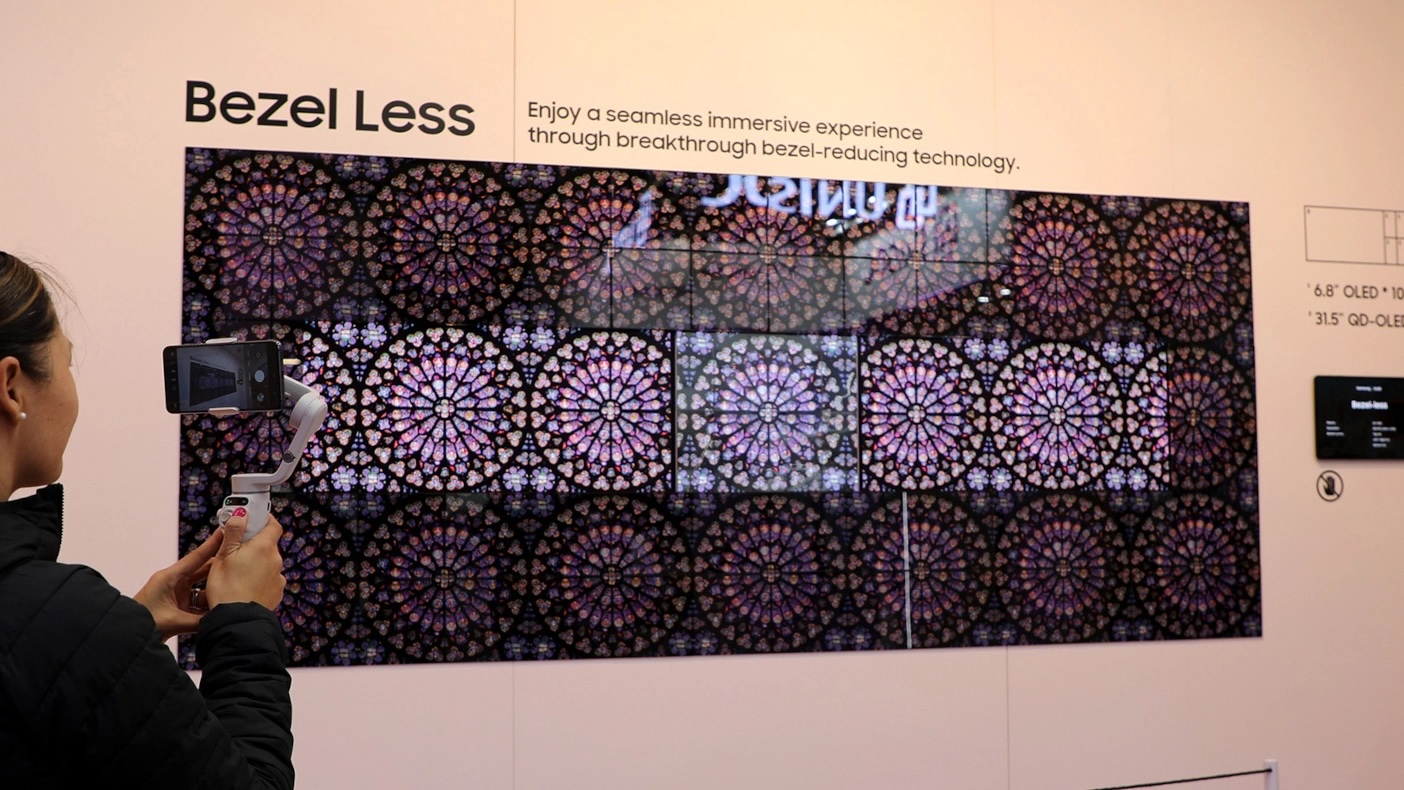 Samsung's bezel breakthrough could slash the cost of big-screen 8K OLED TVs
Samsung's bezel breakthrough could slash the cost of big-screen 8K OLED TVsMassive TV panels are really hard to make – so why not just tile multiple smaller ones instead?
By Carrie Marshall
